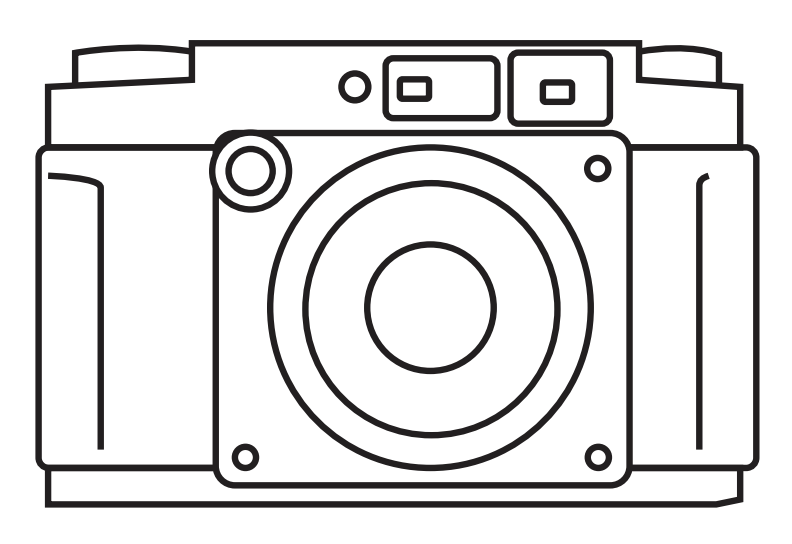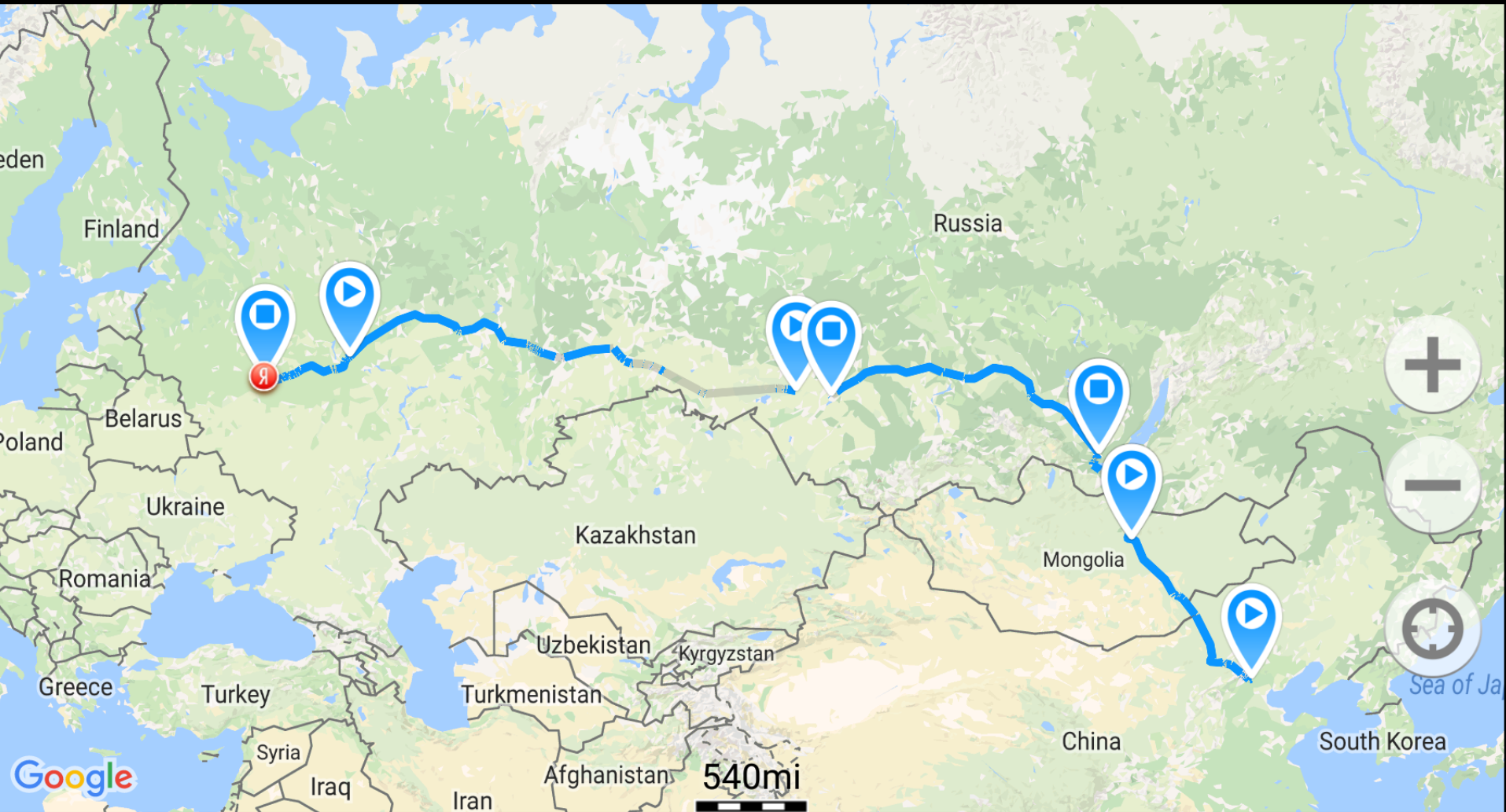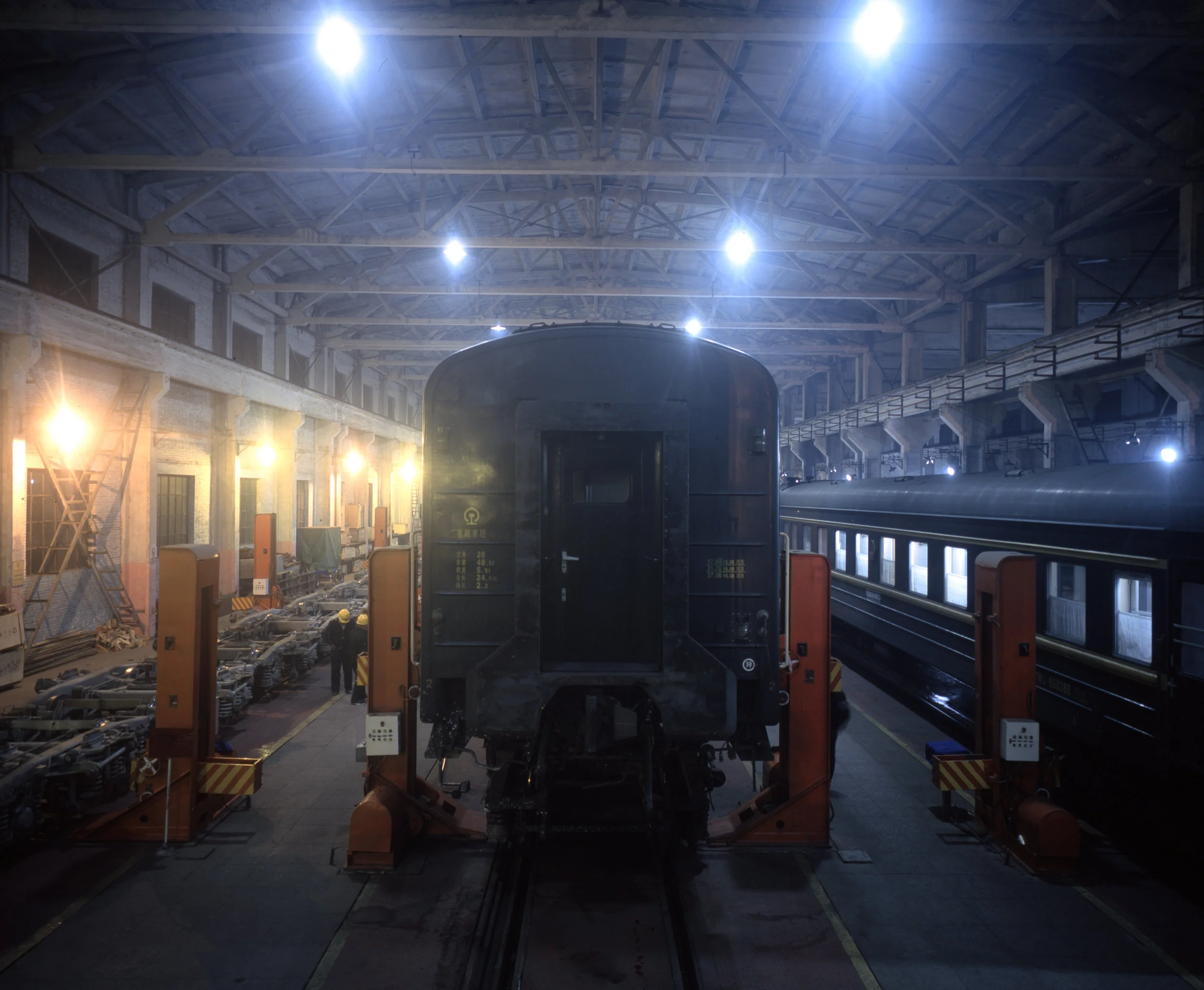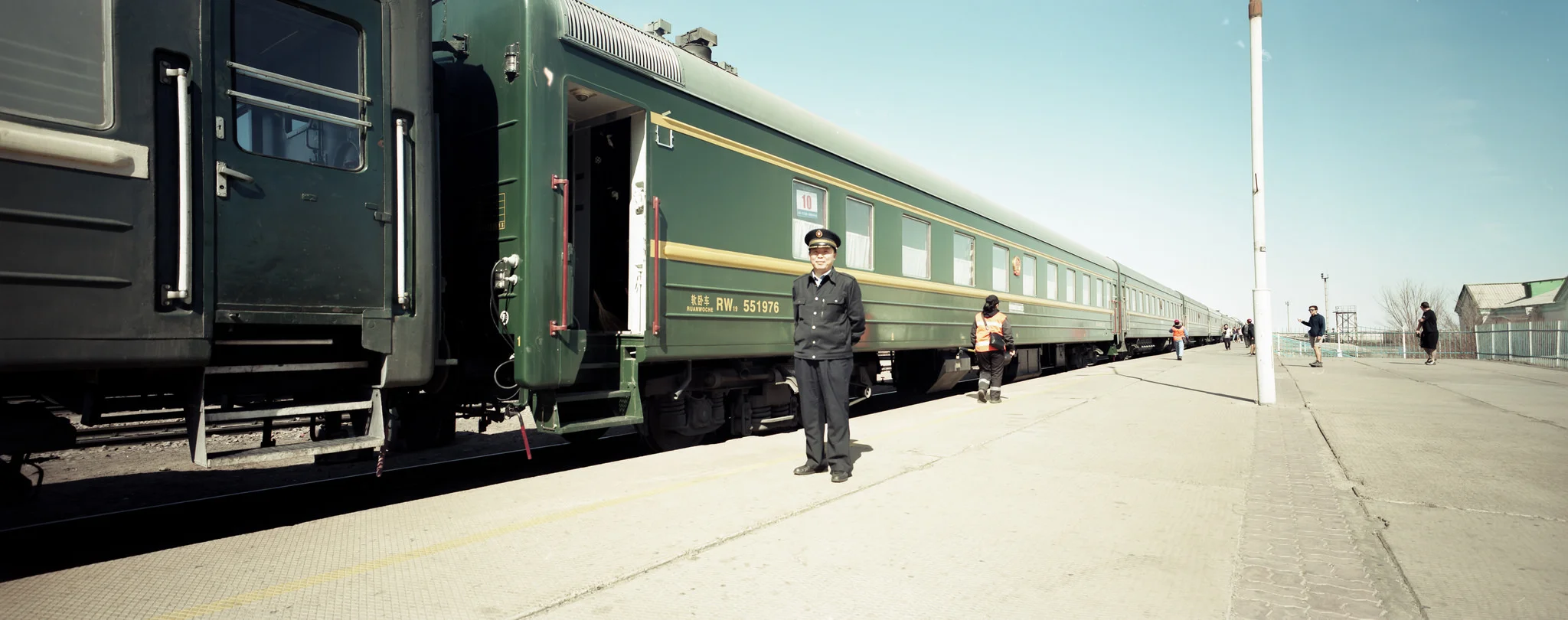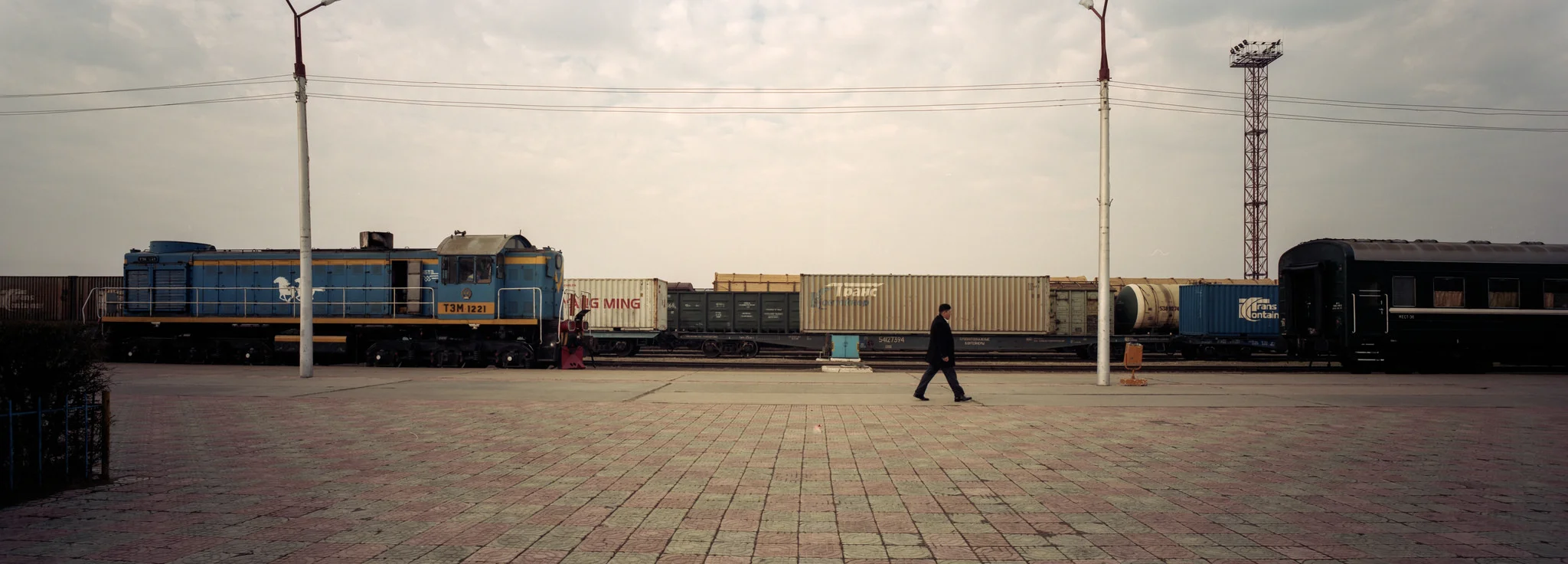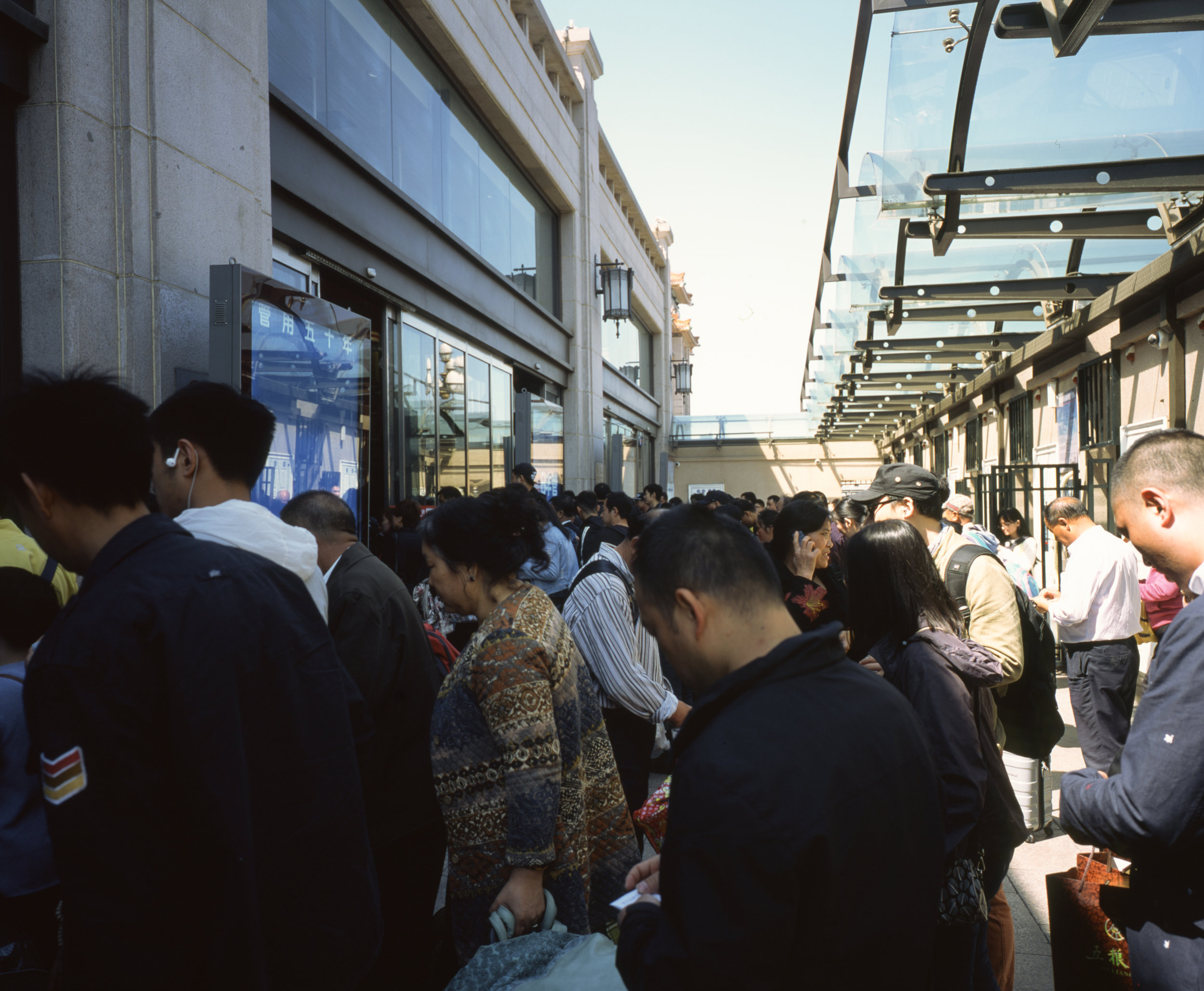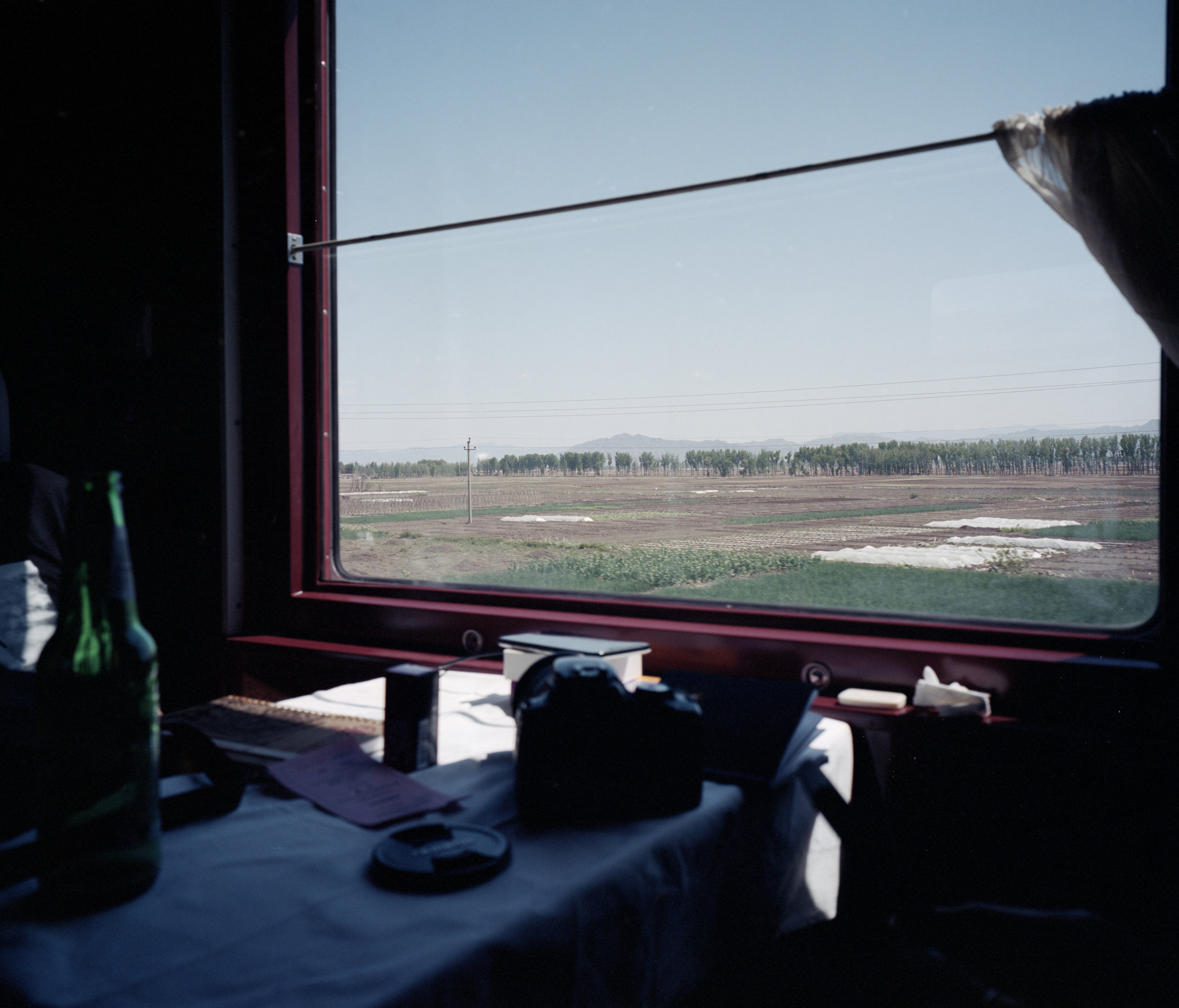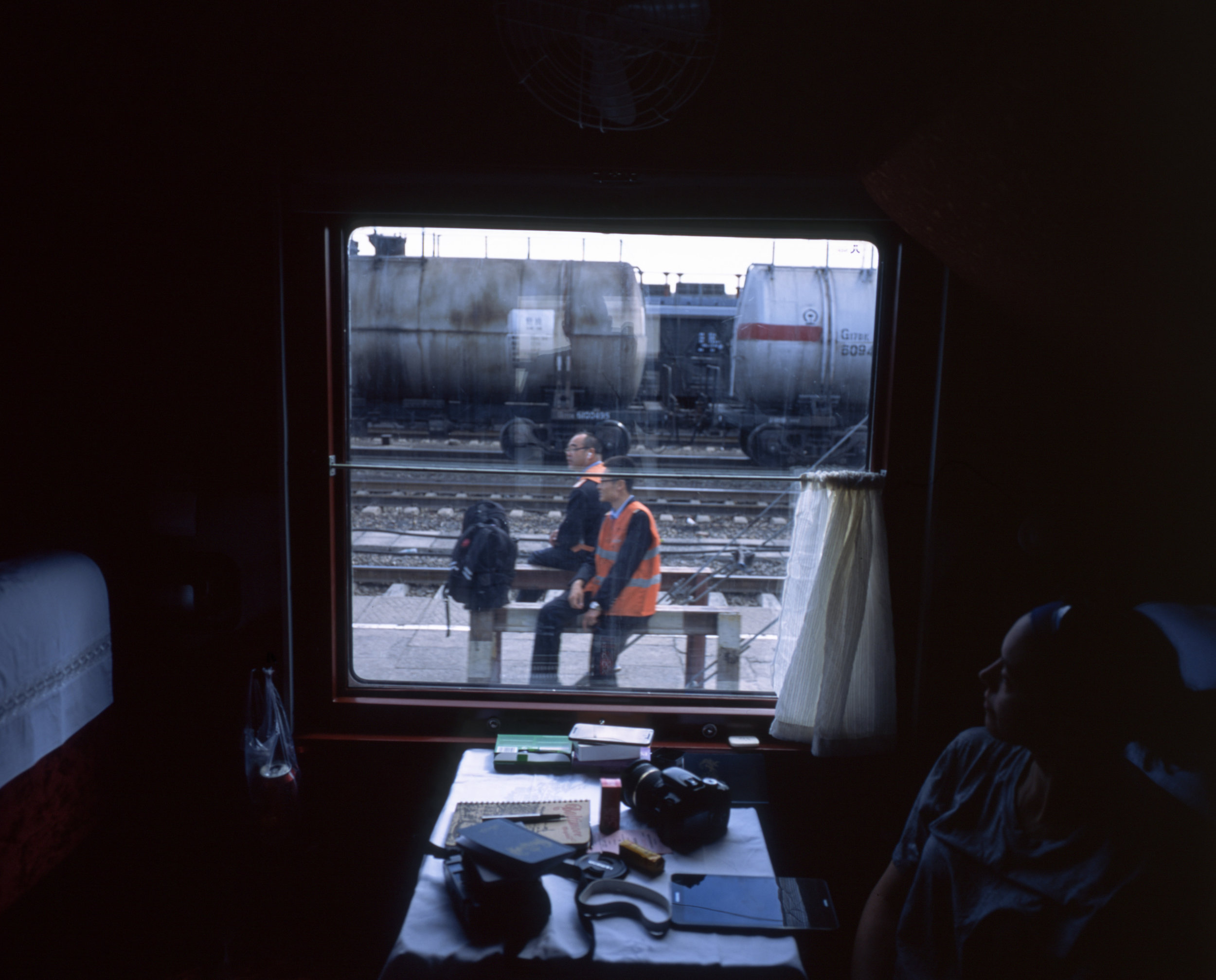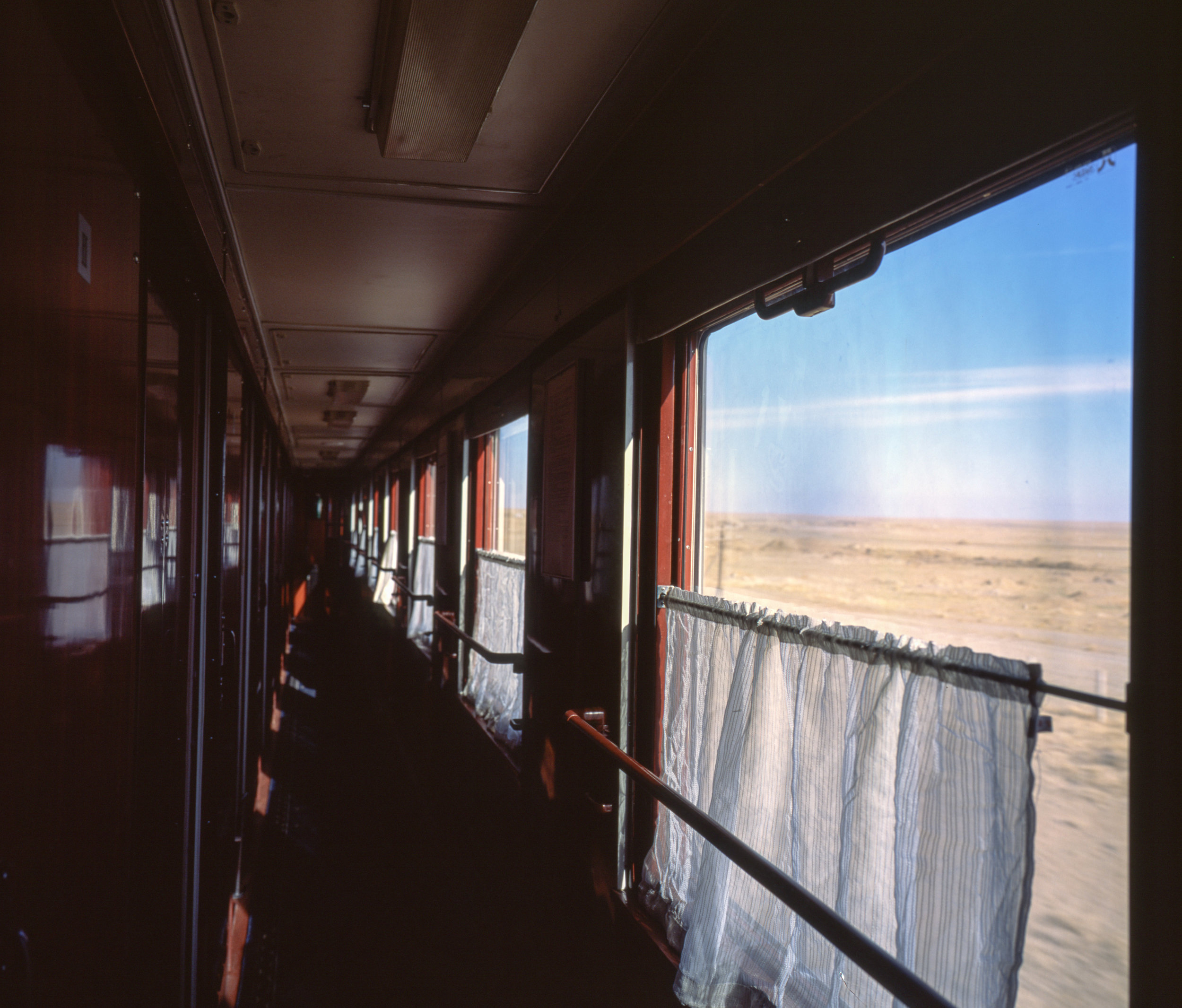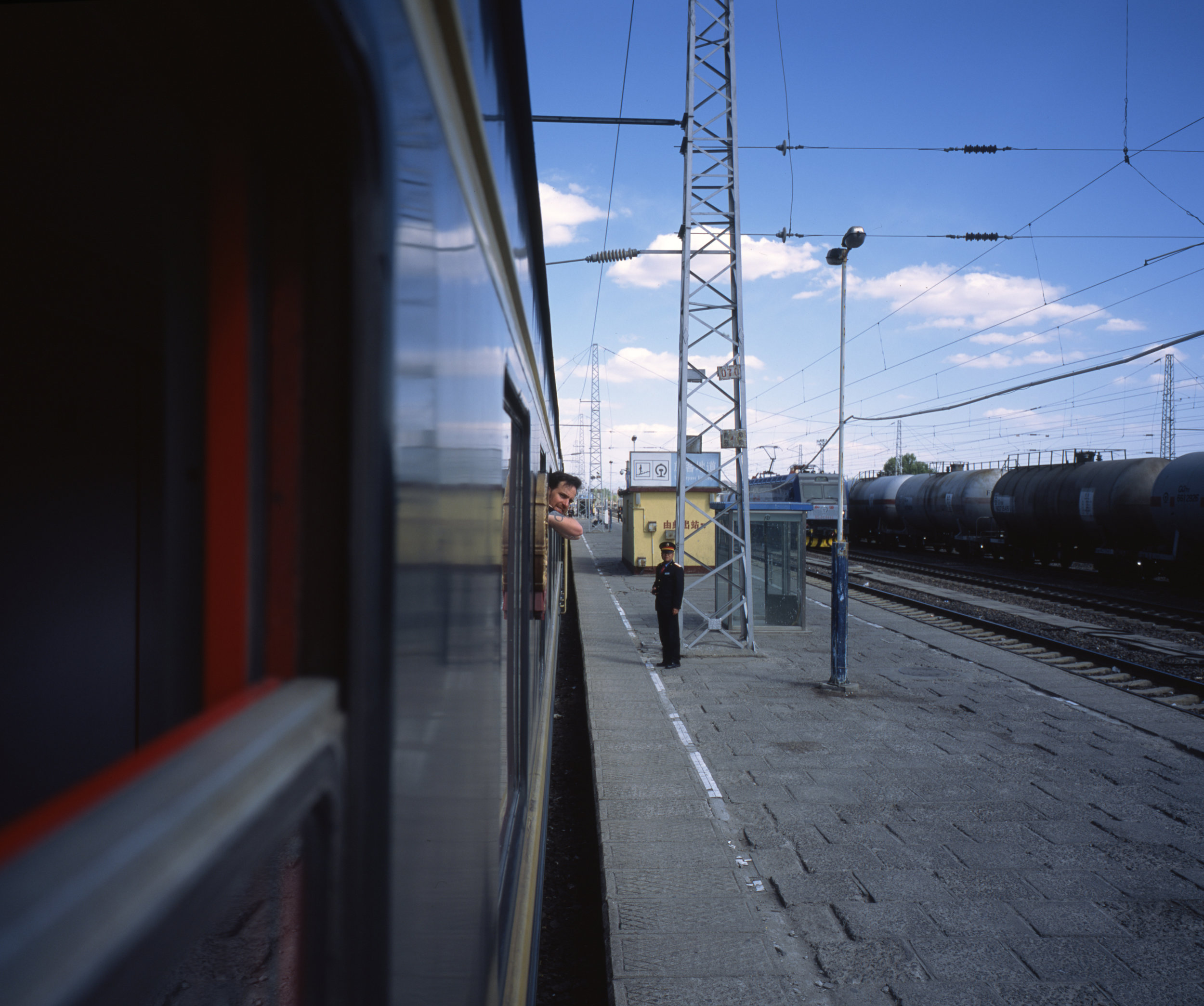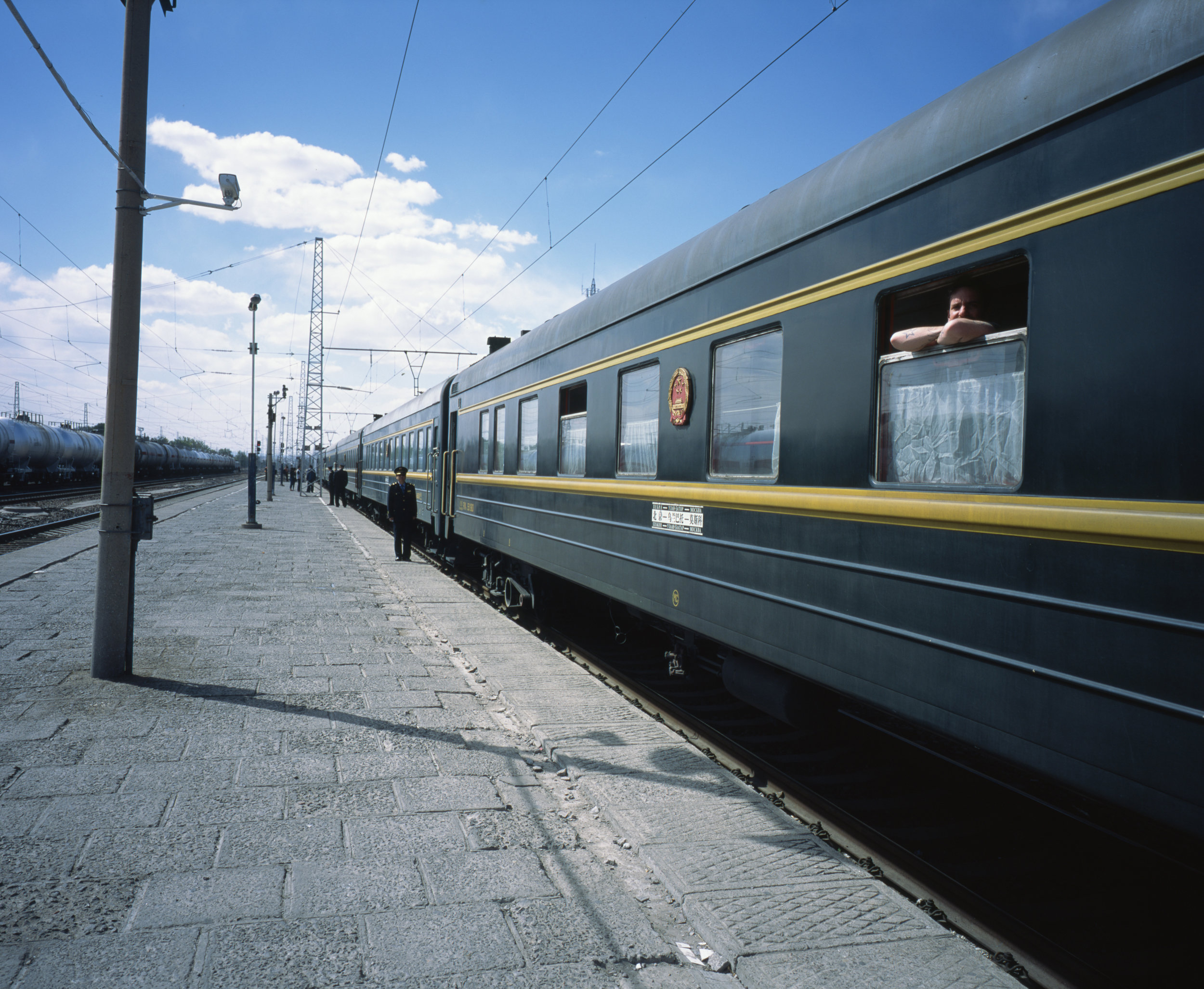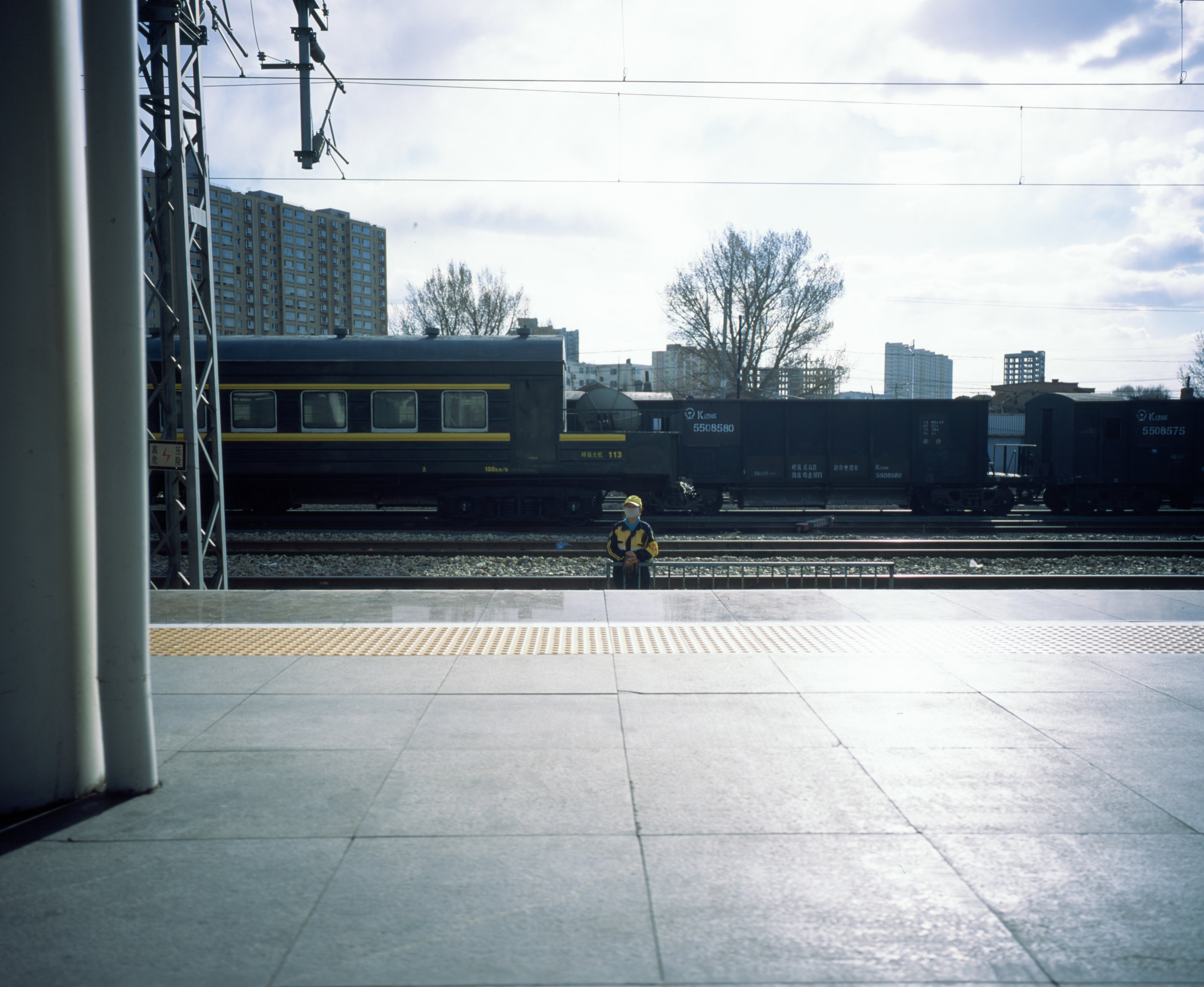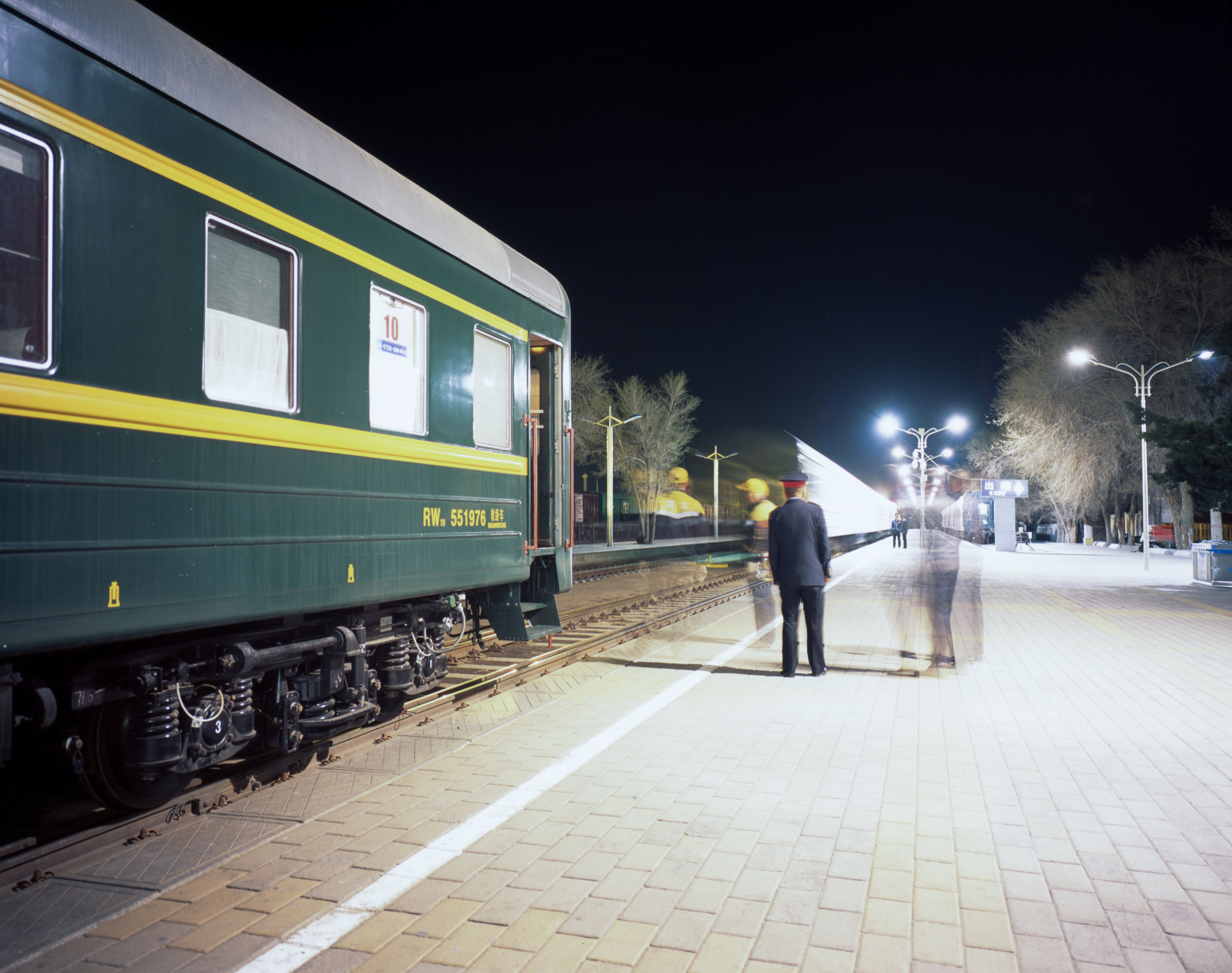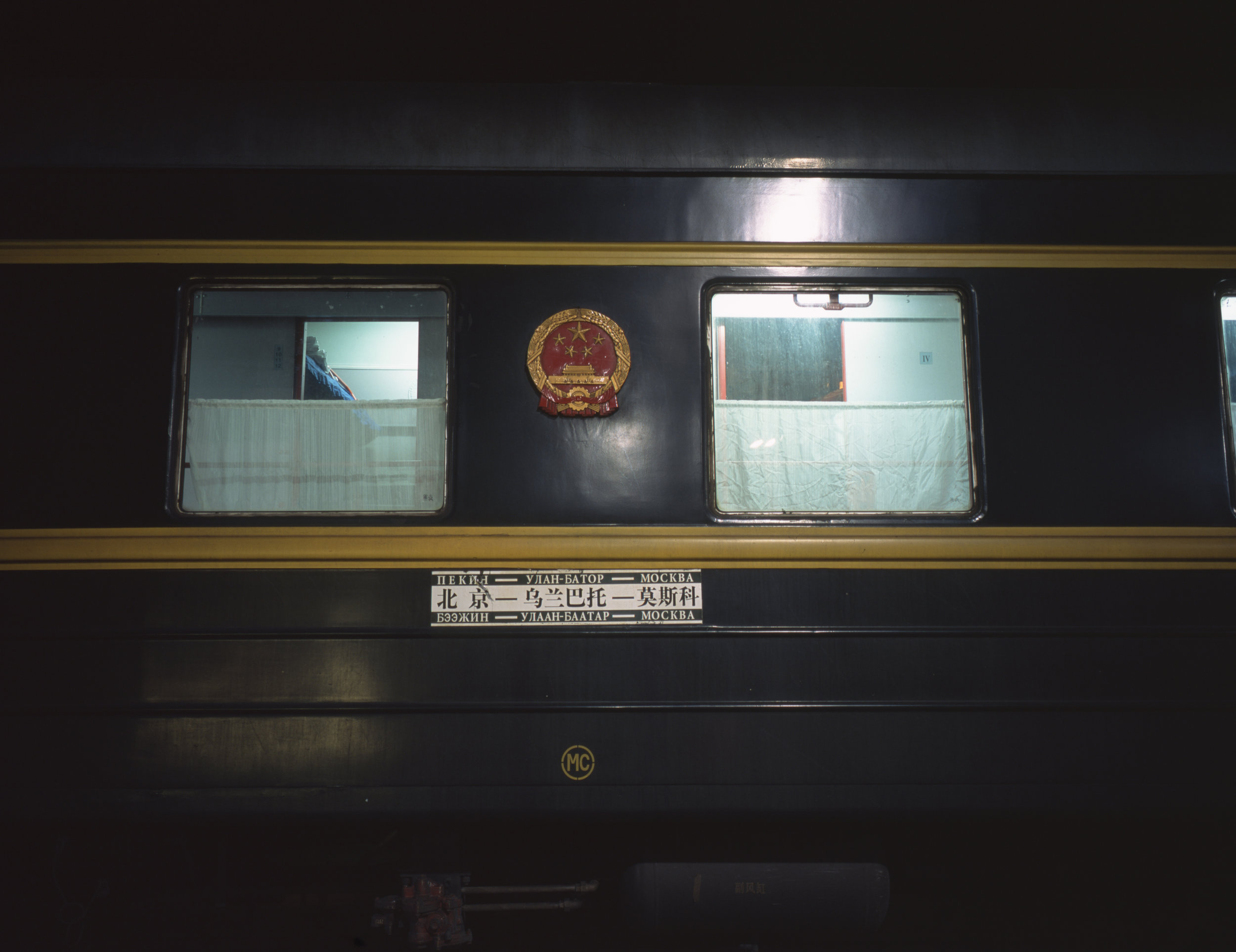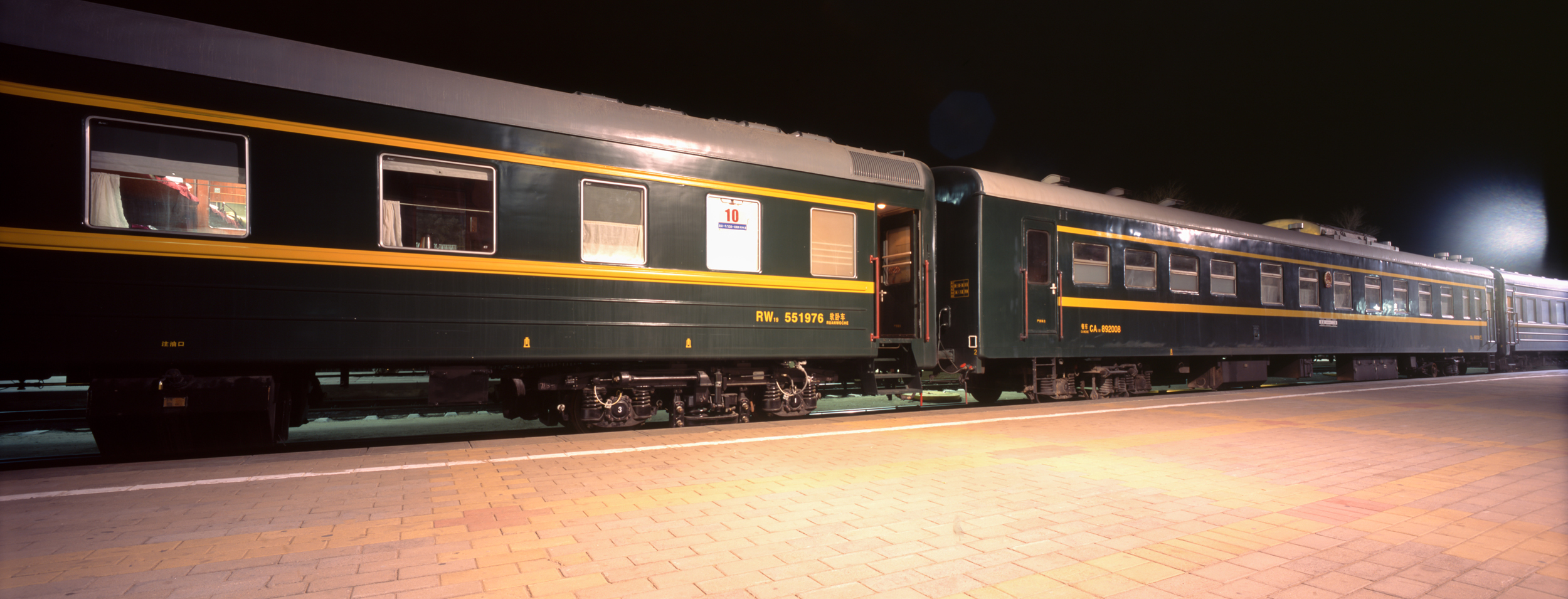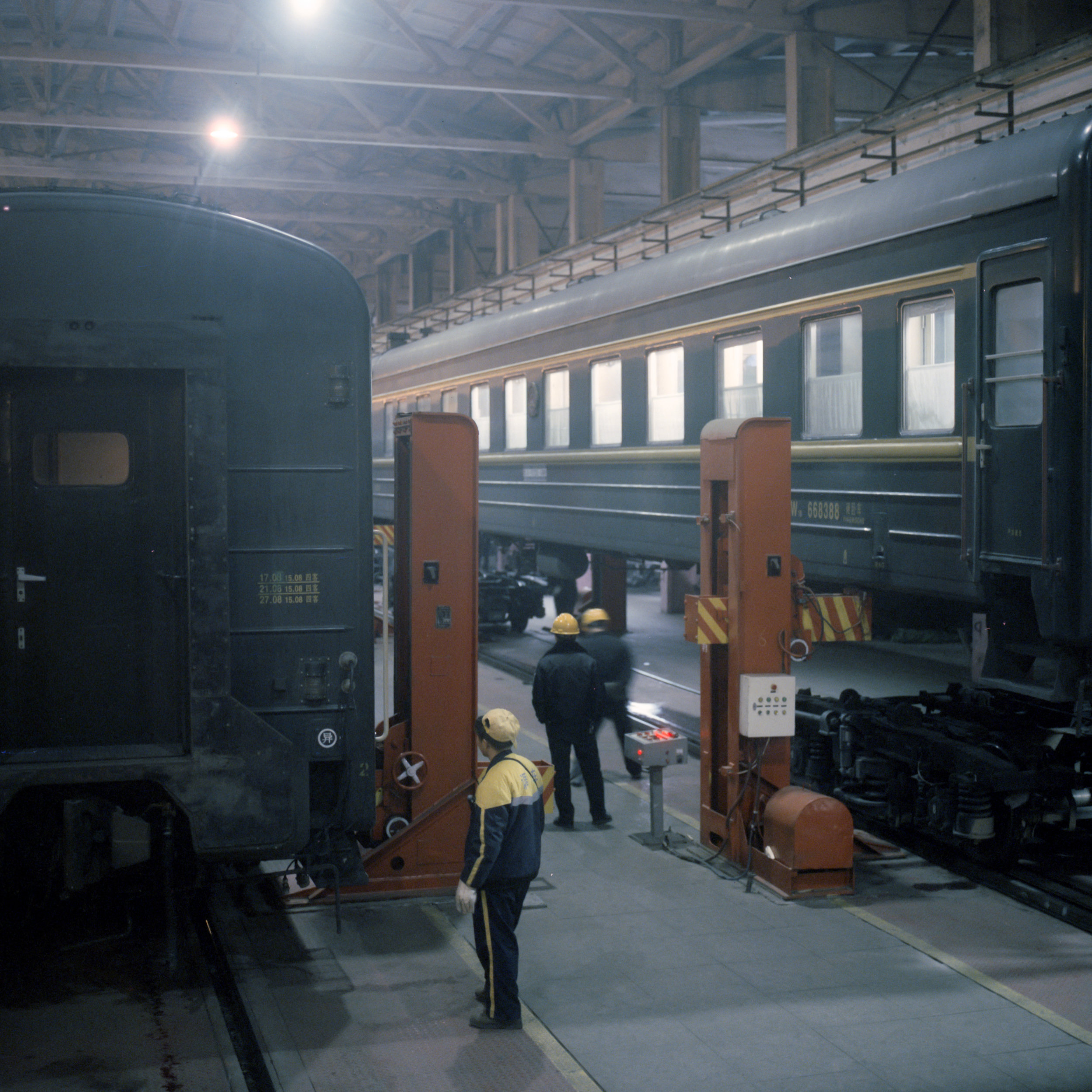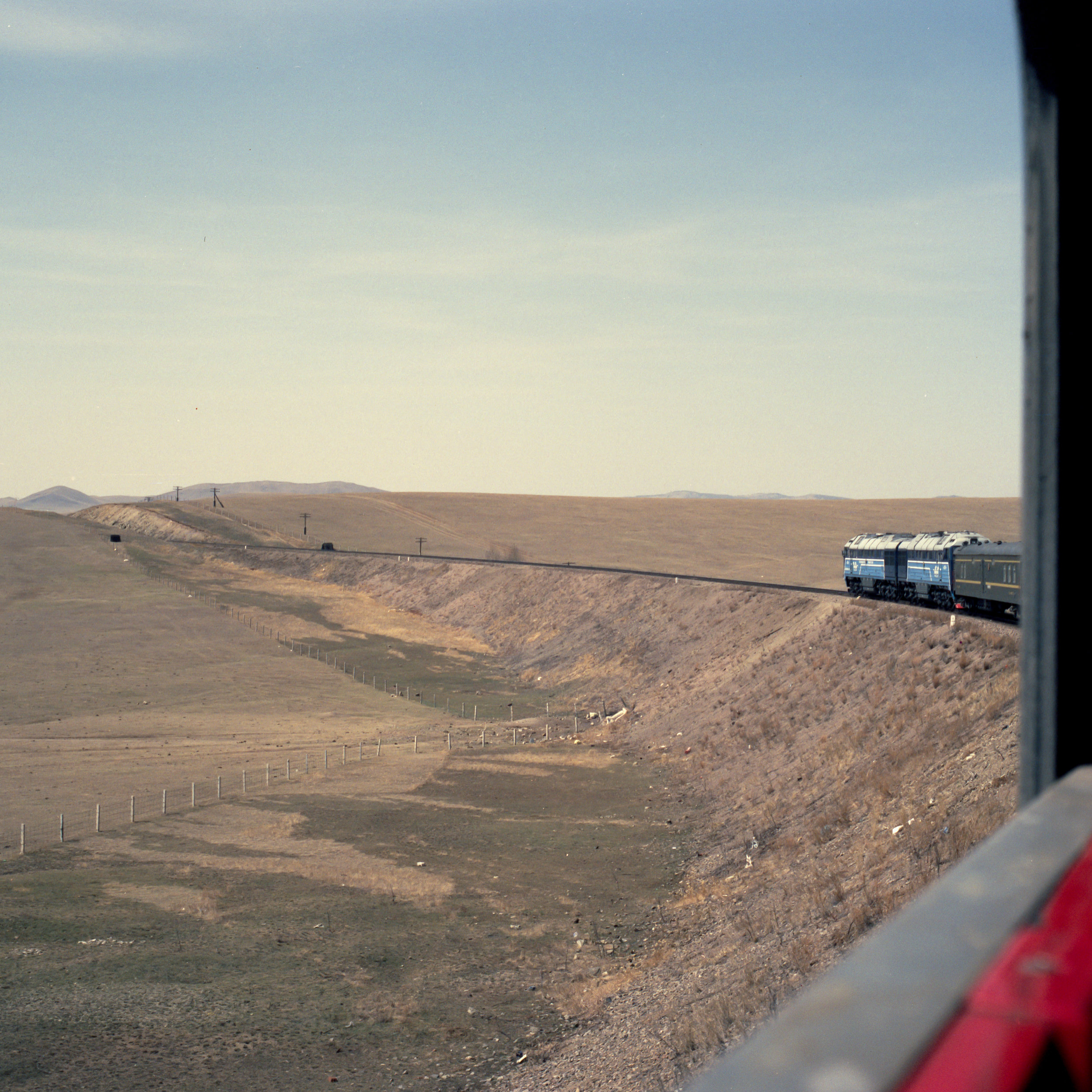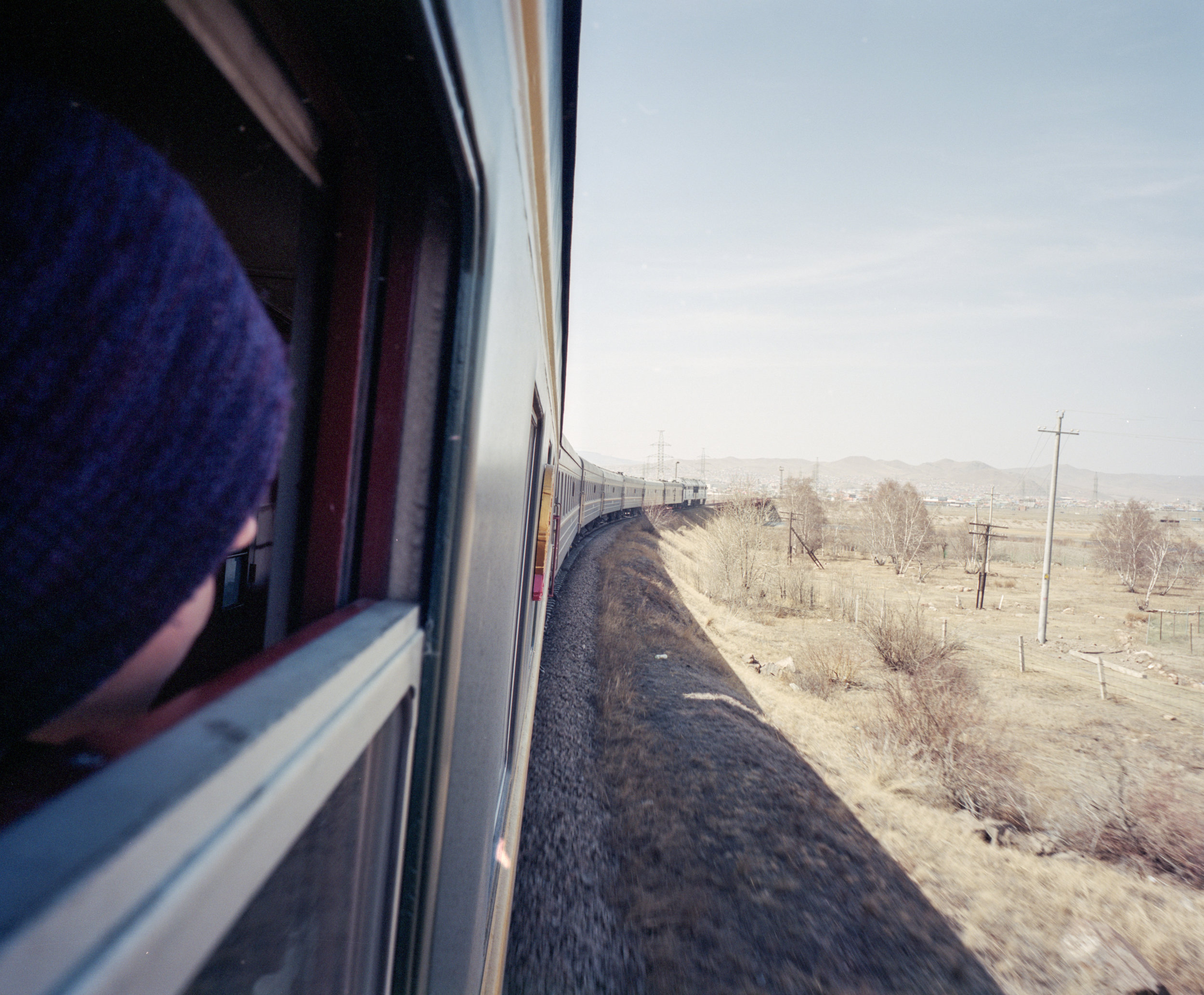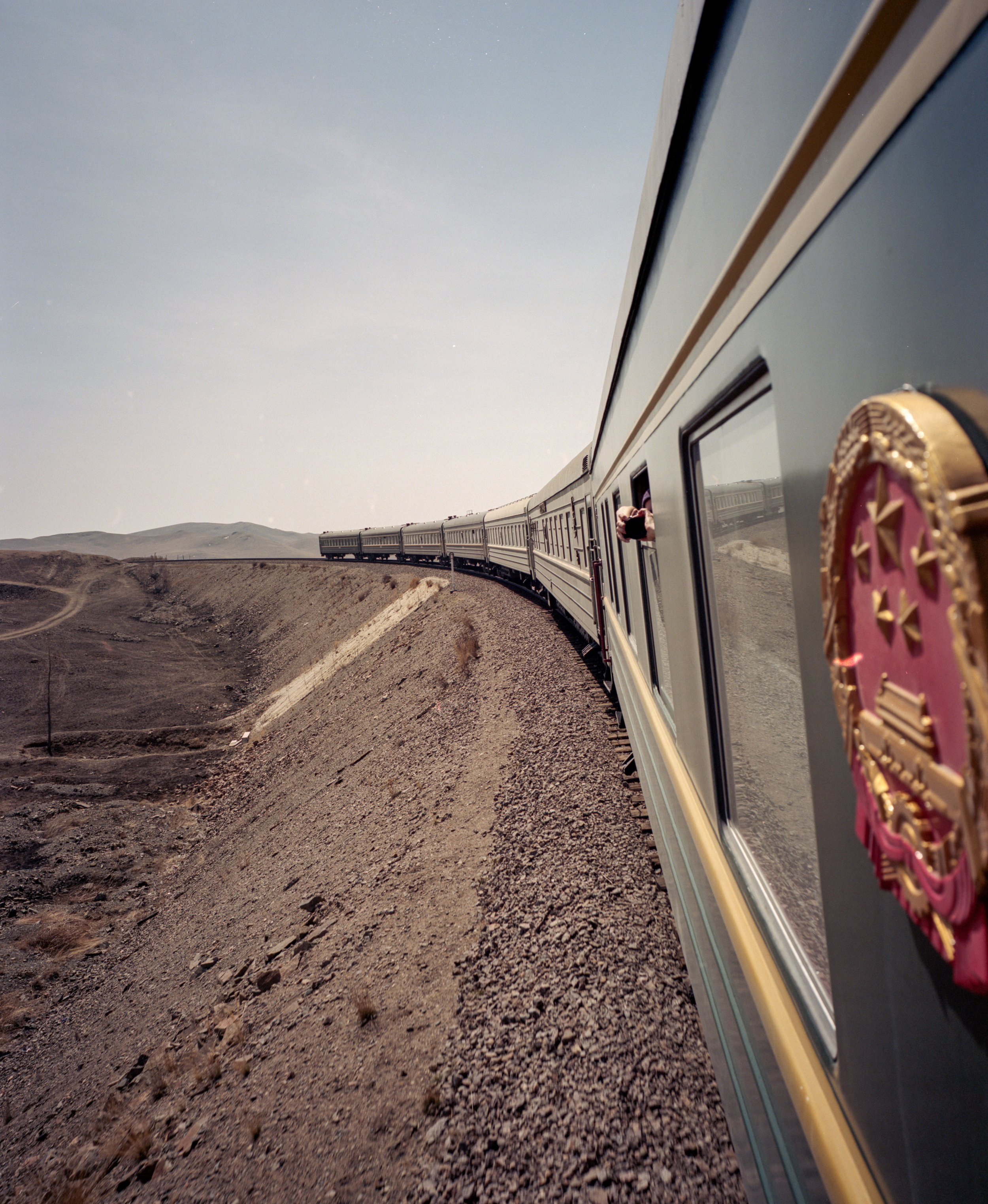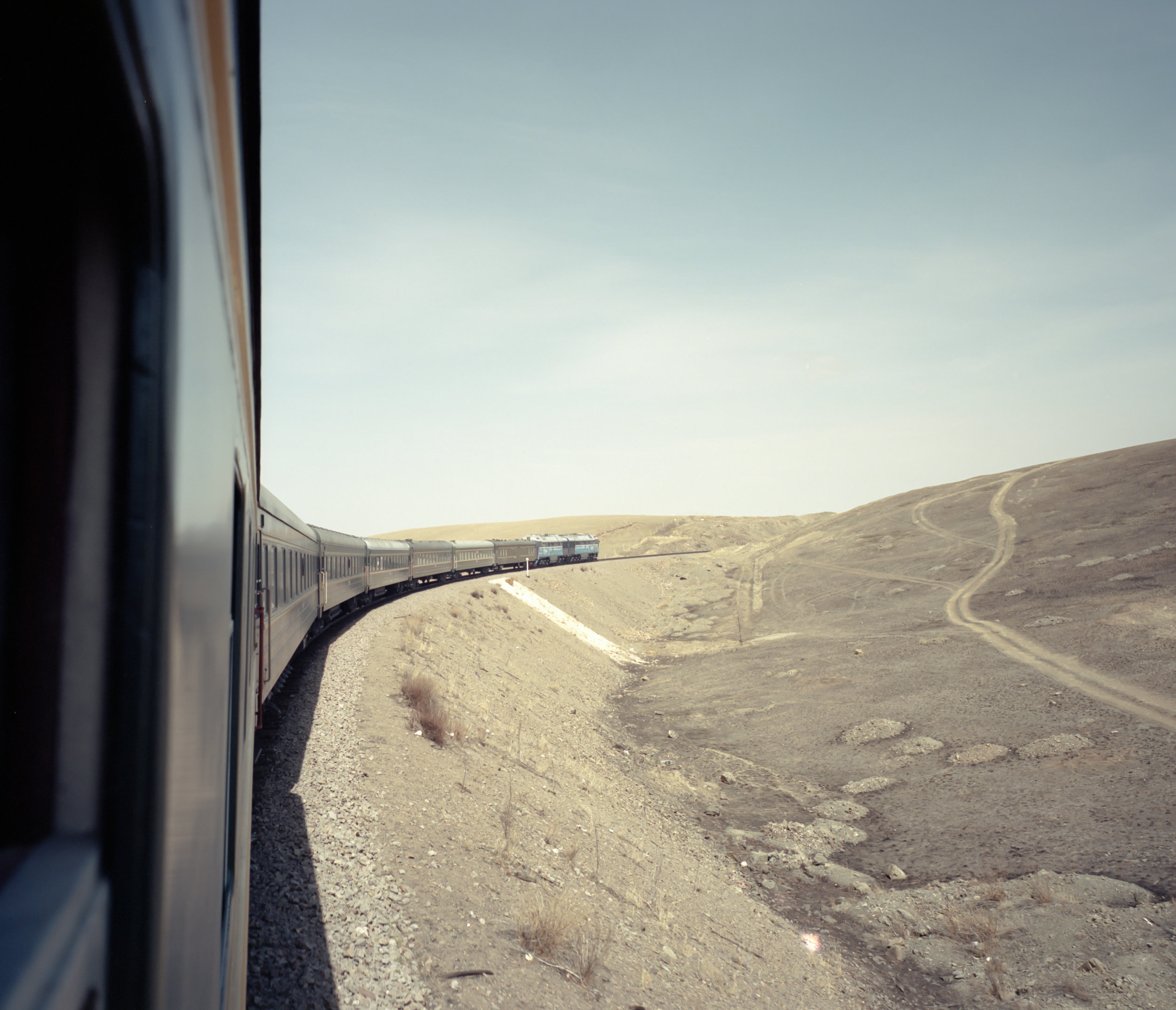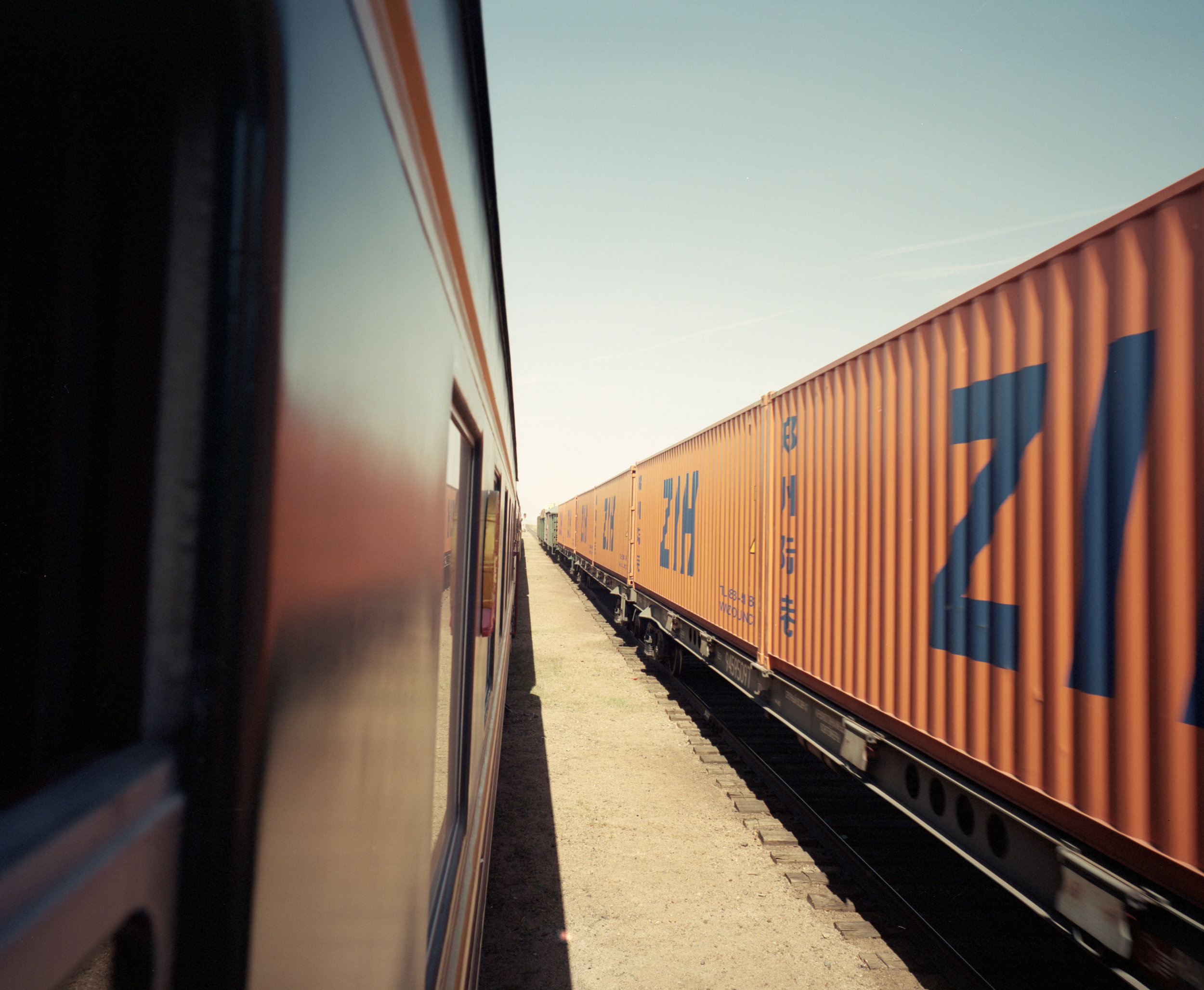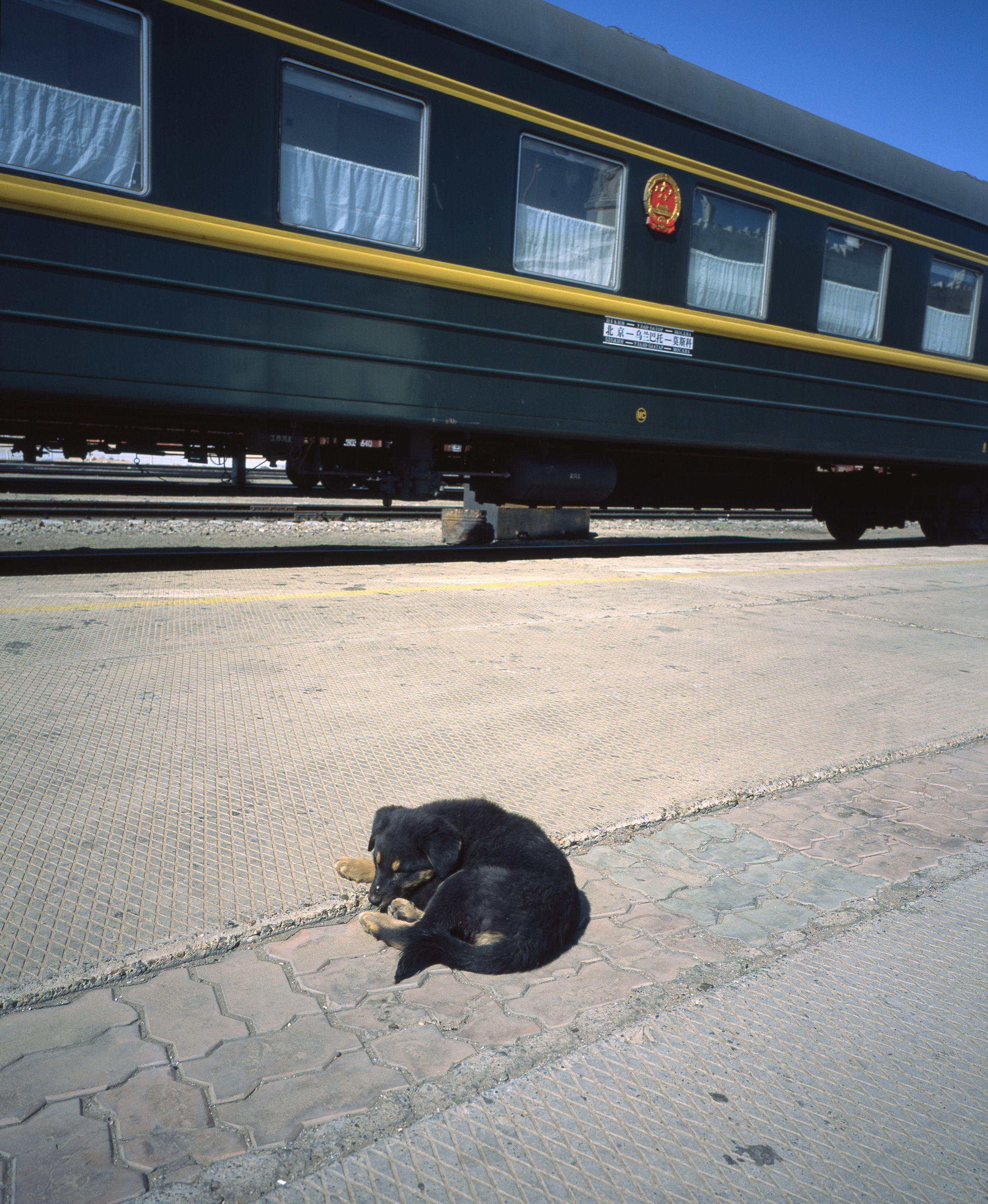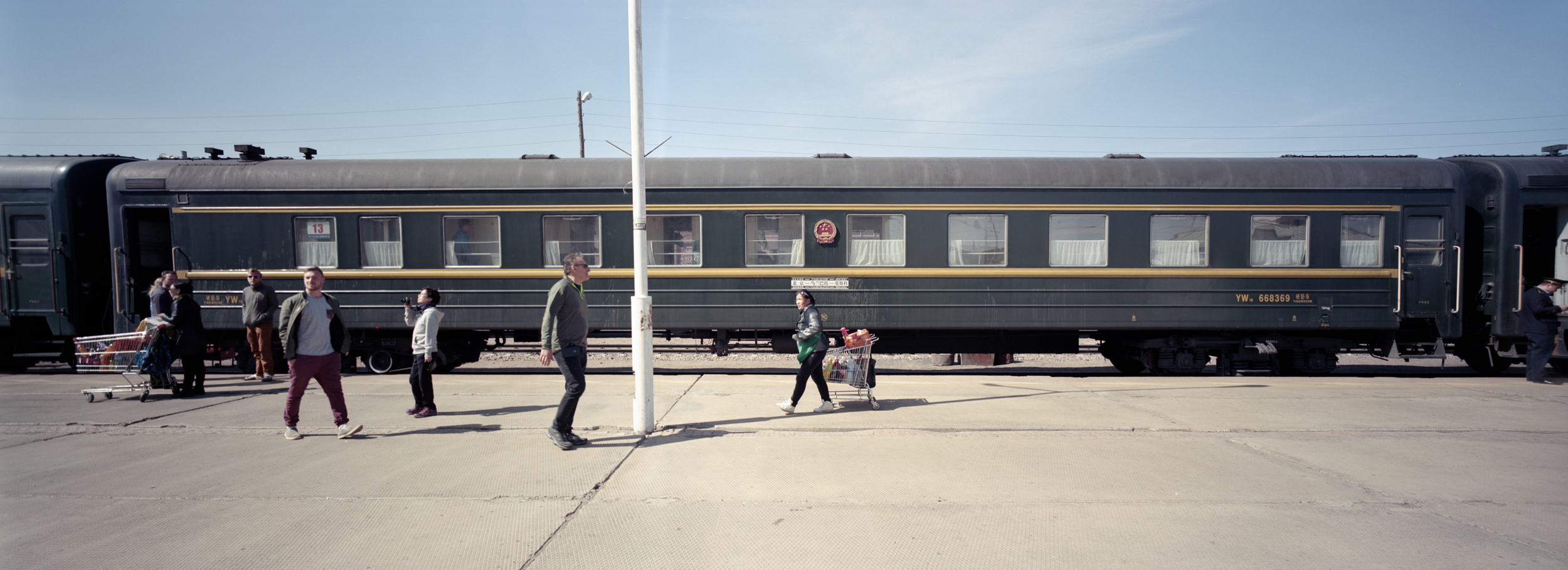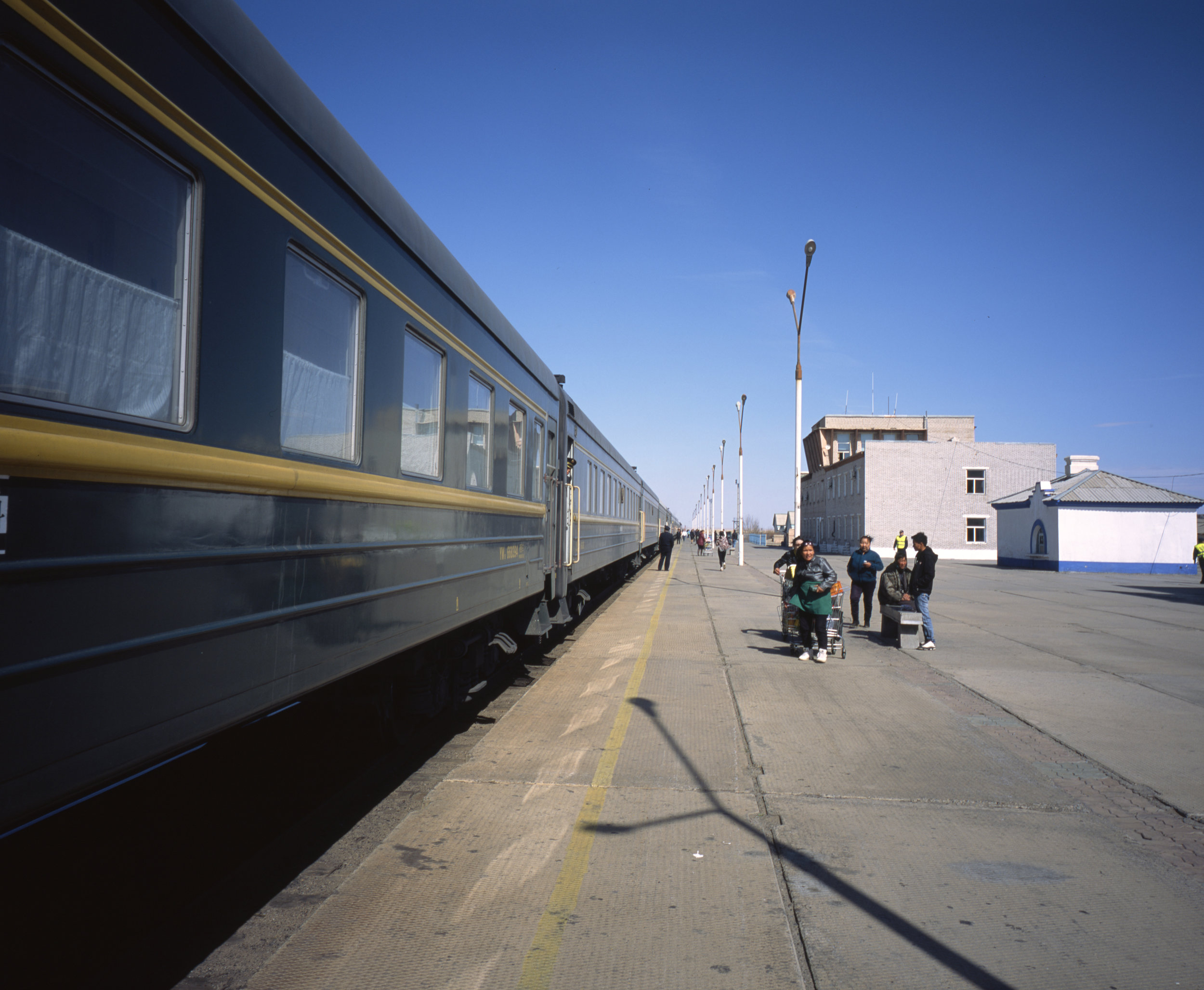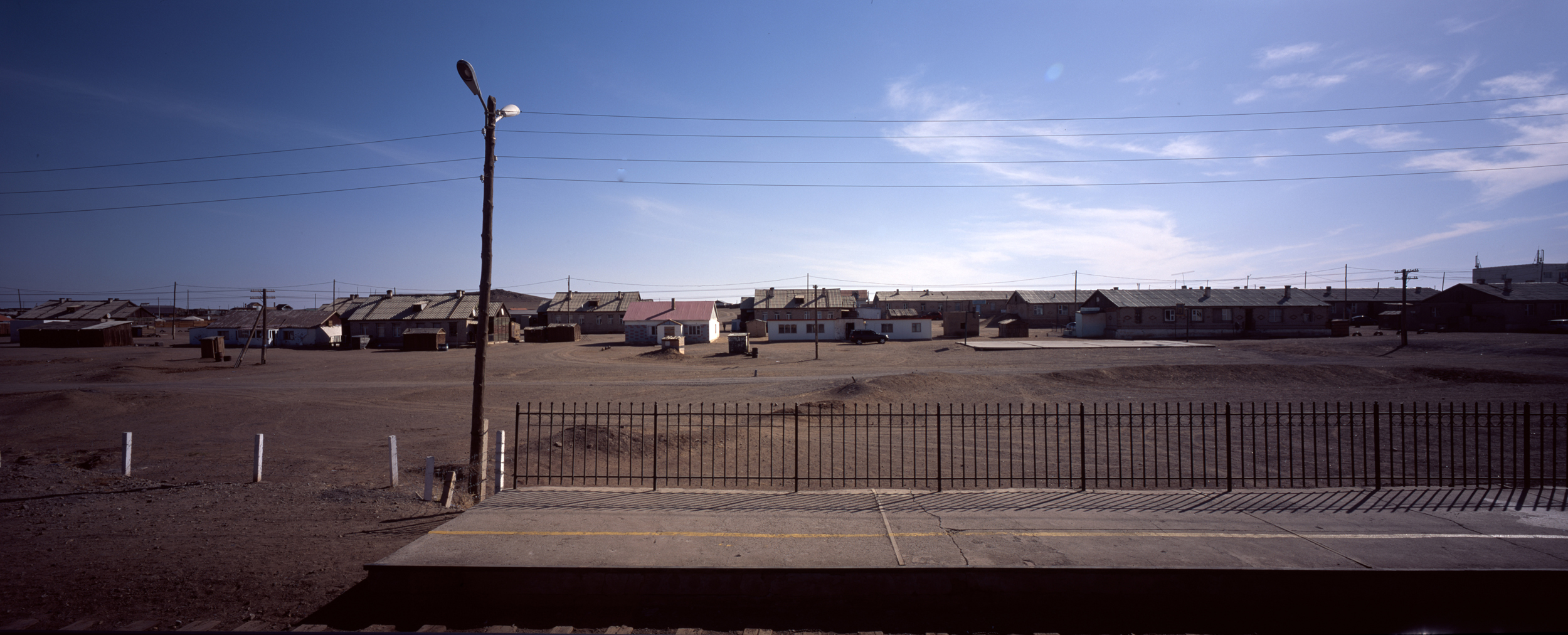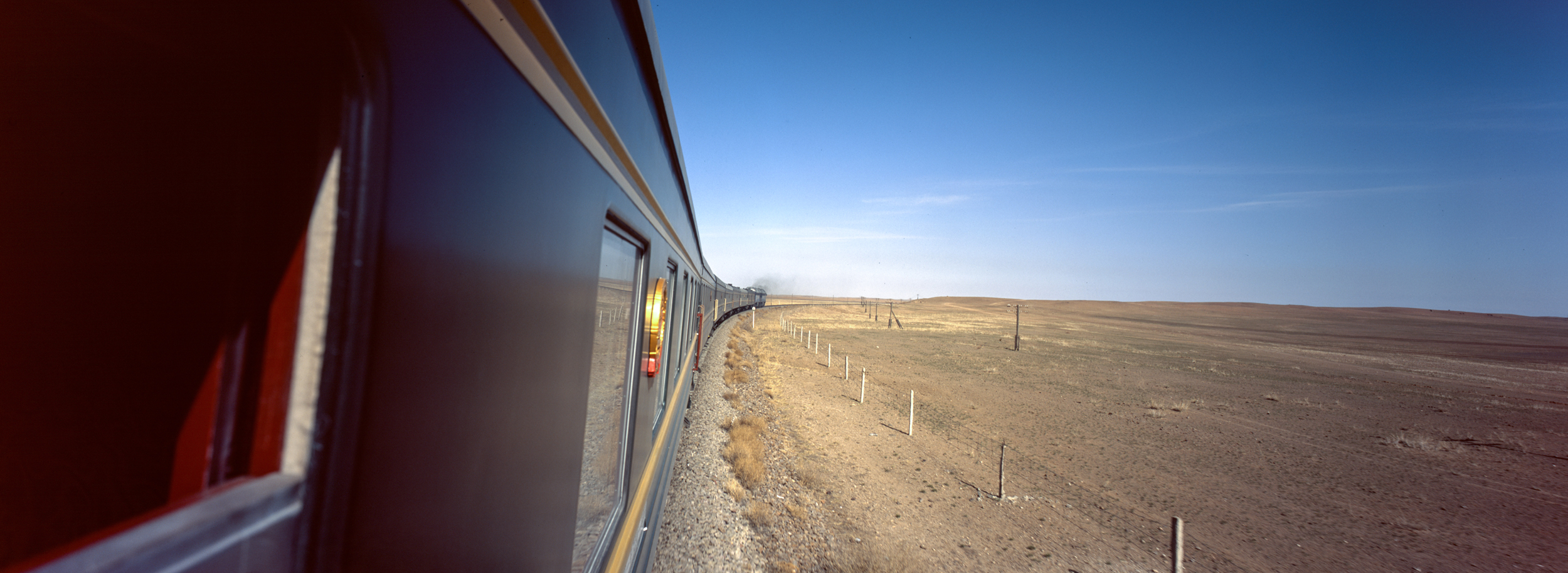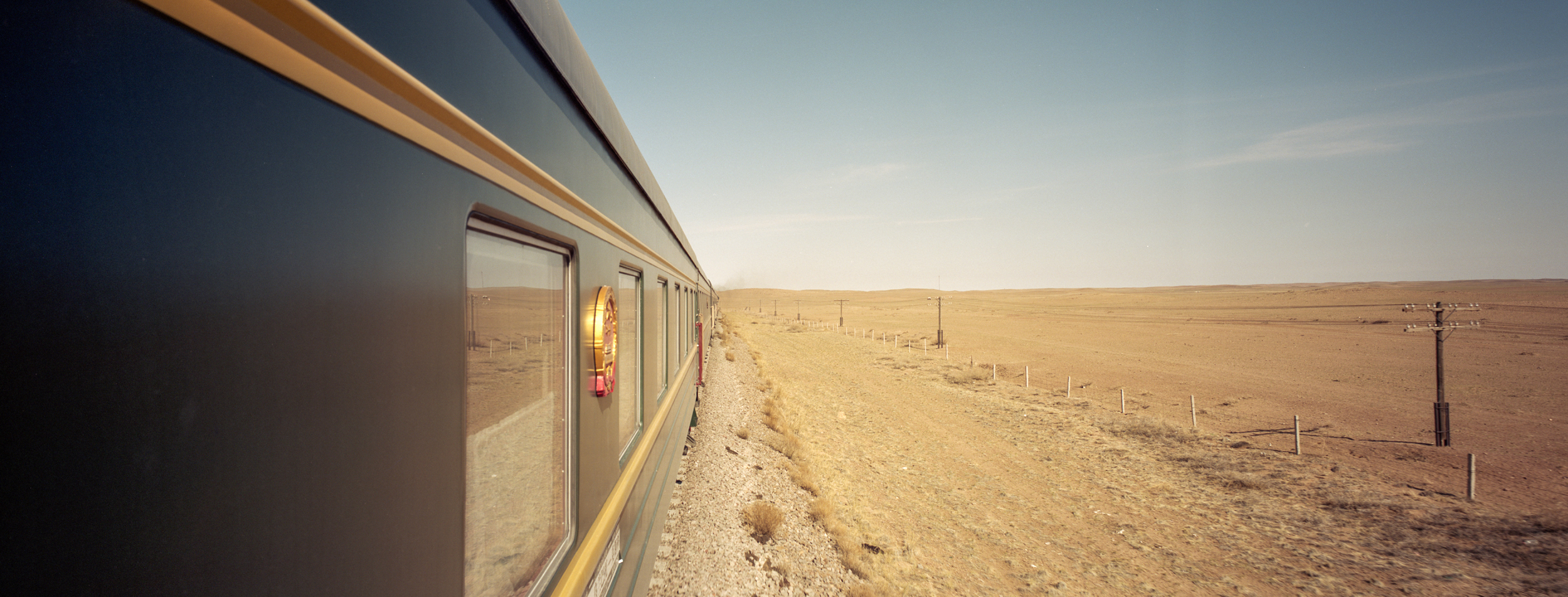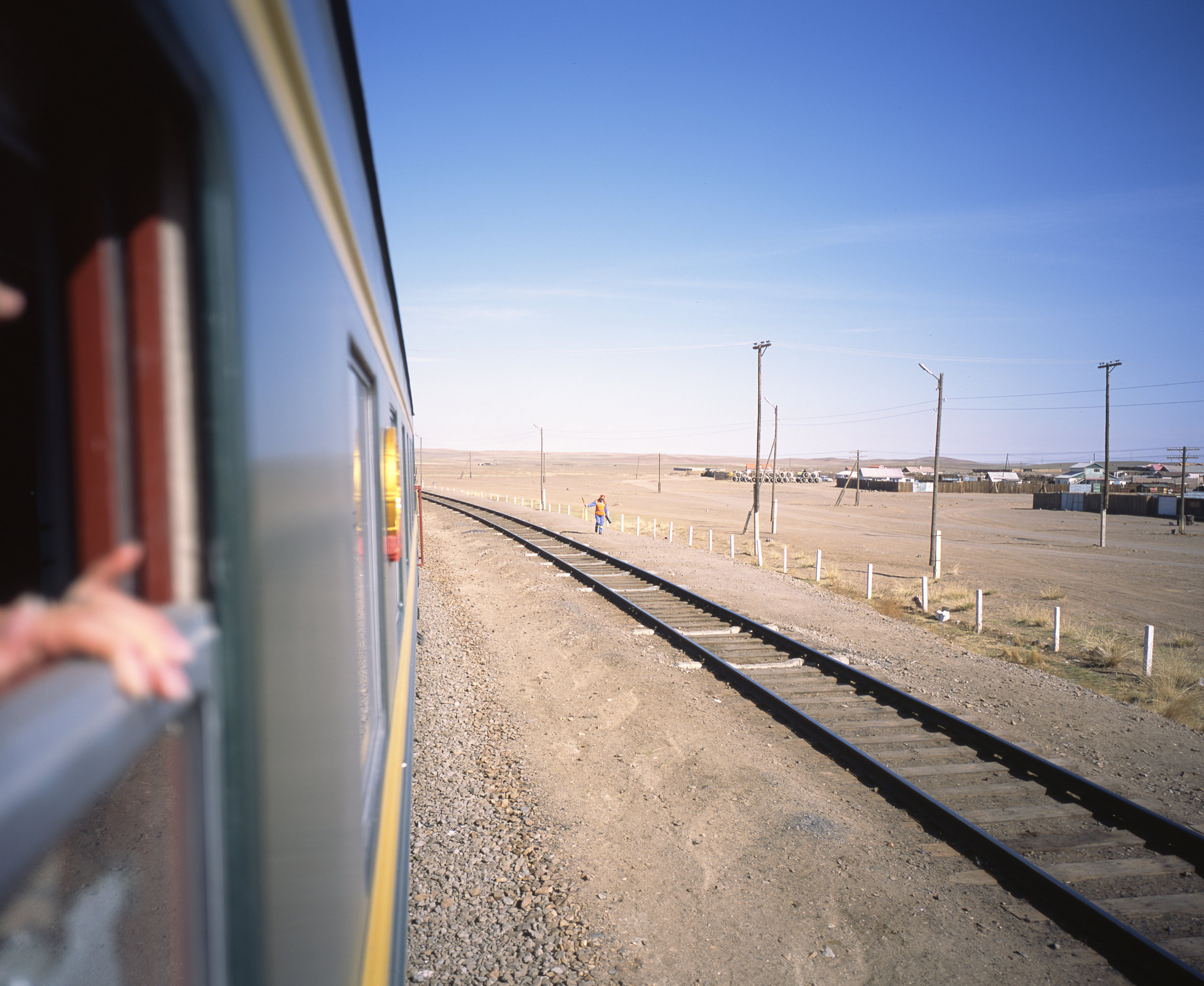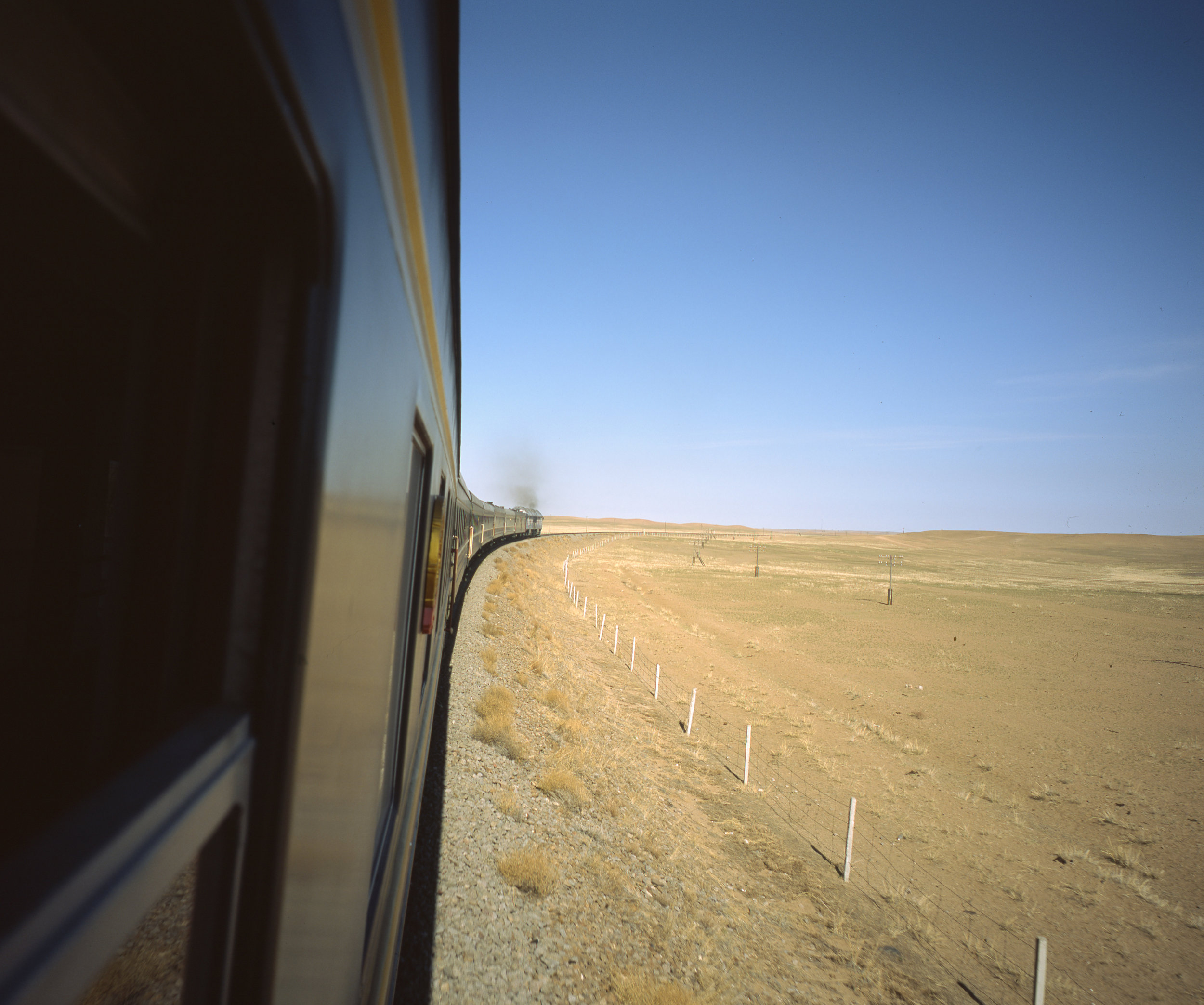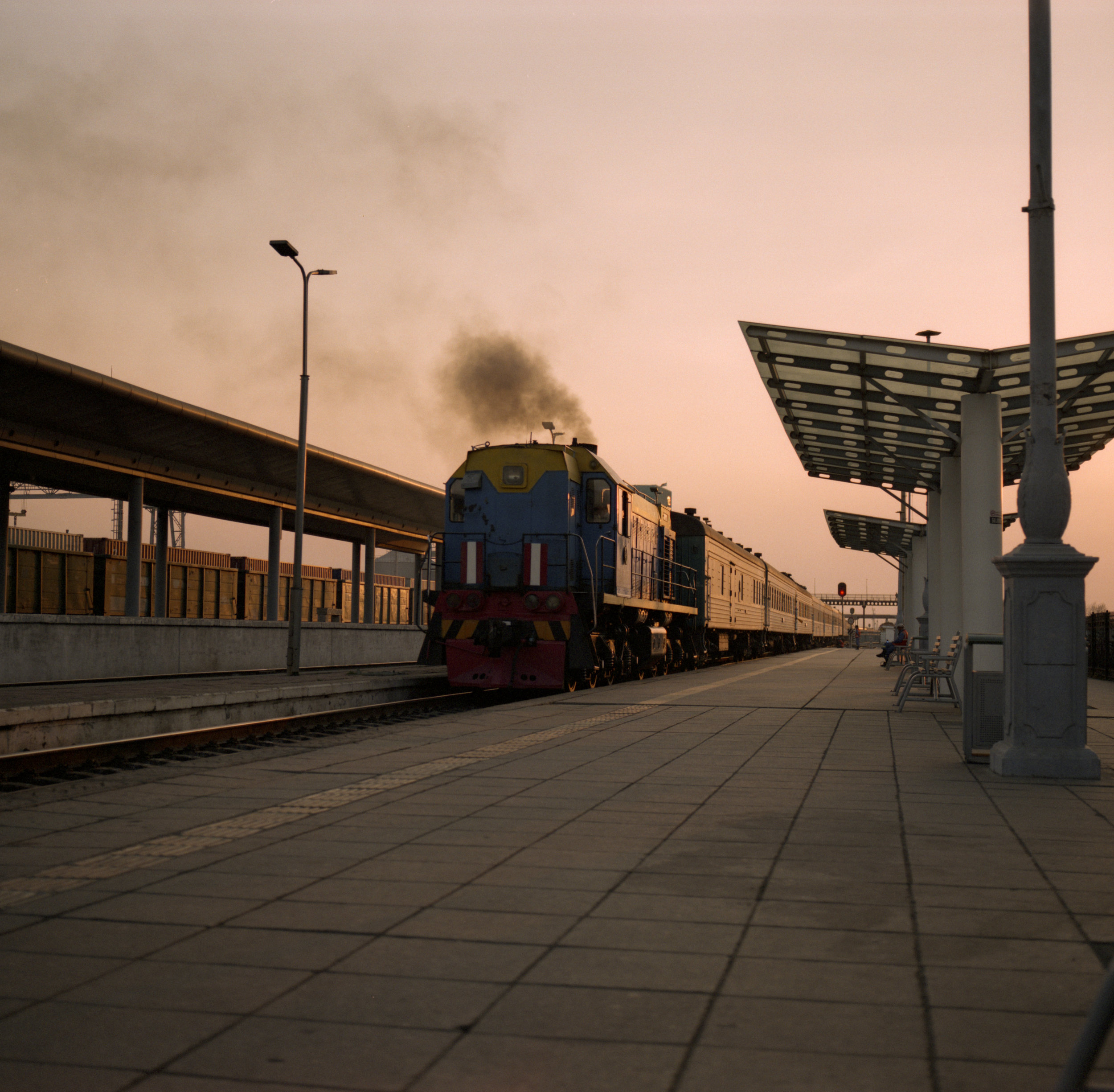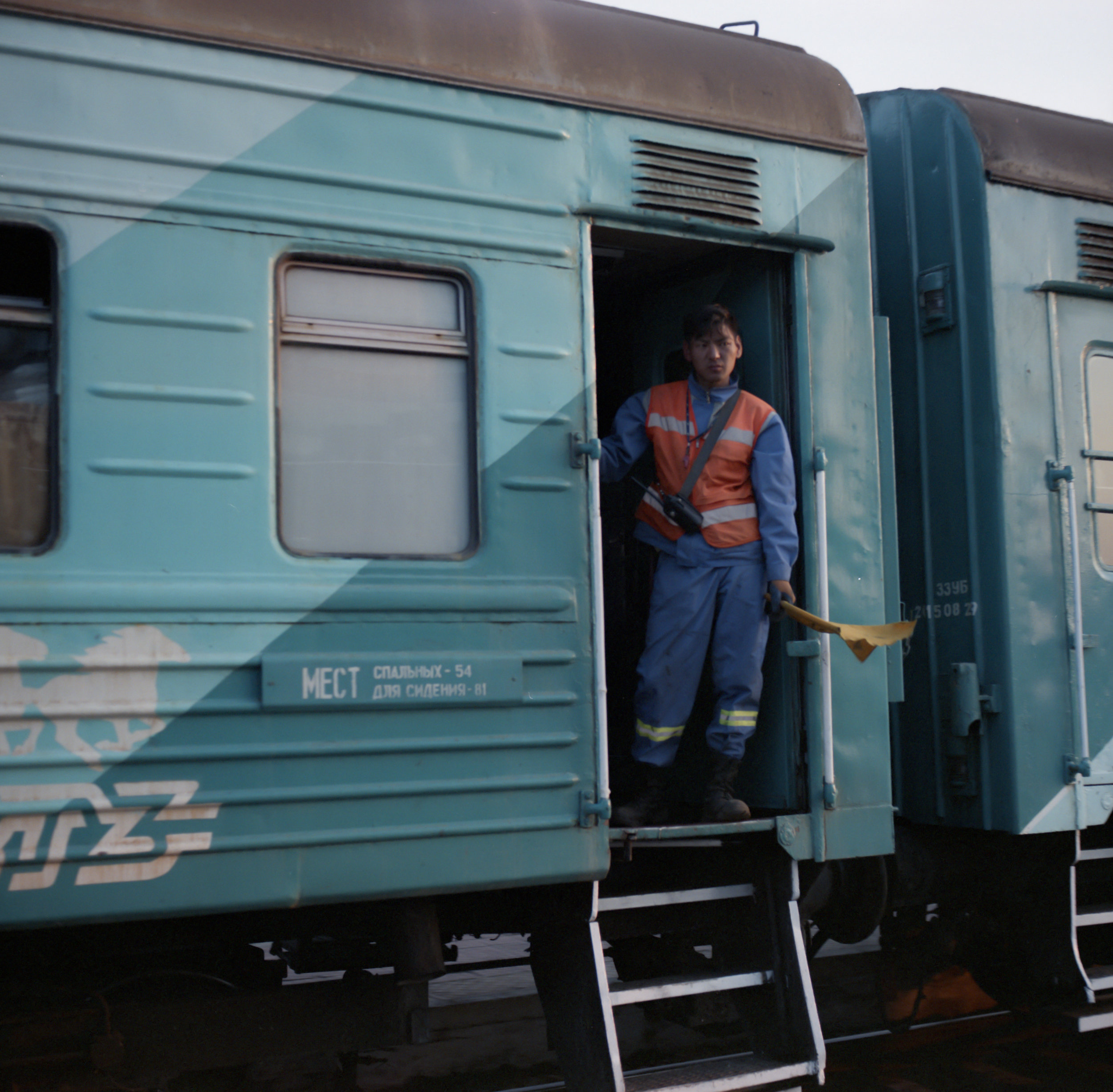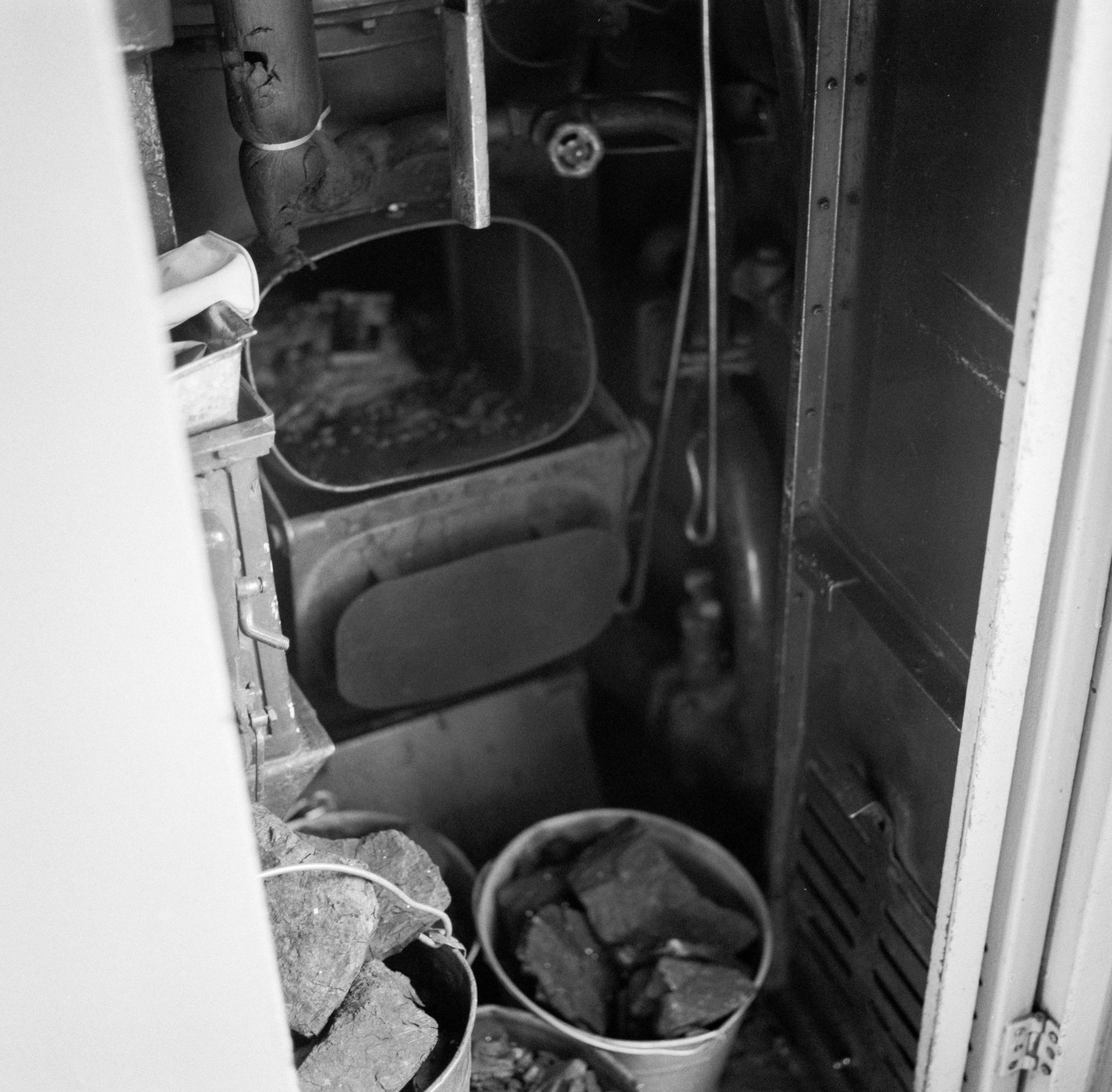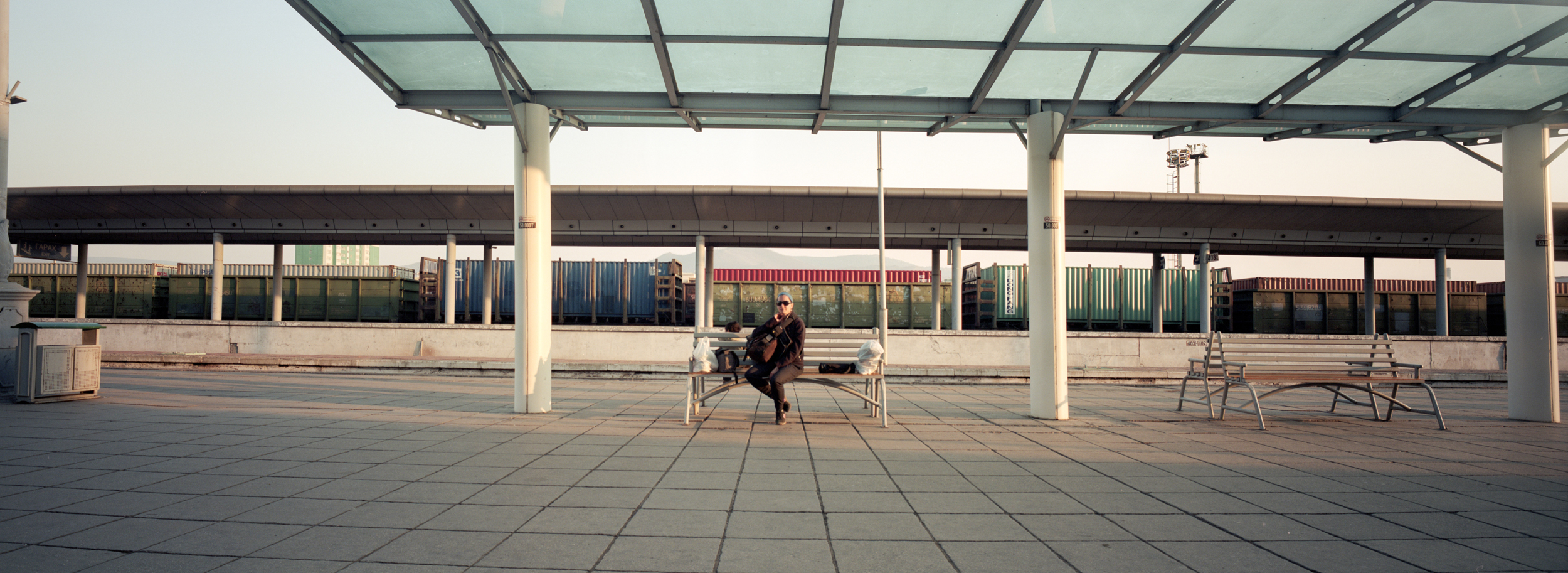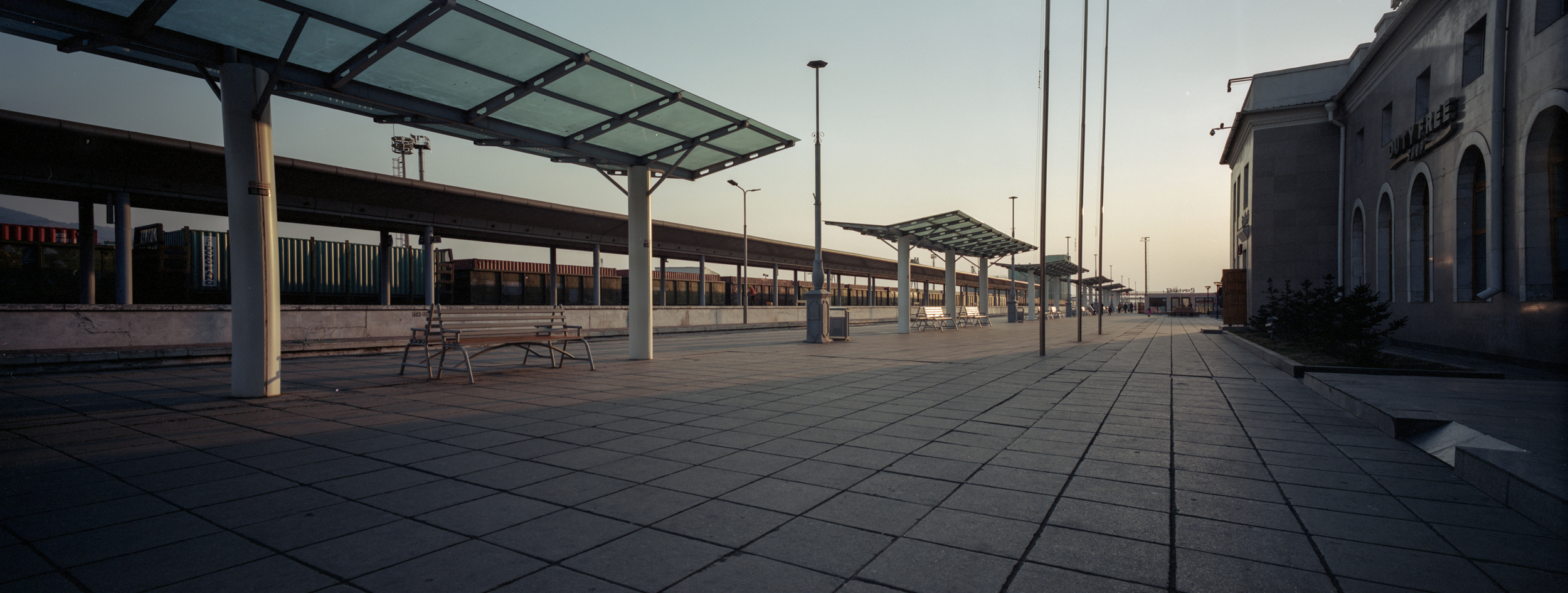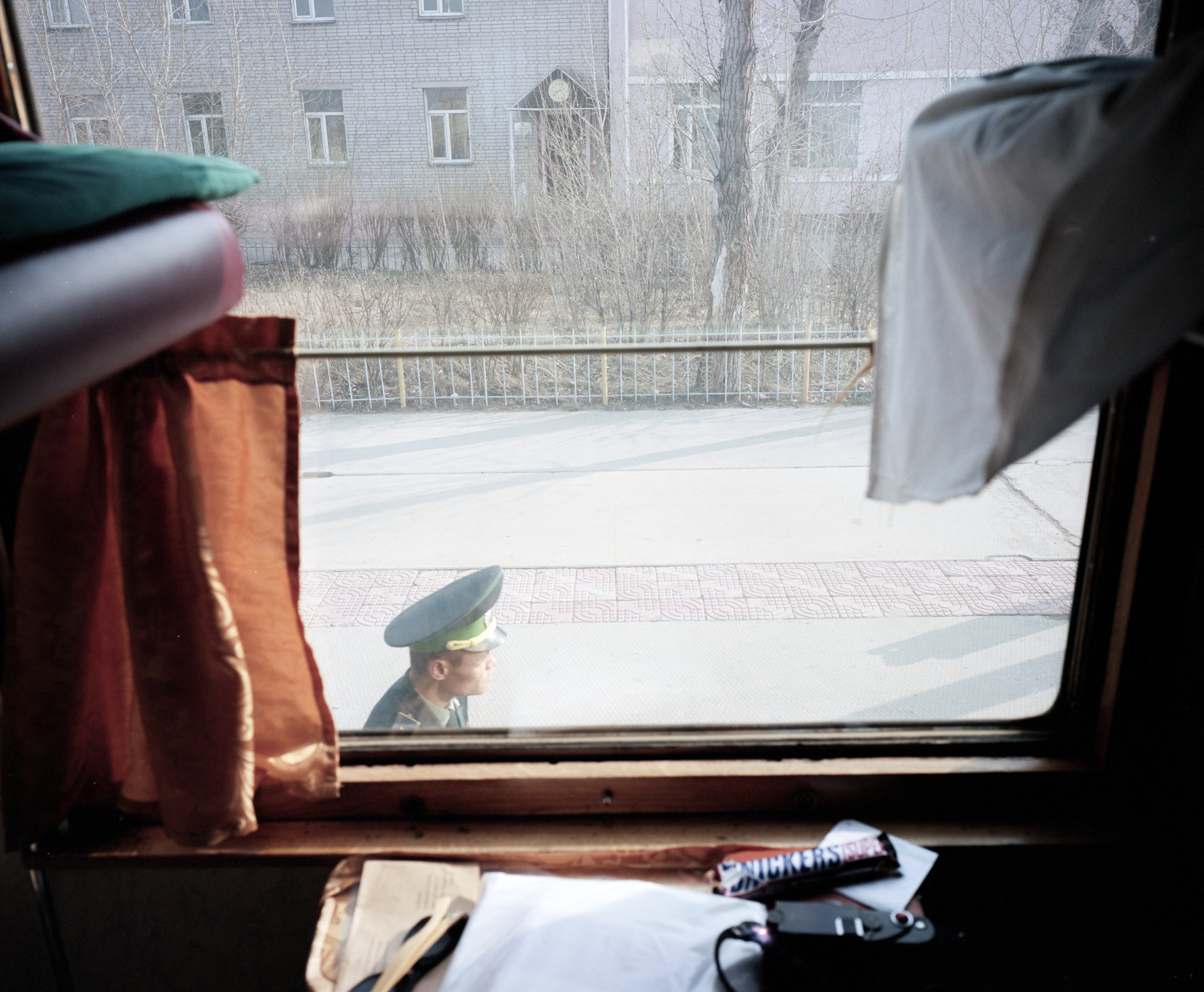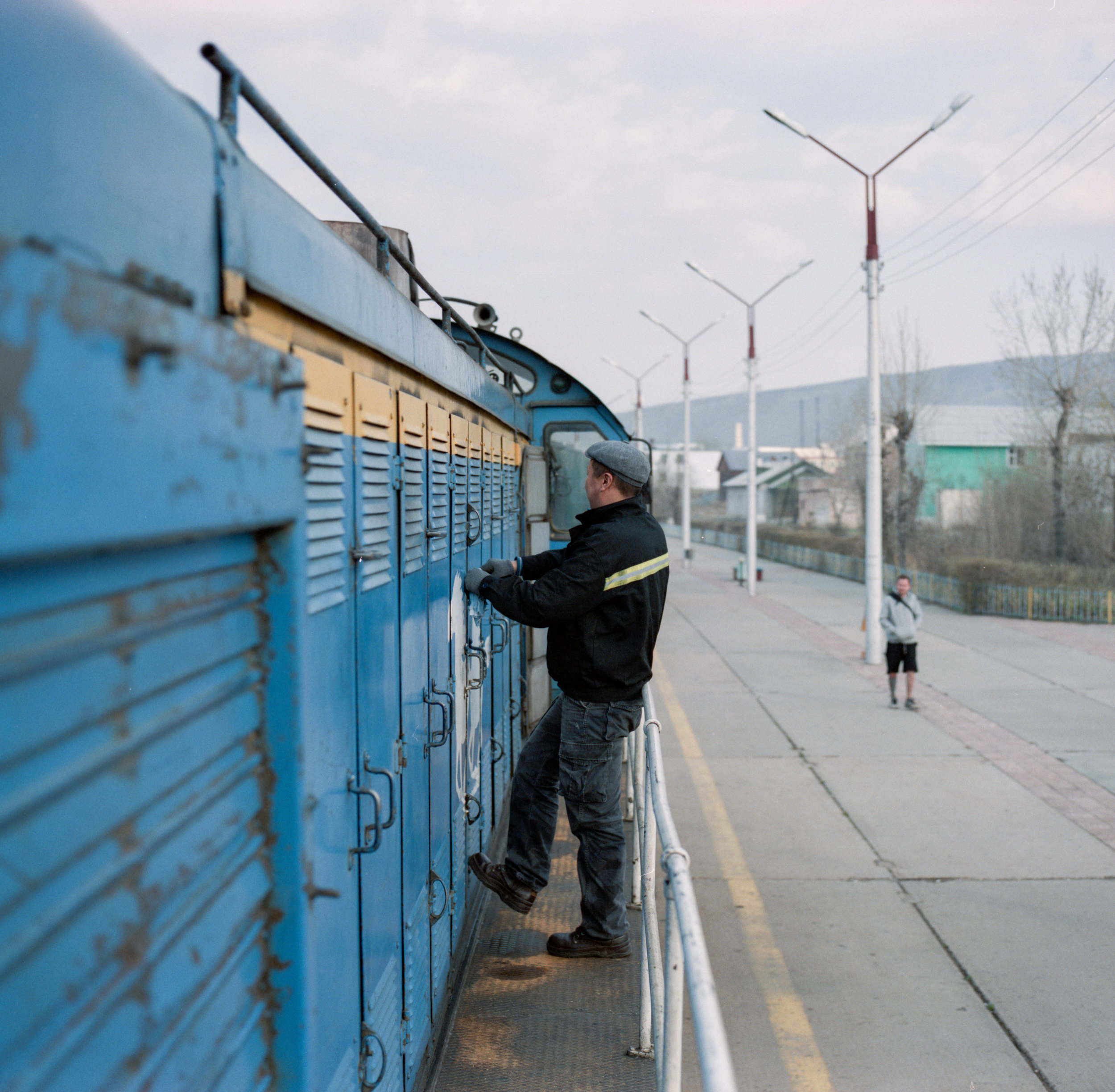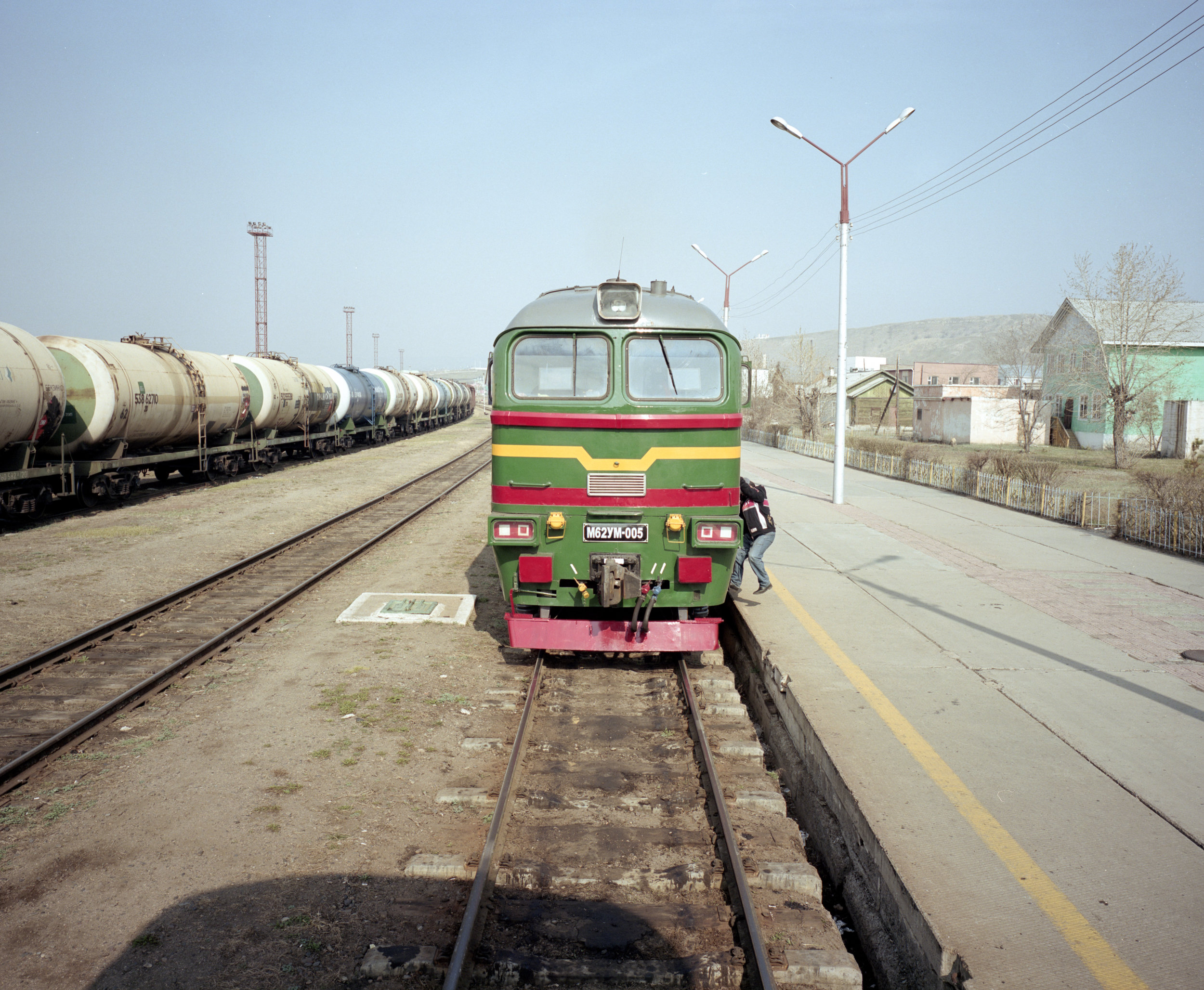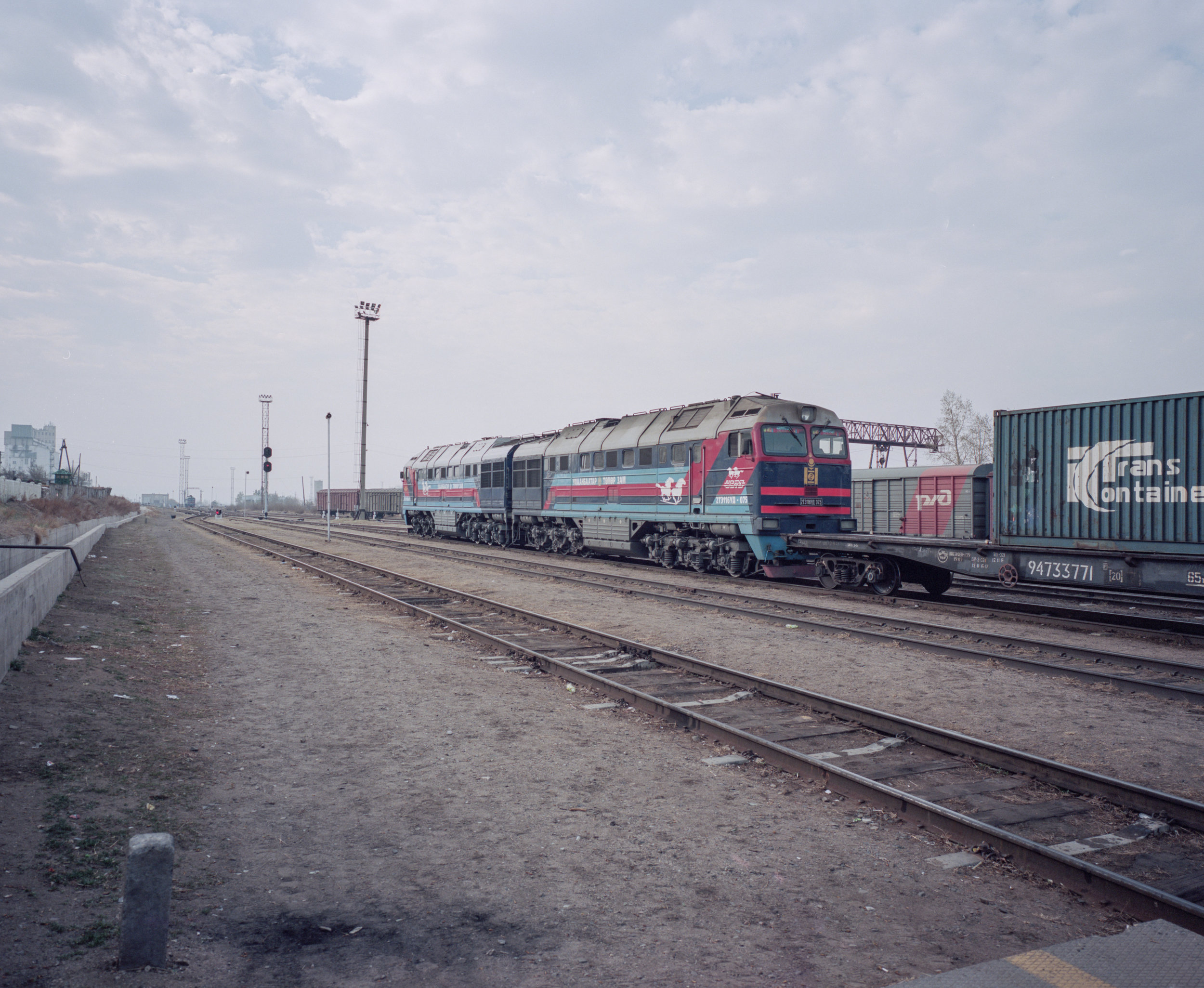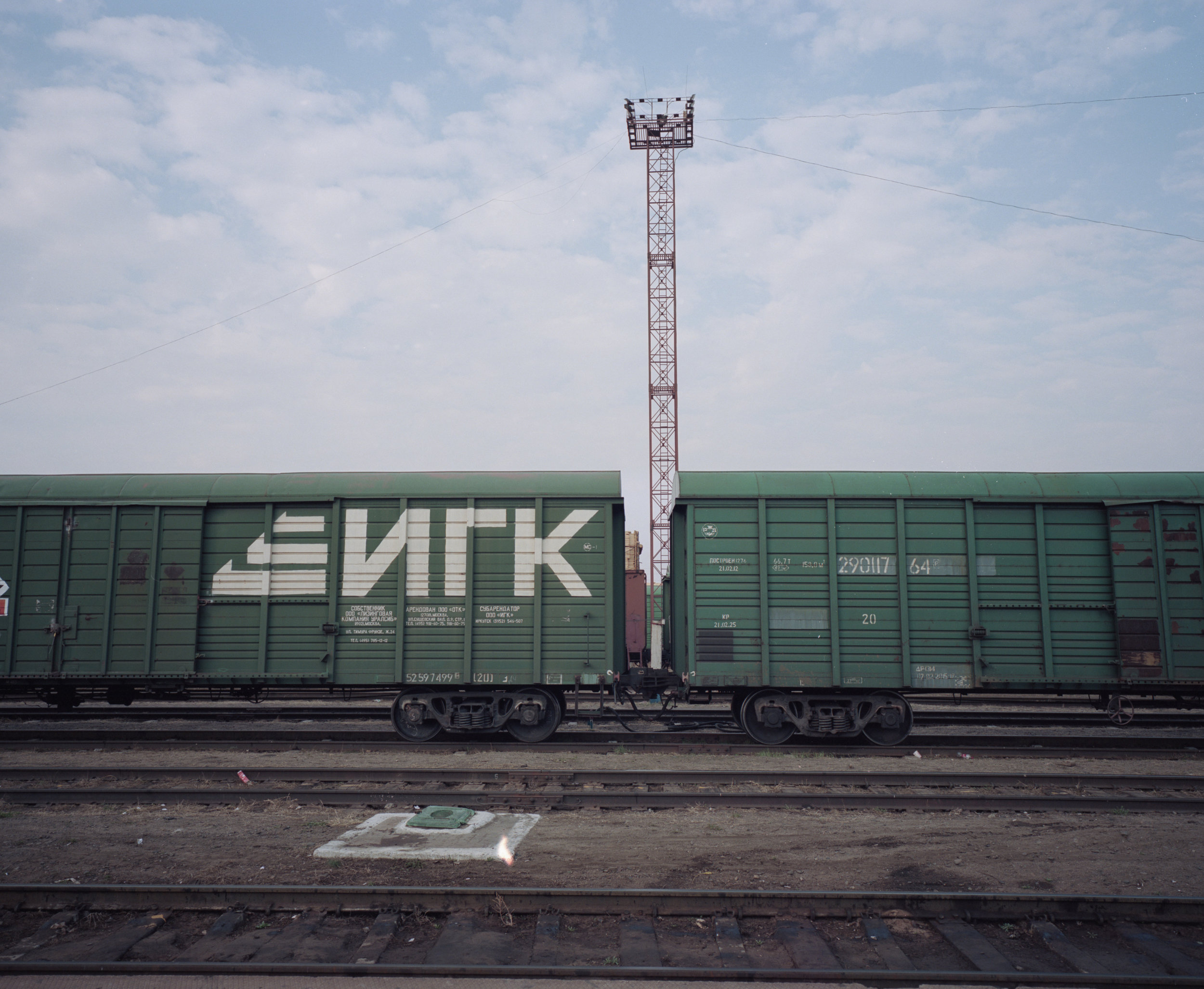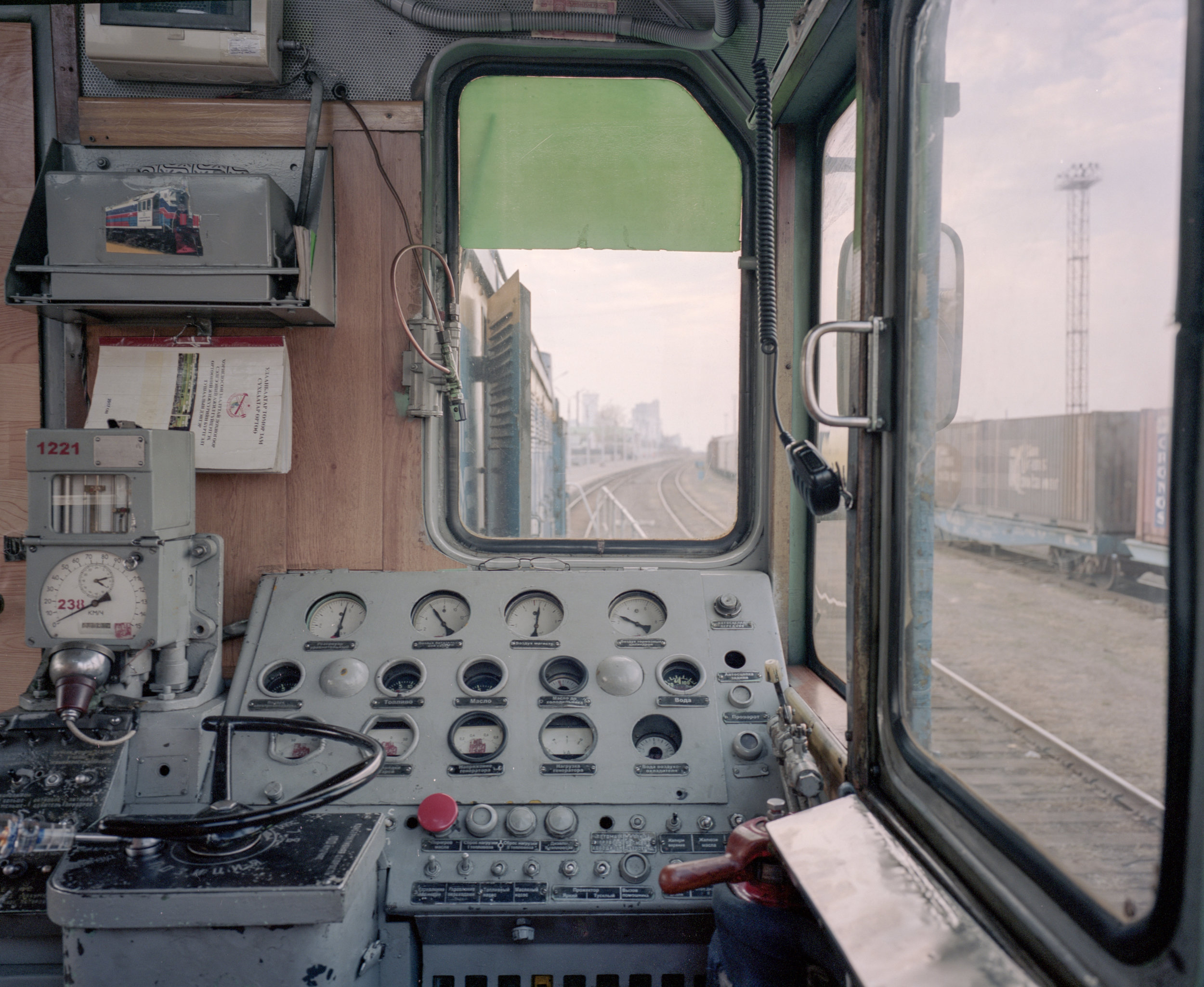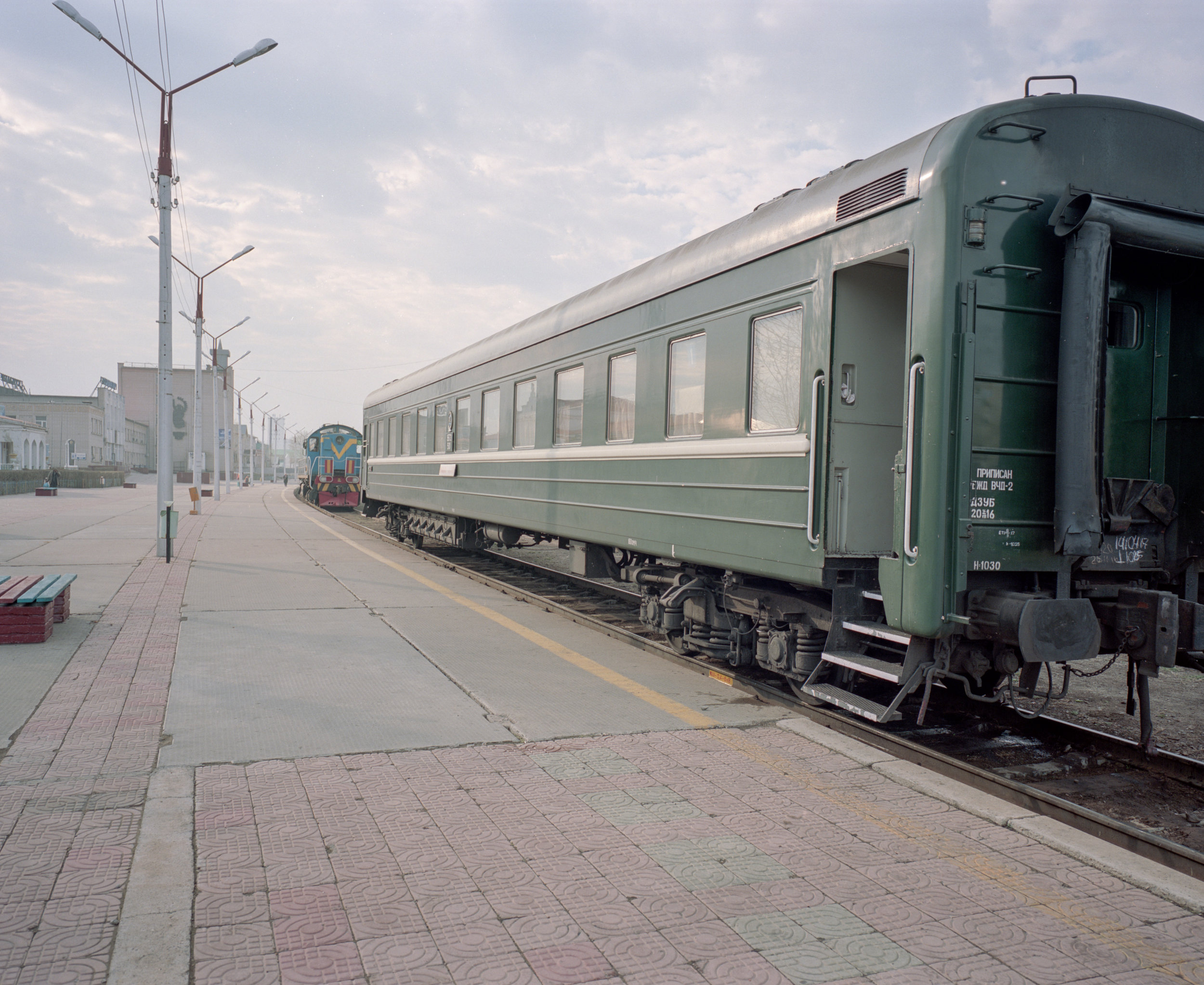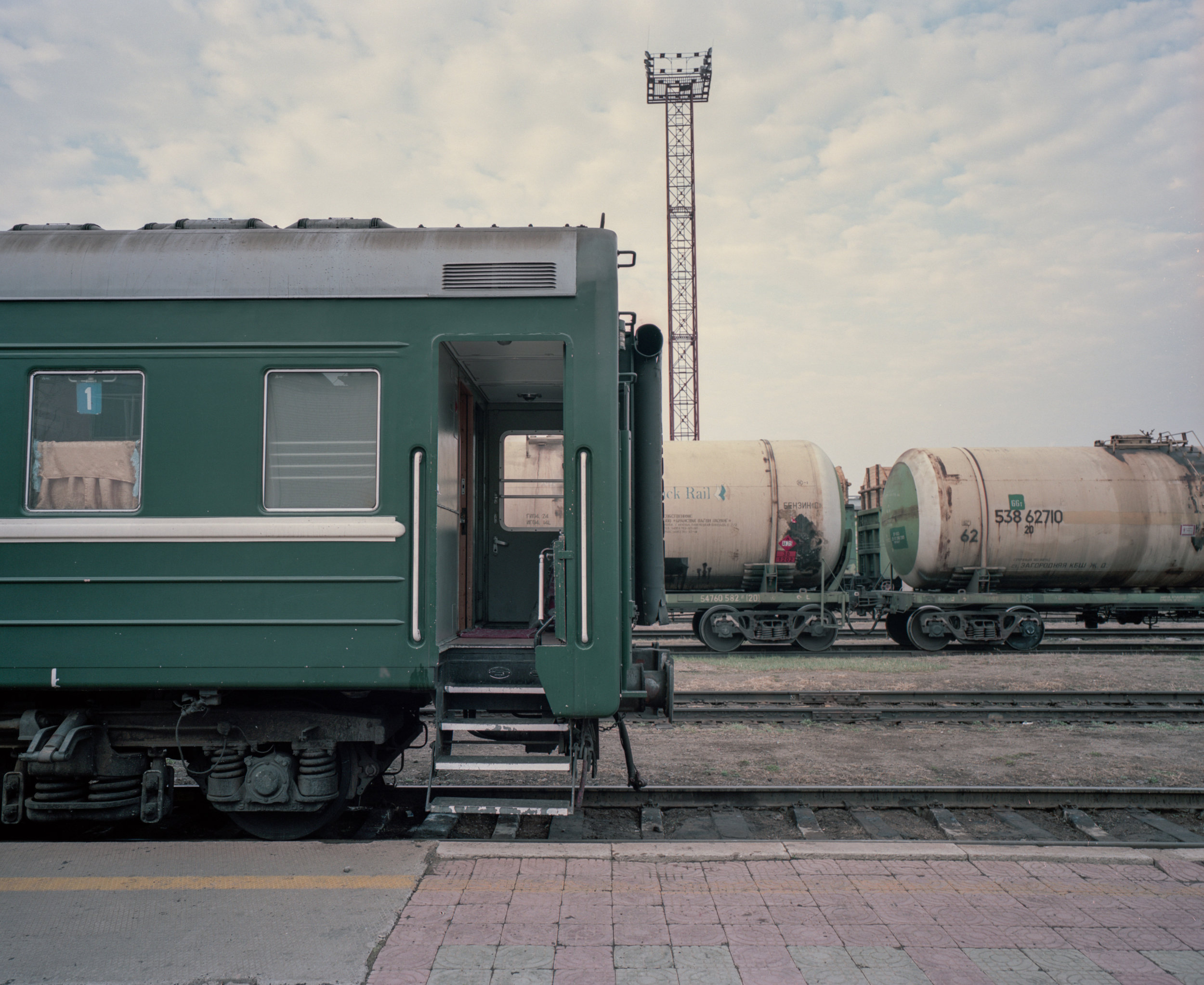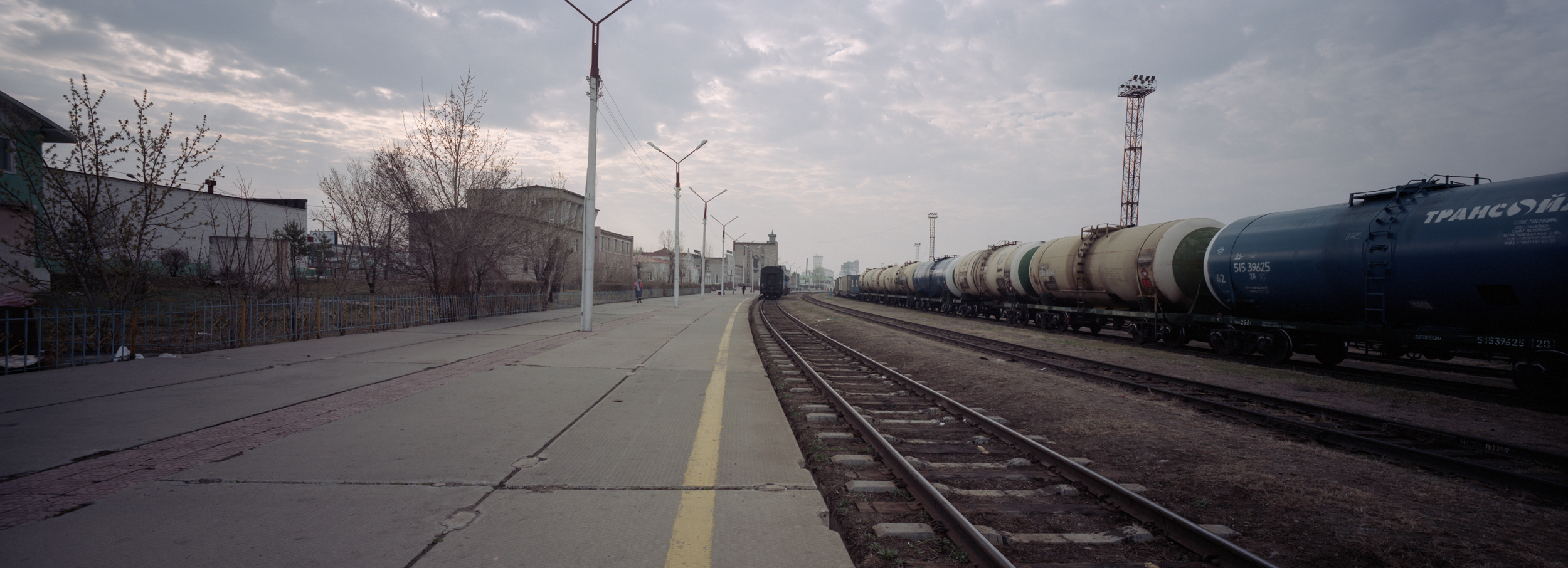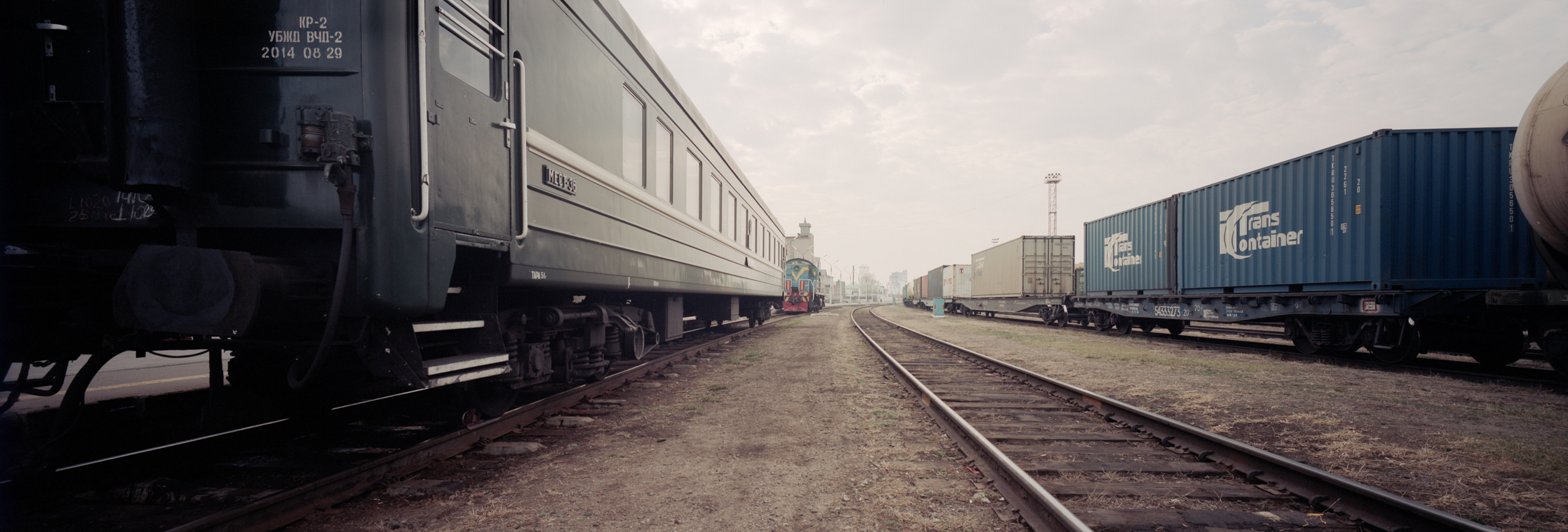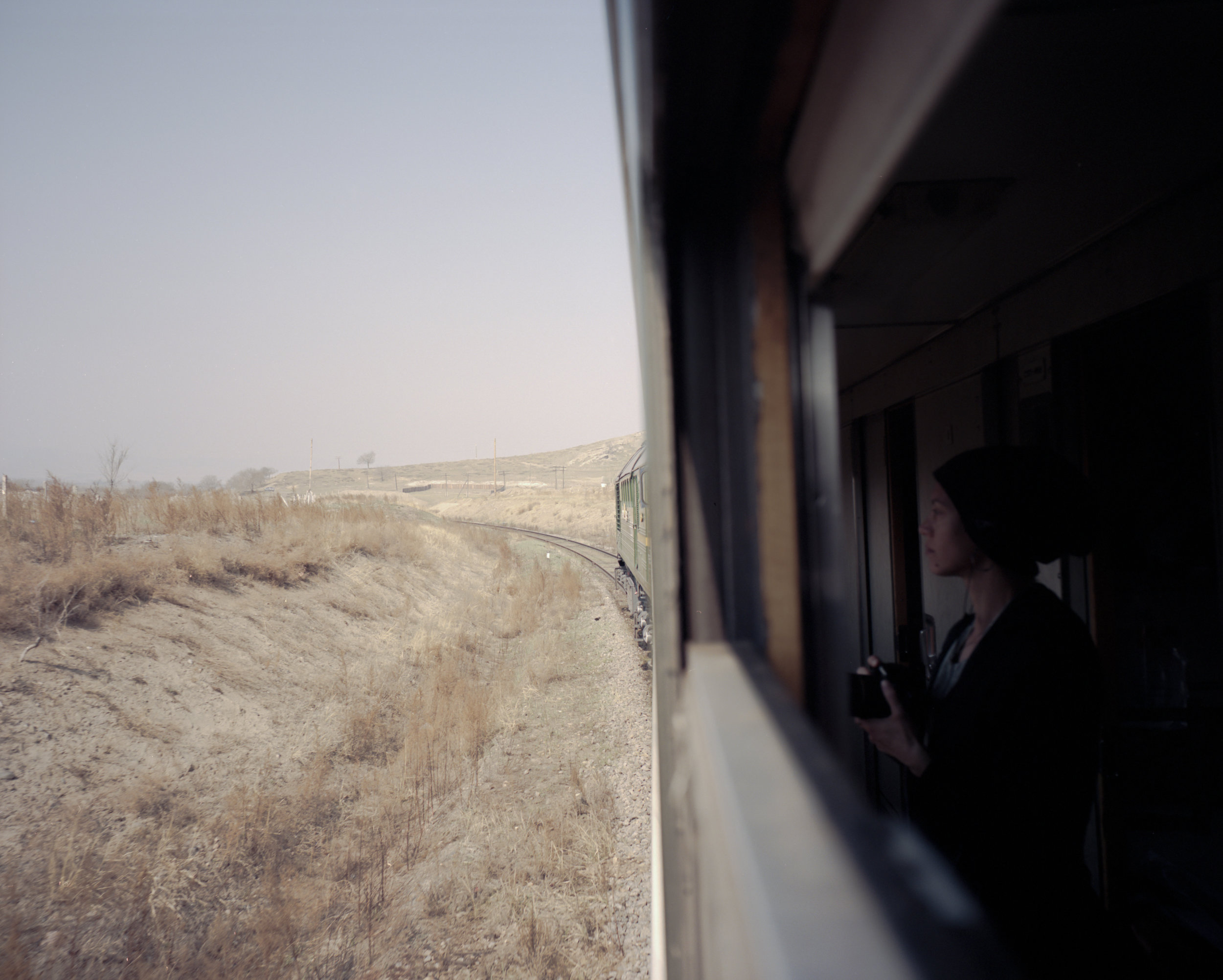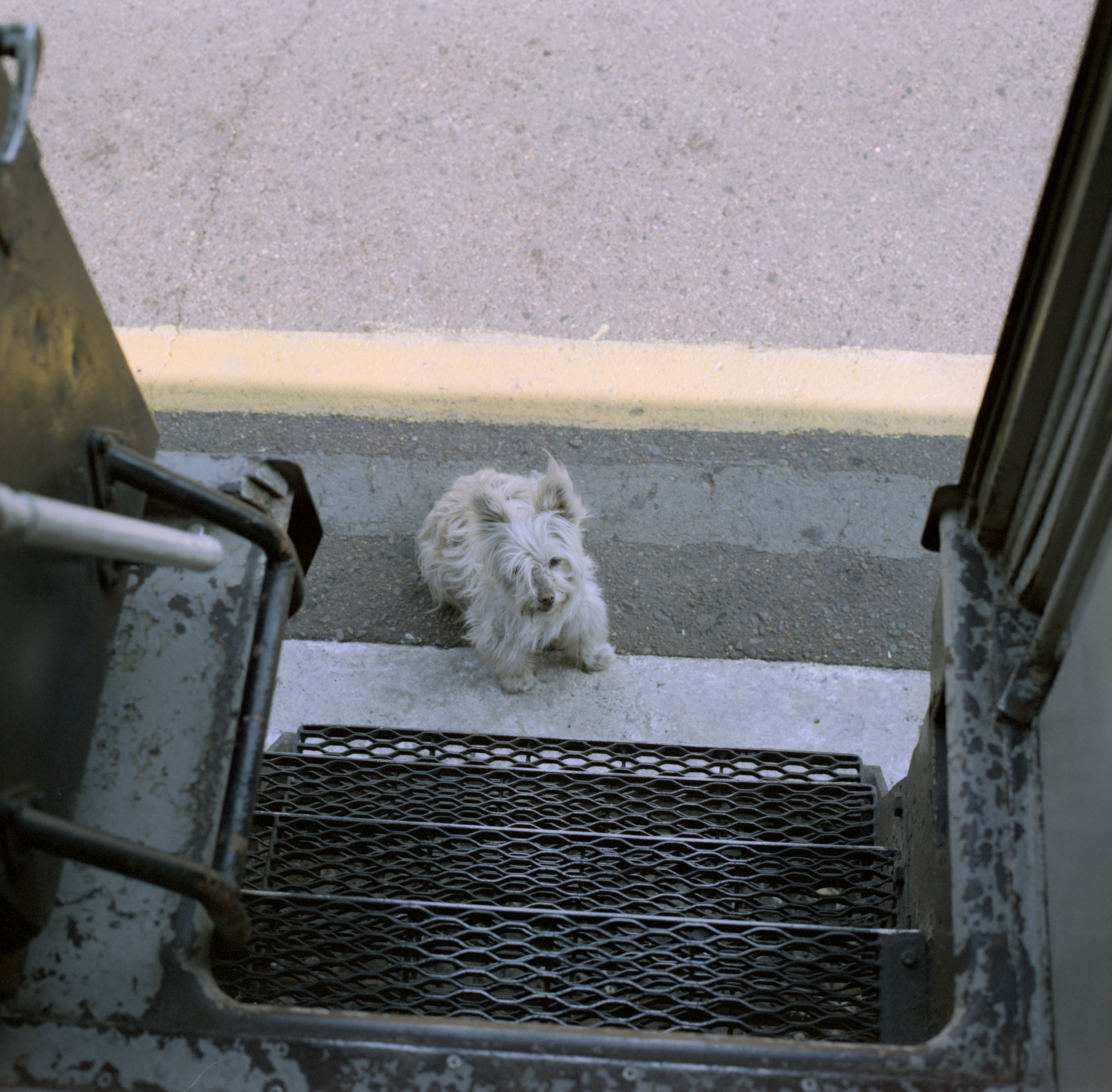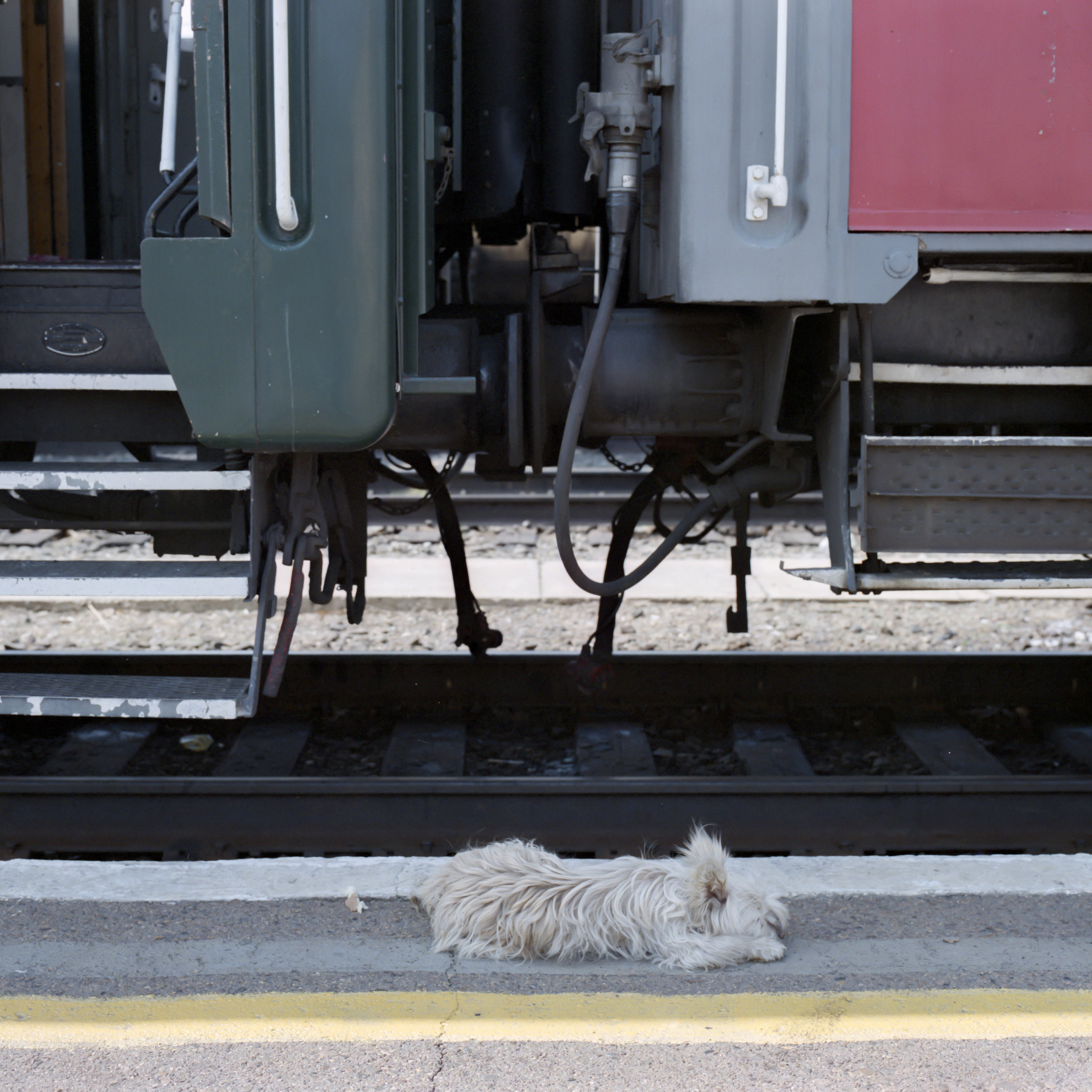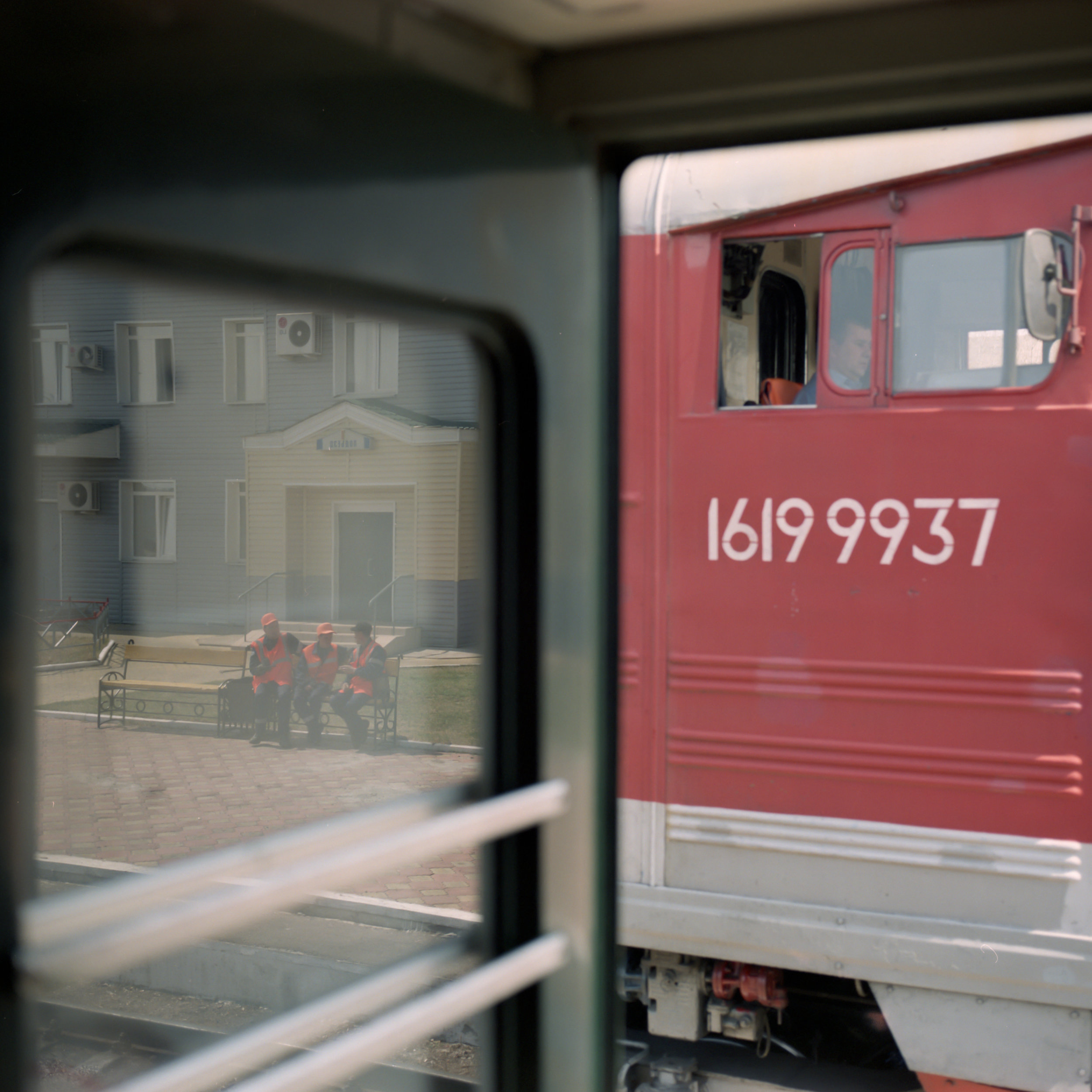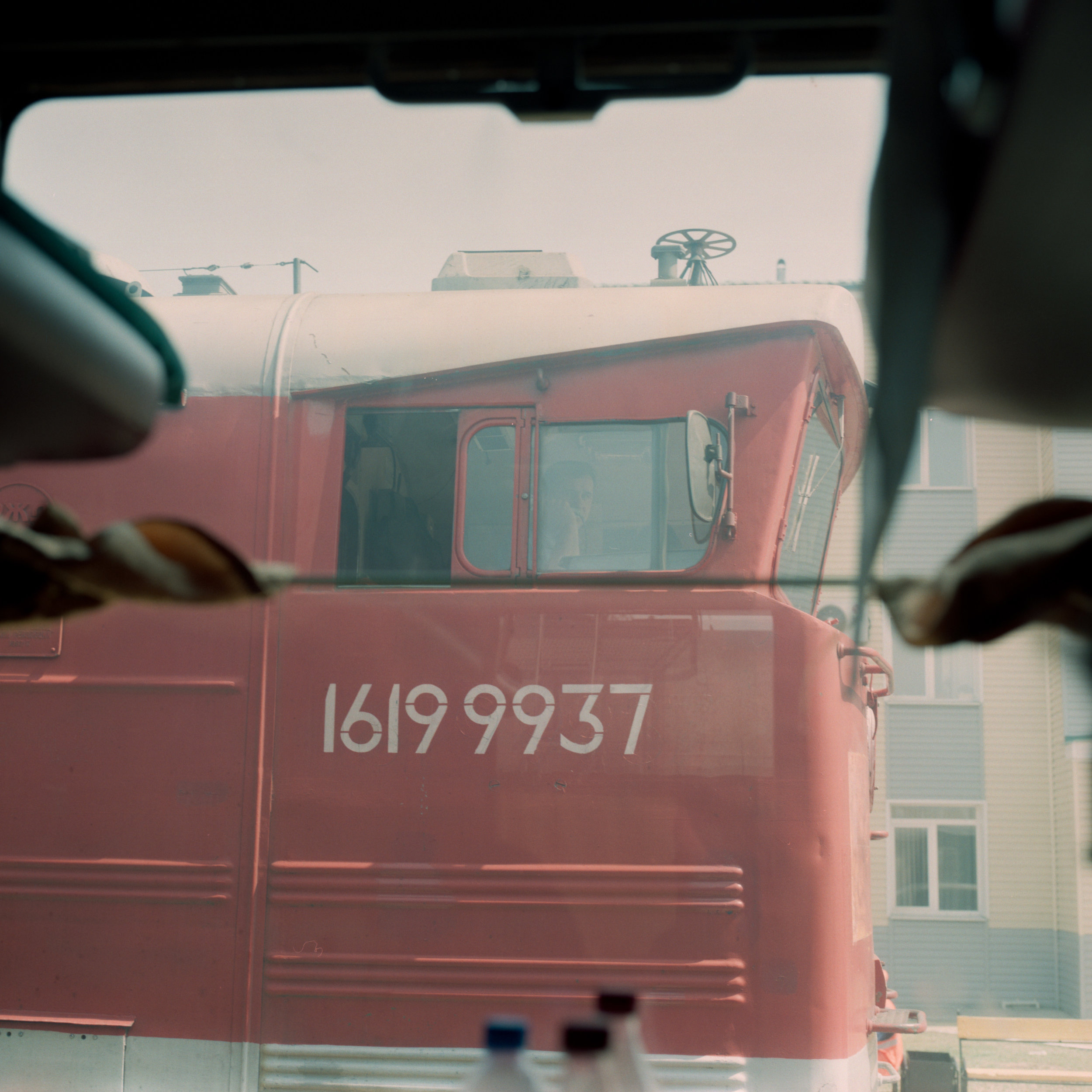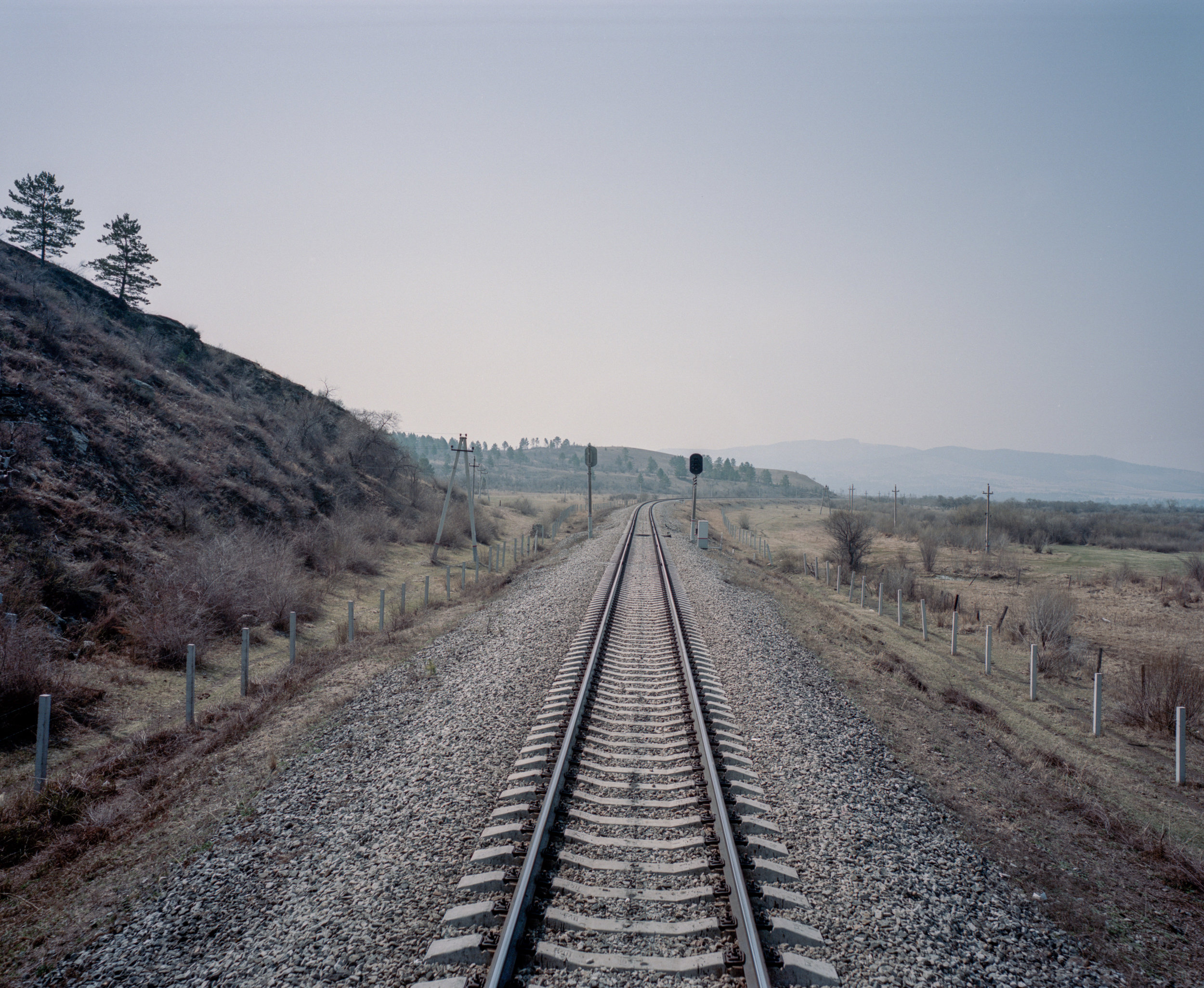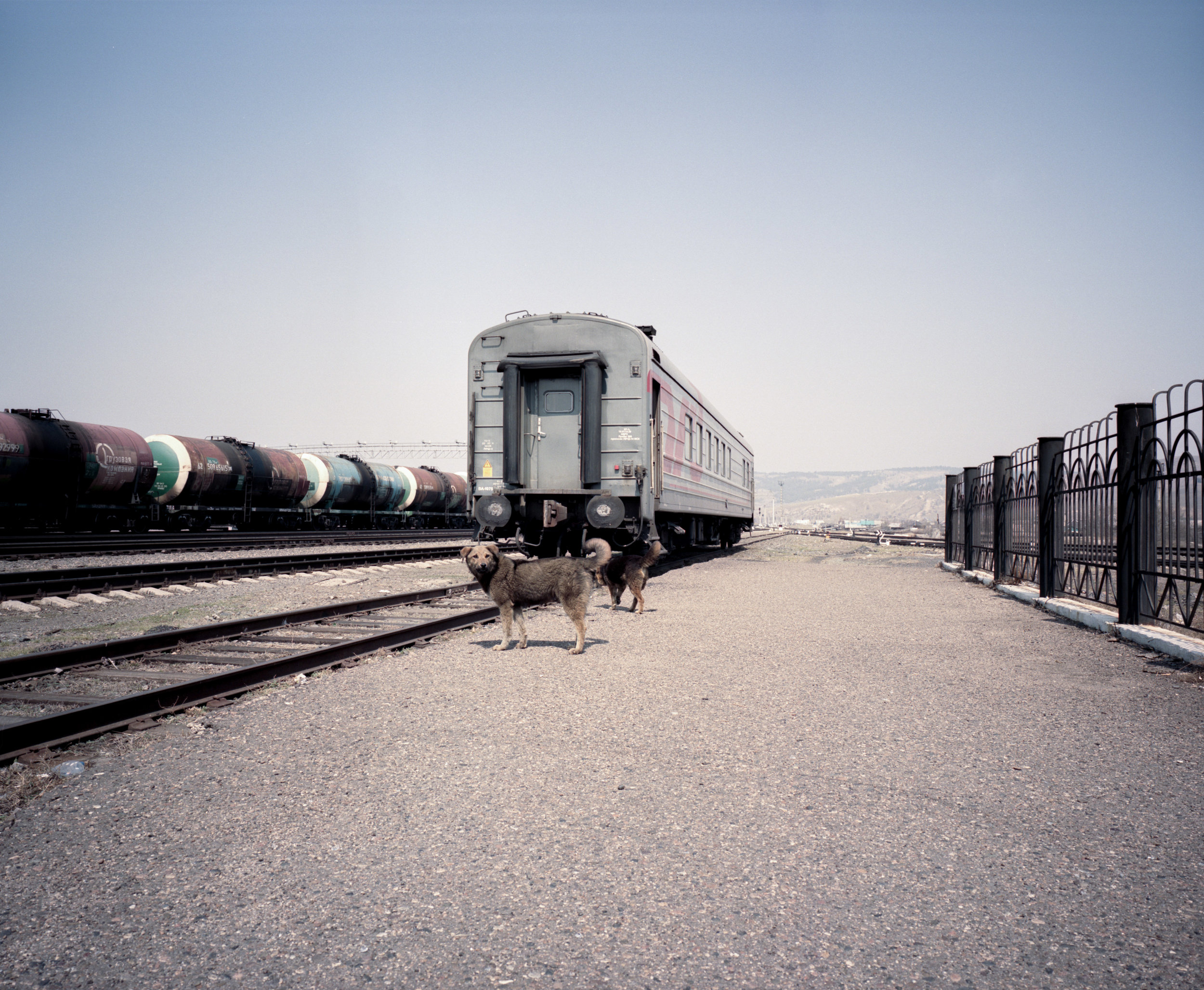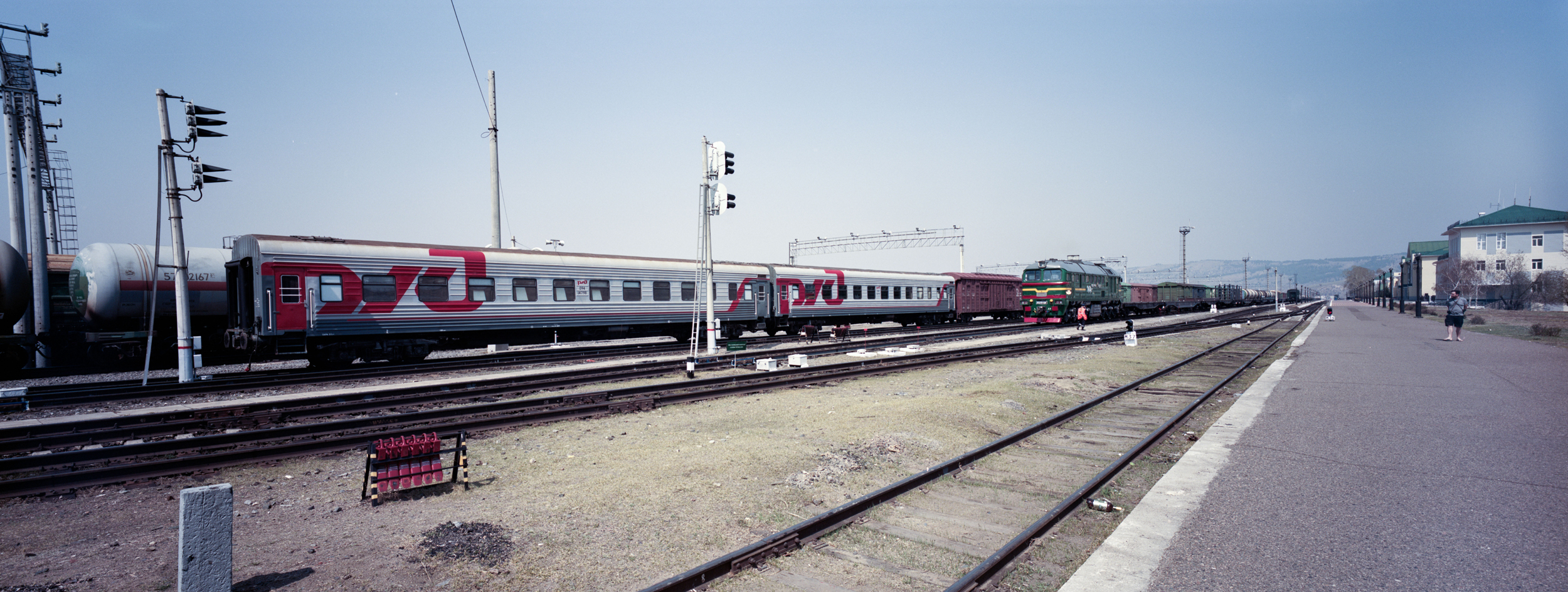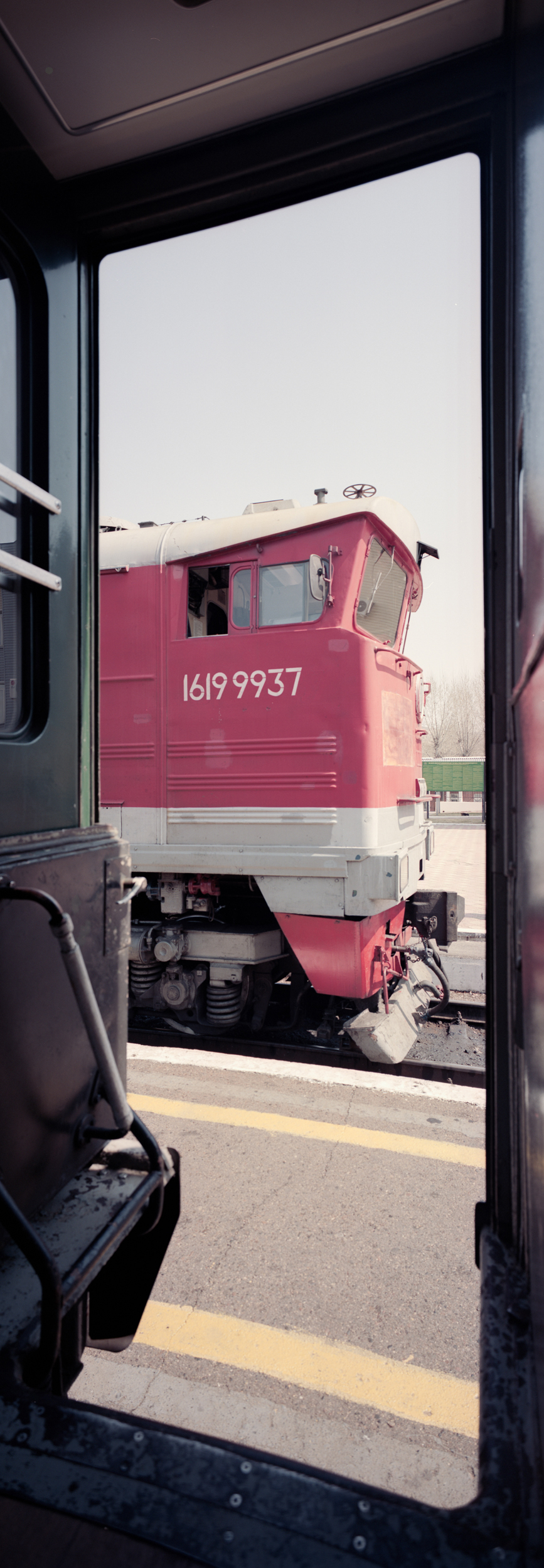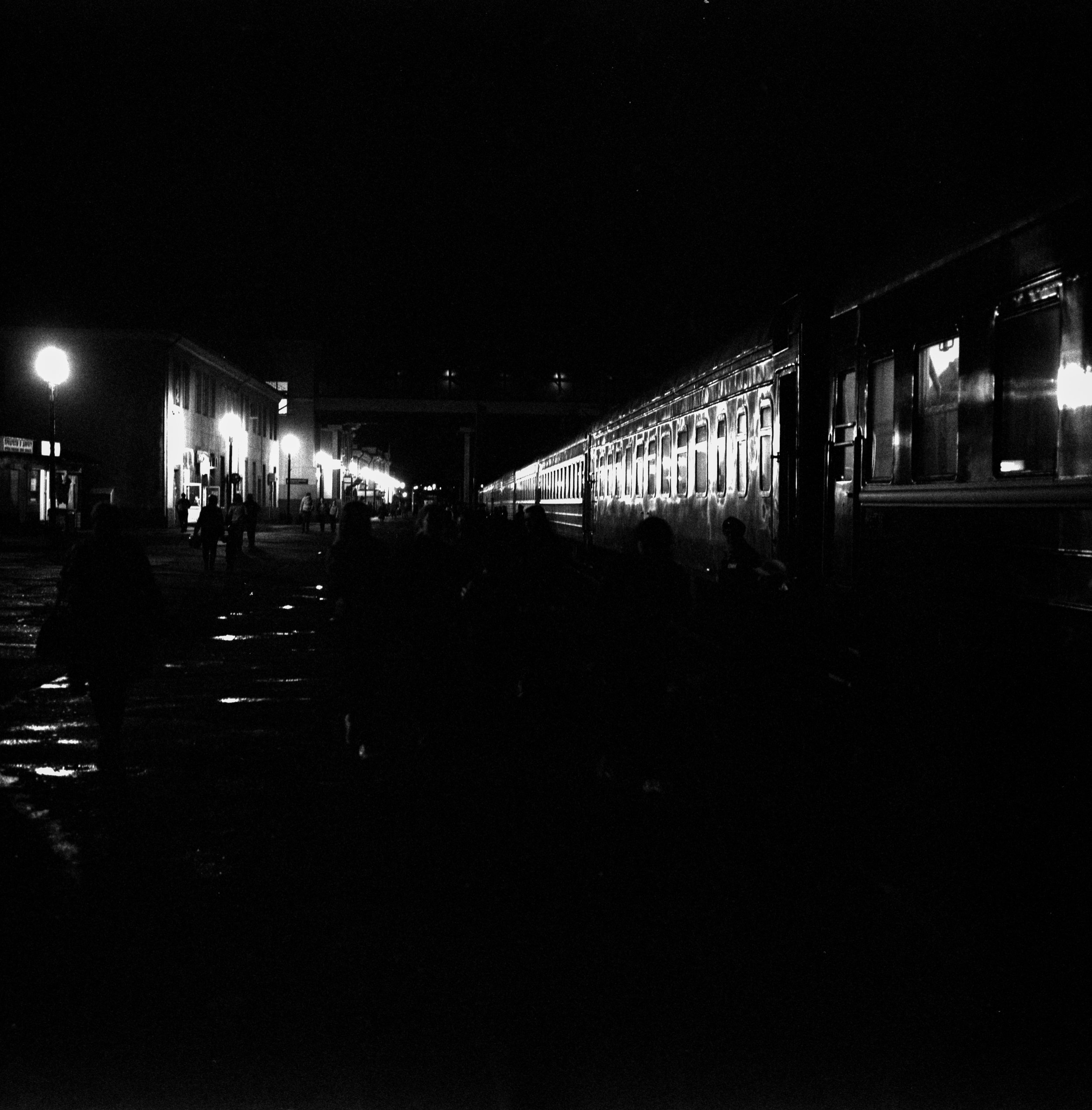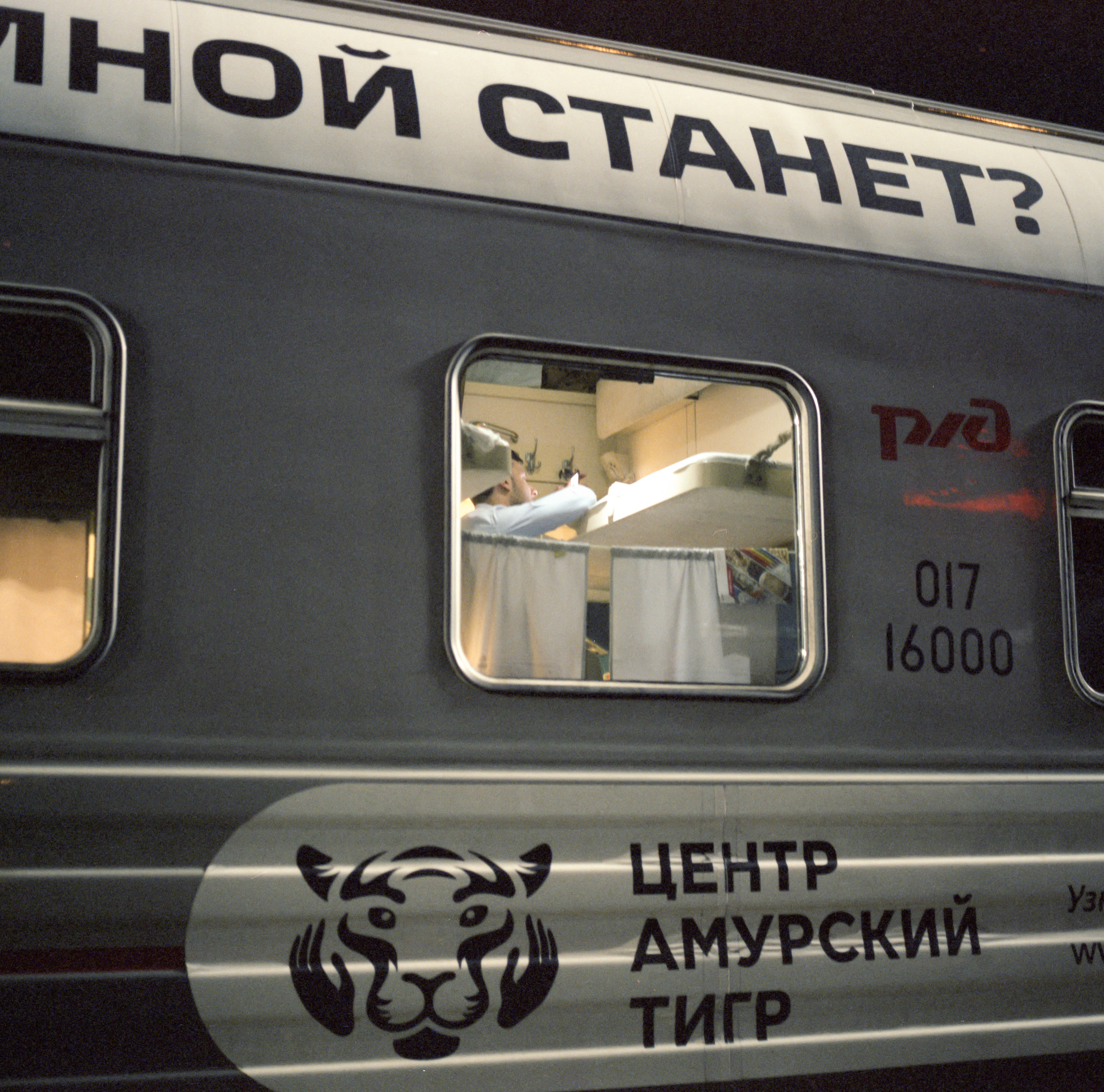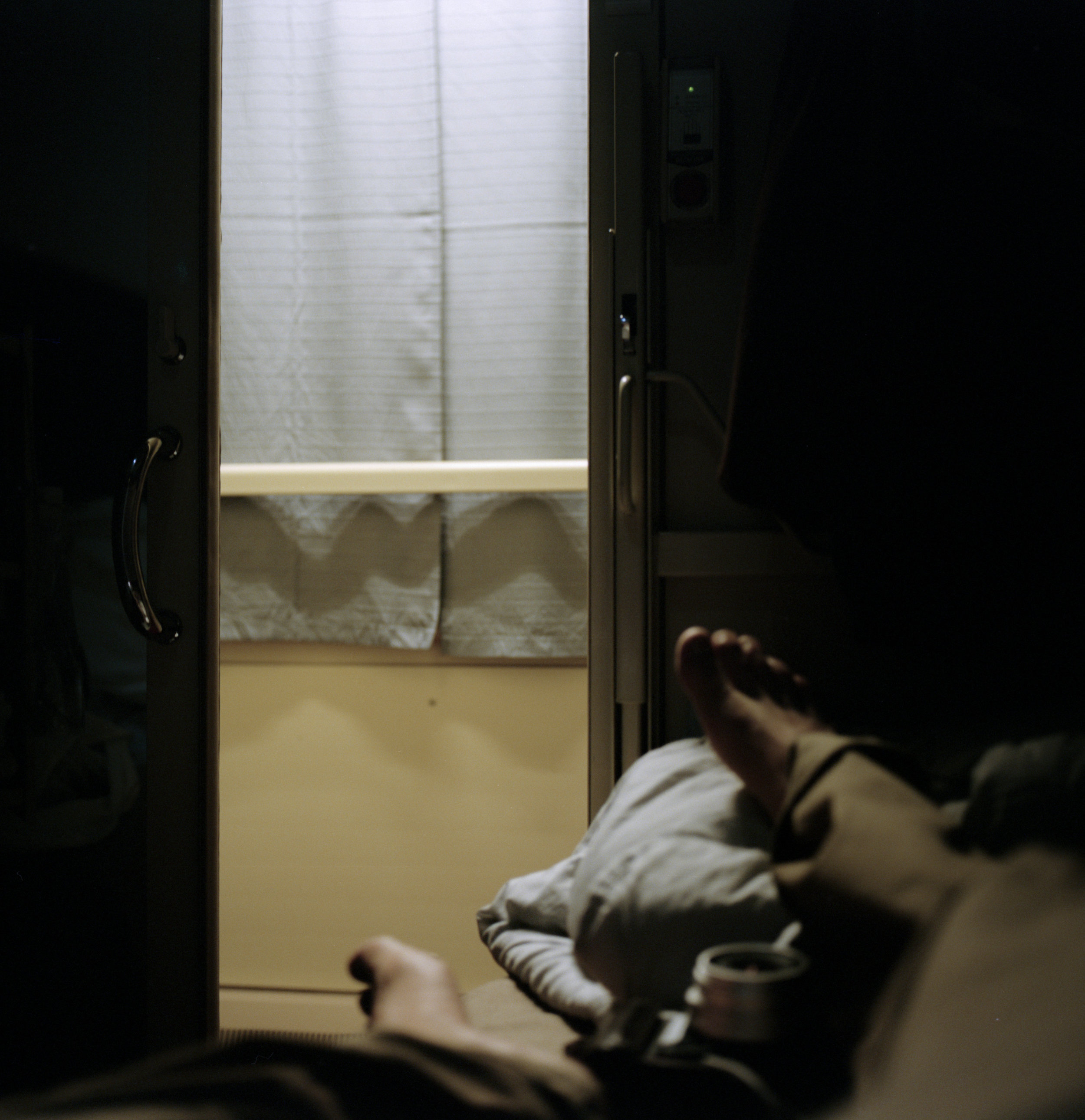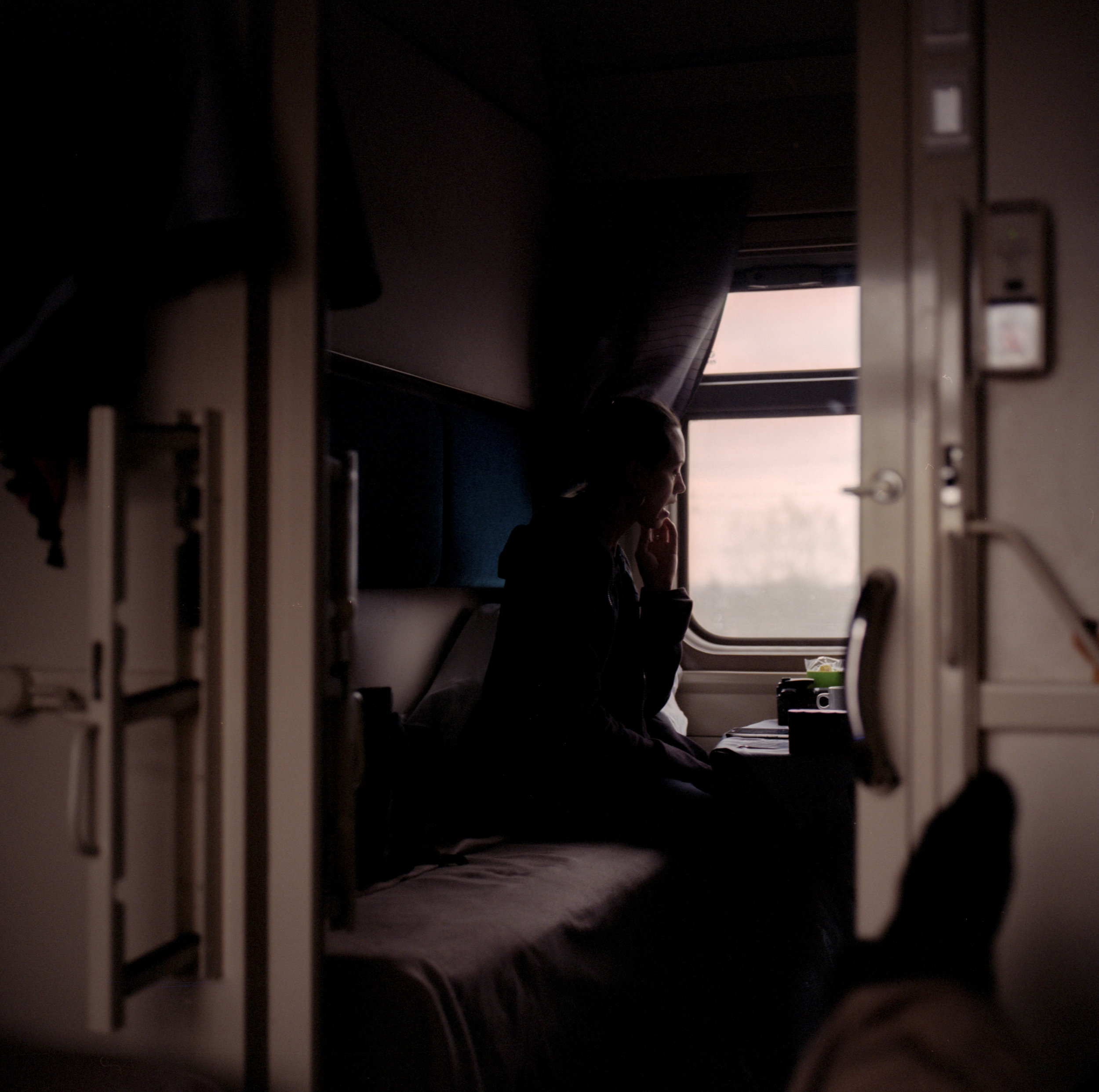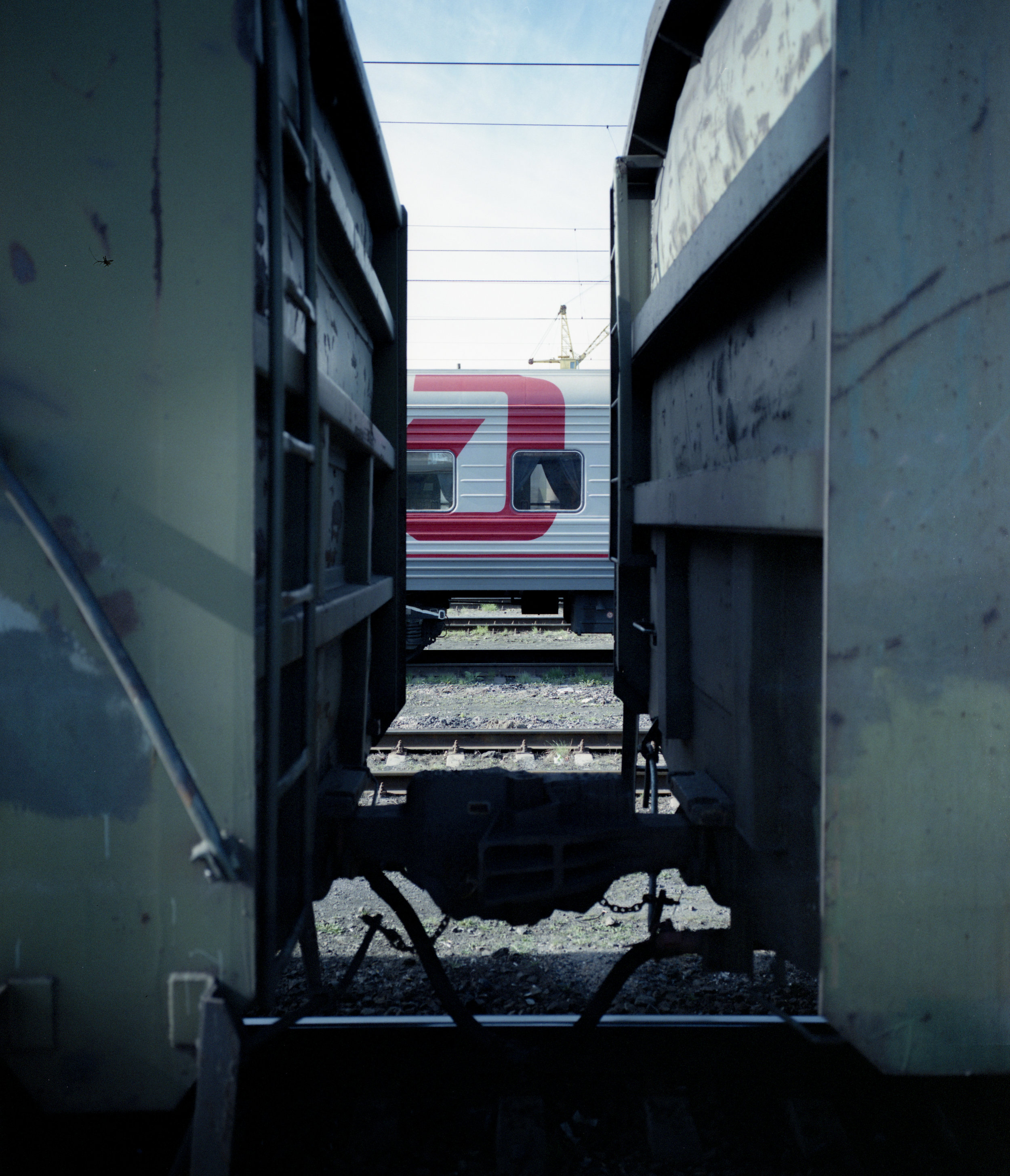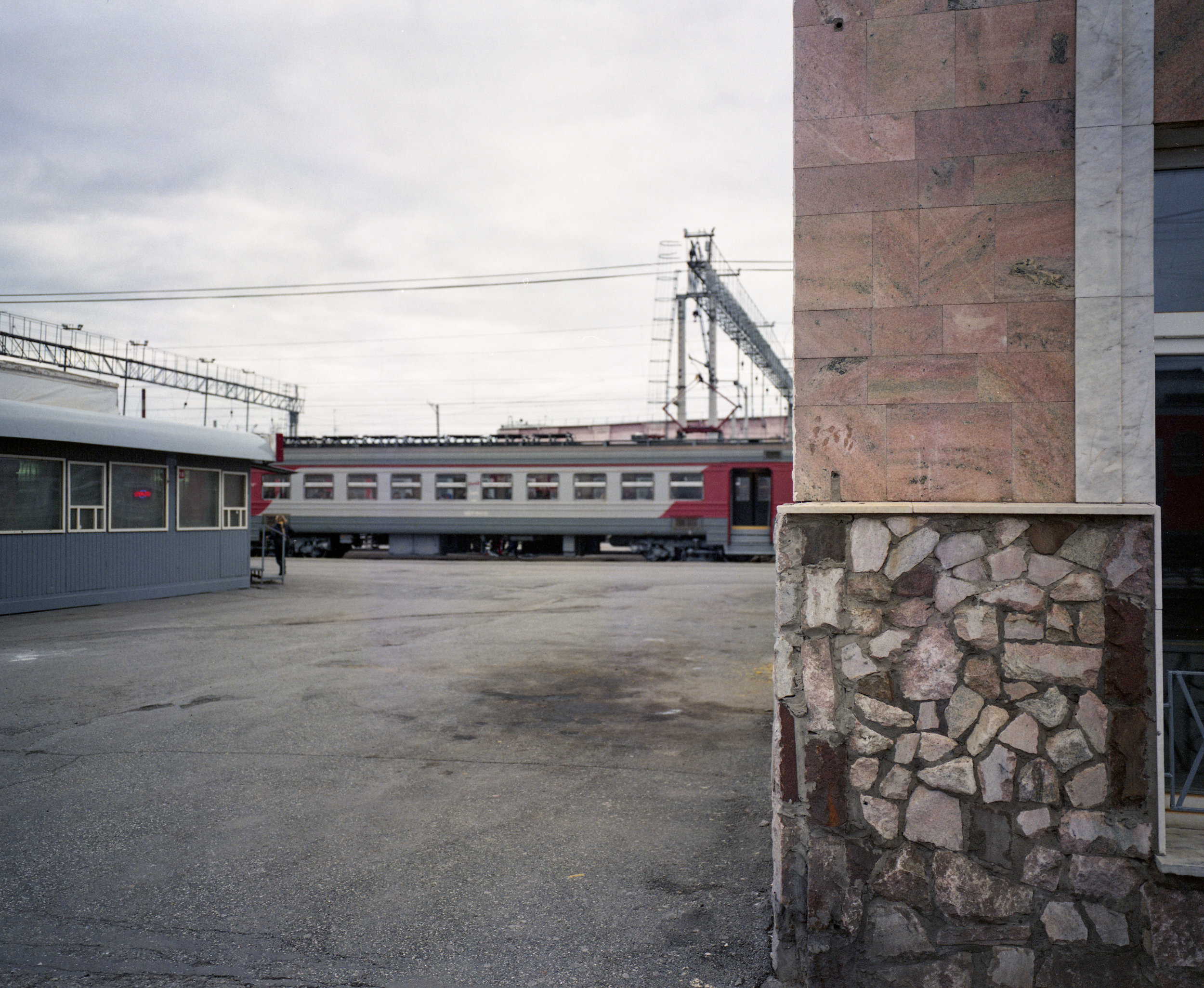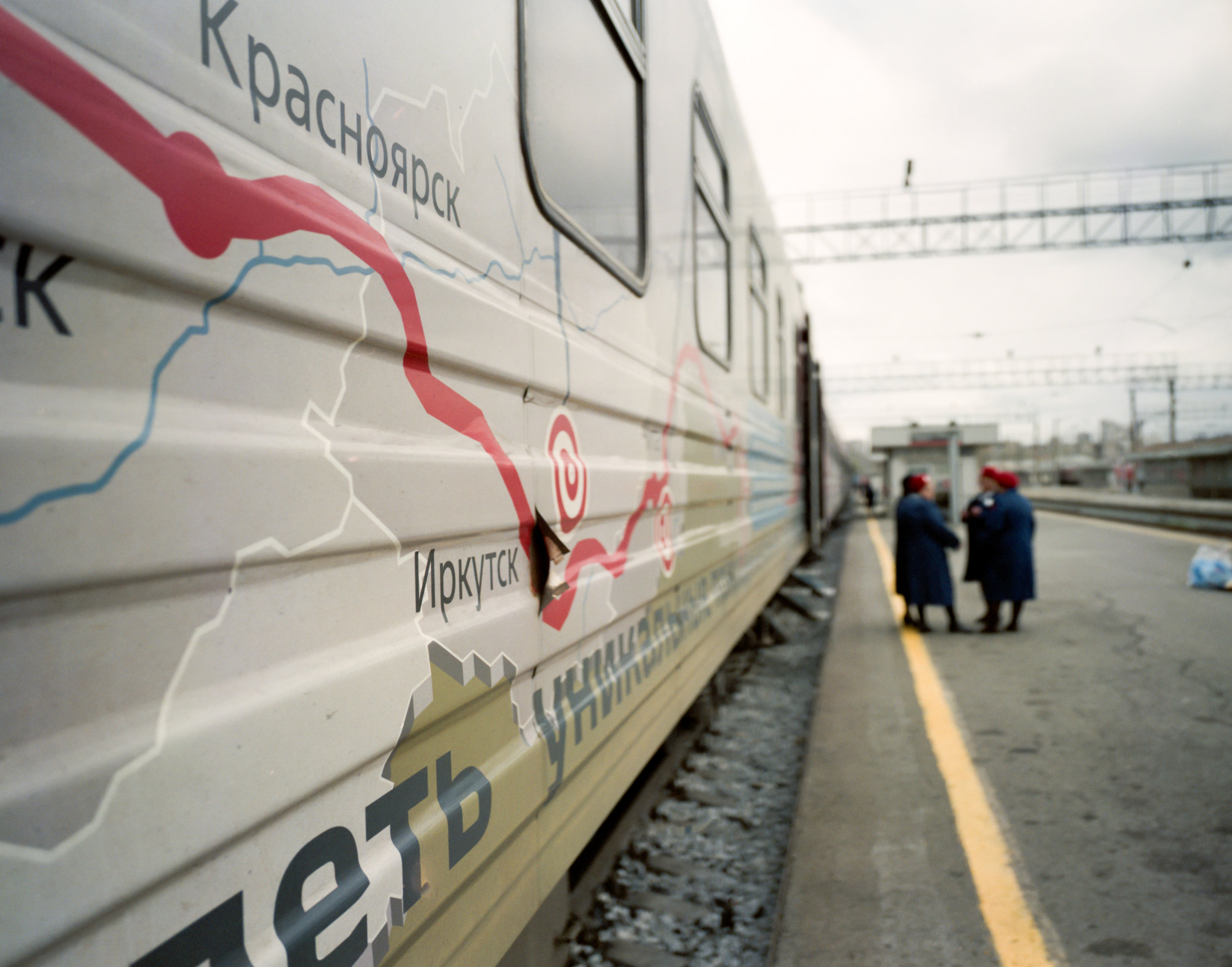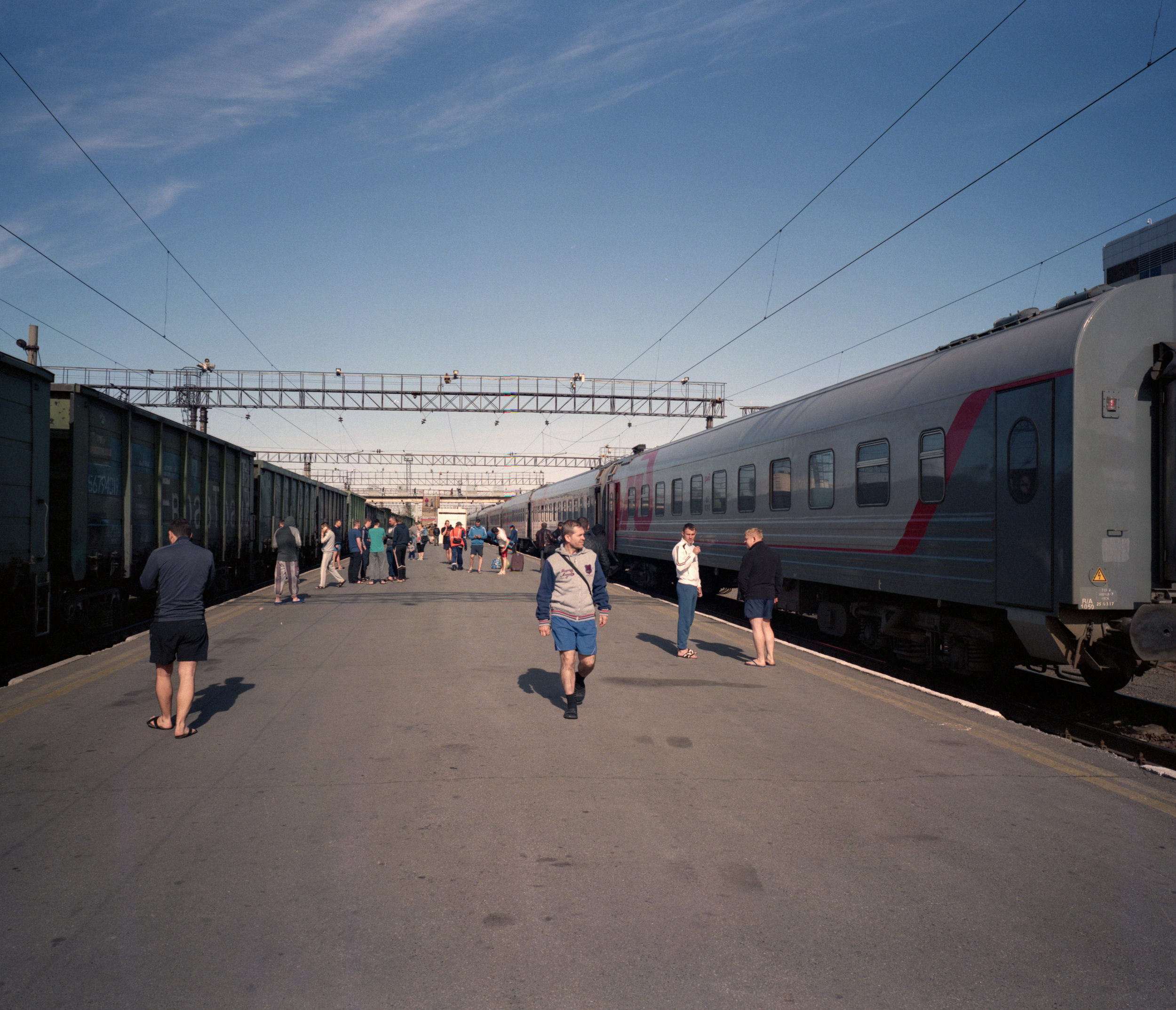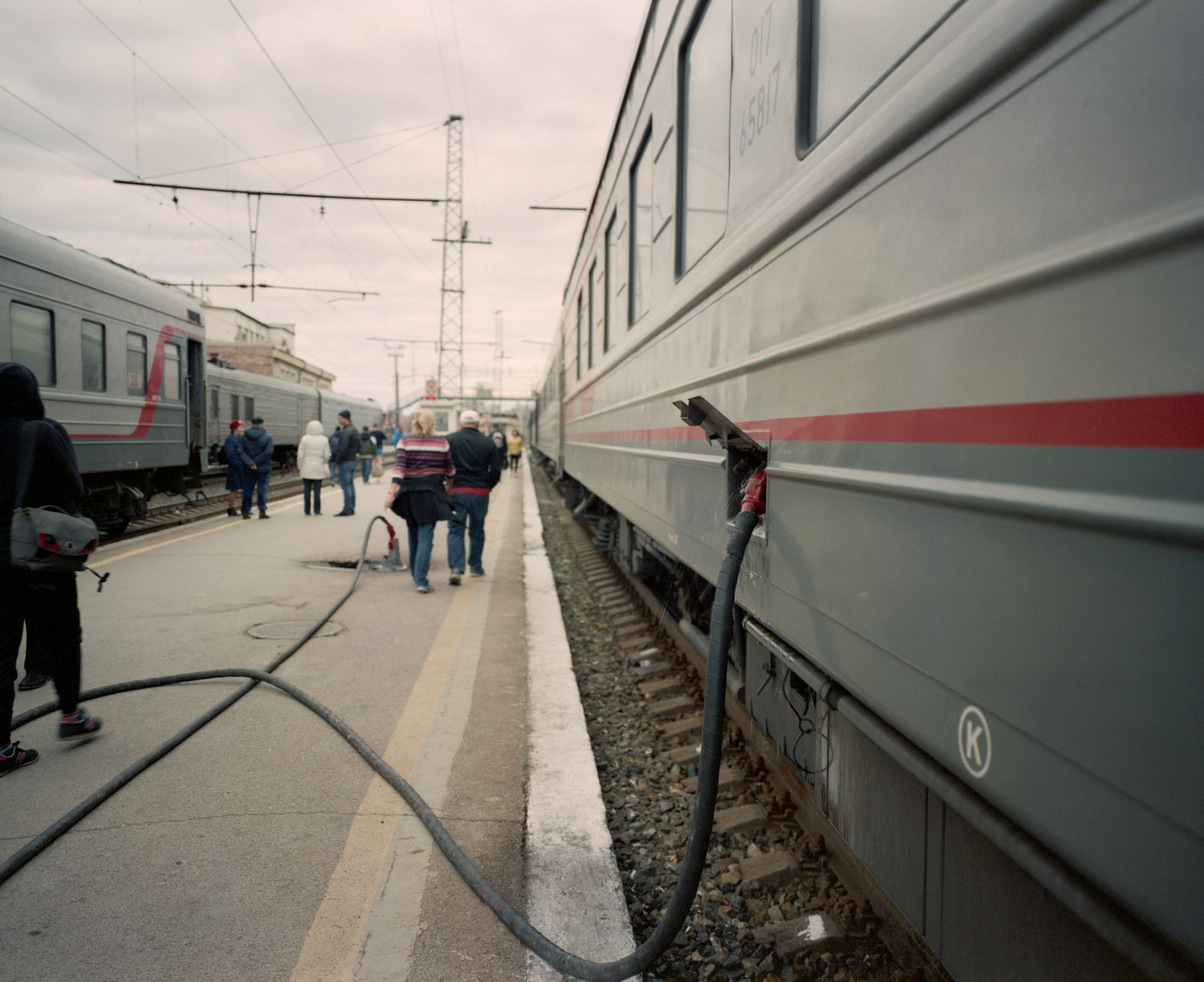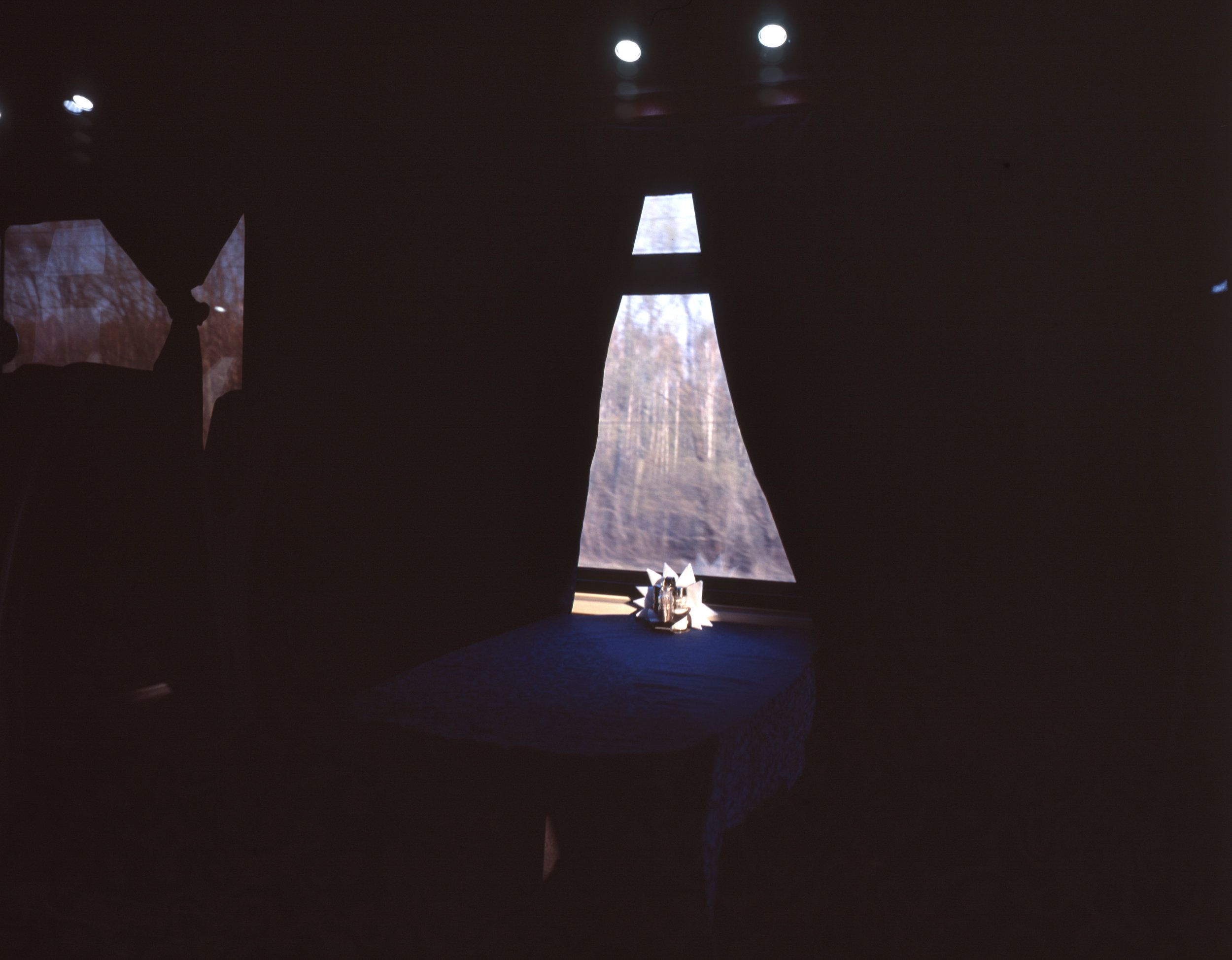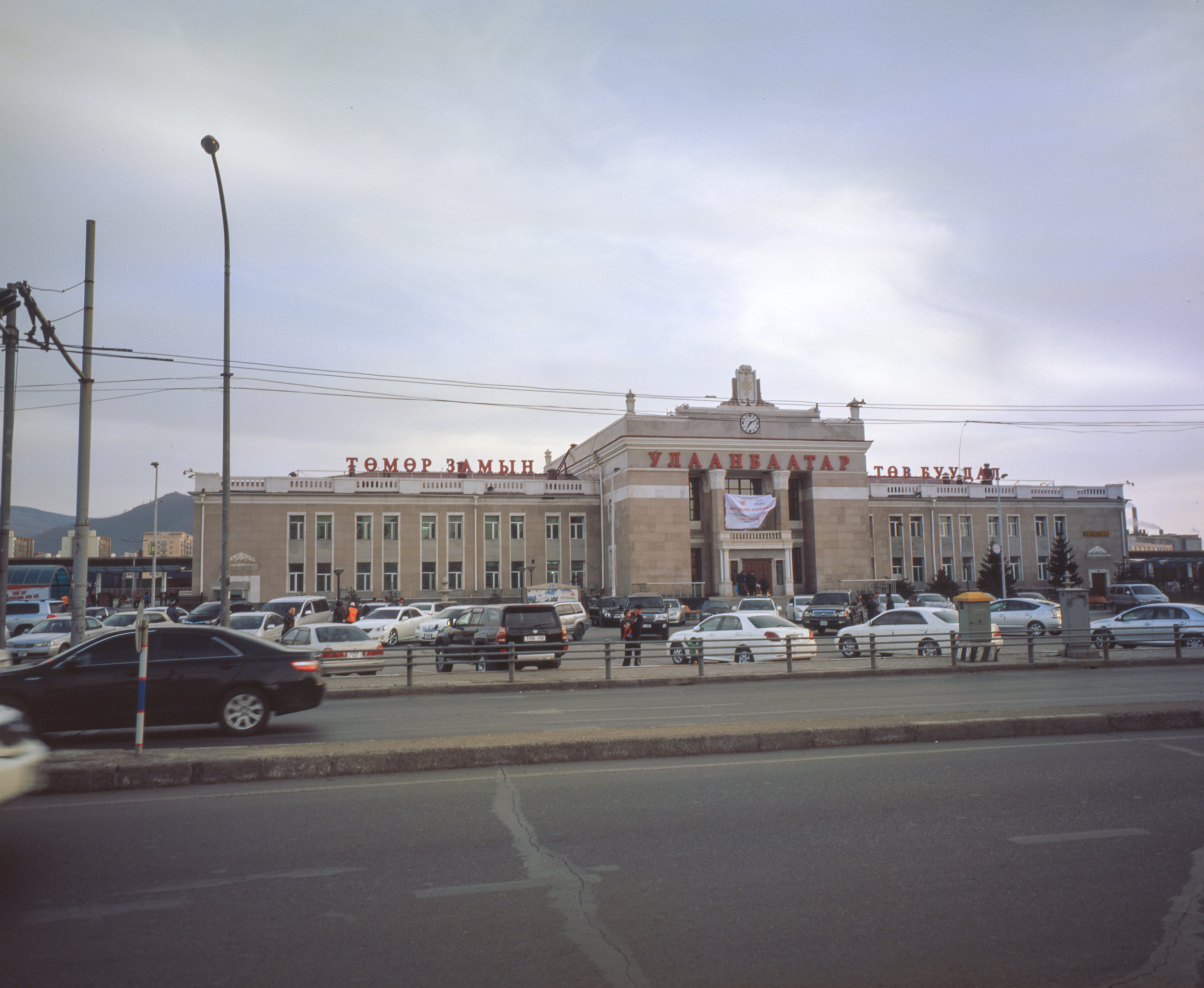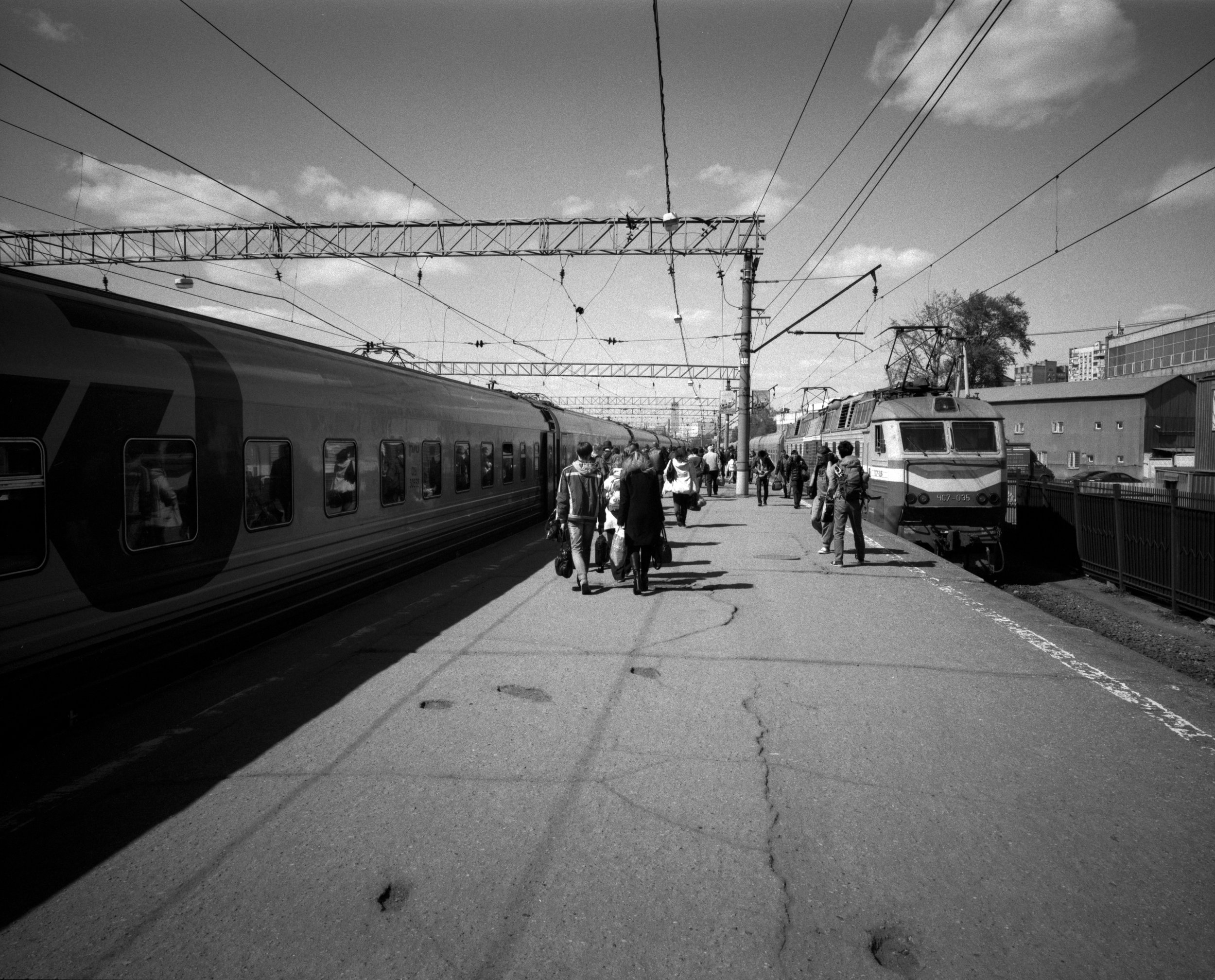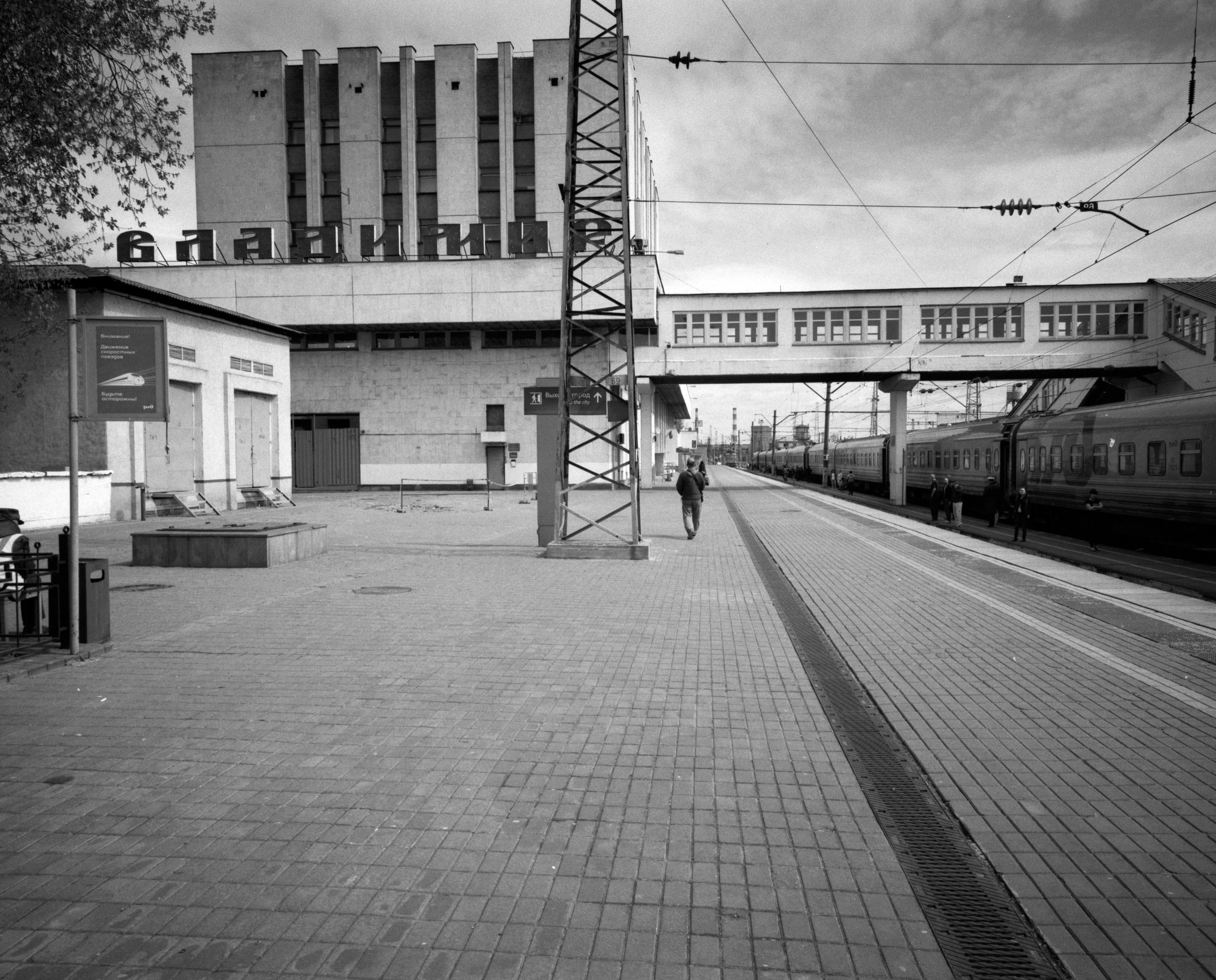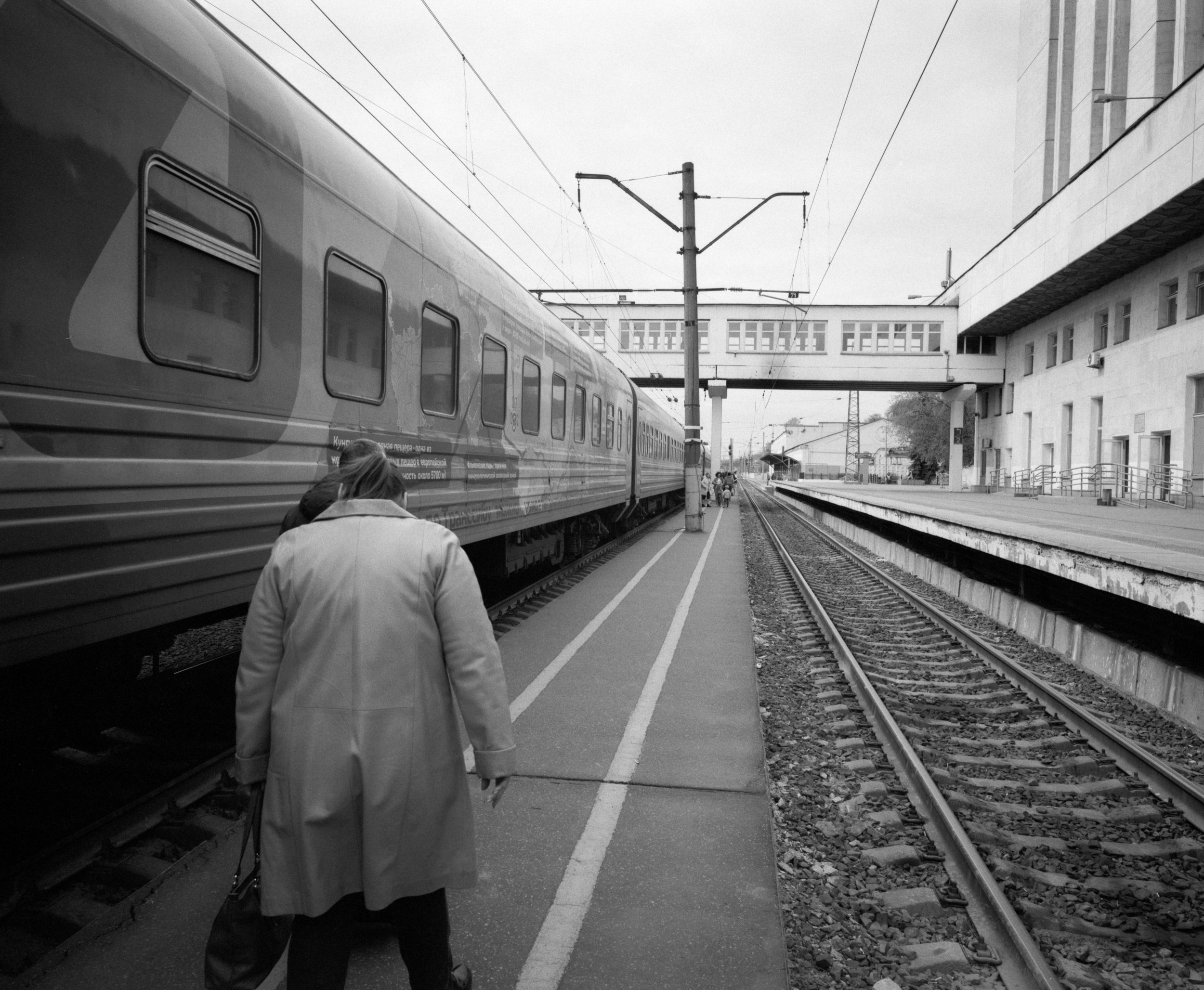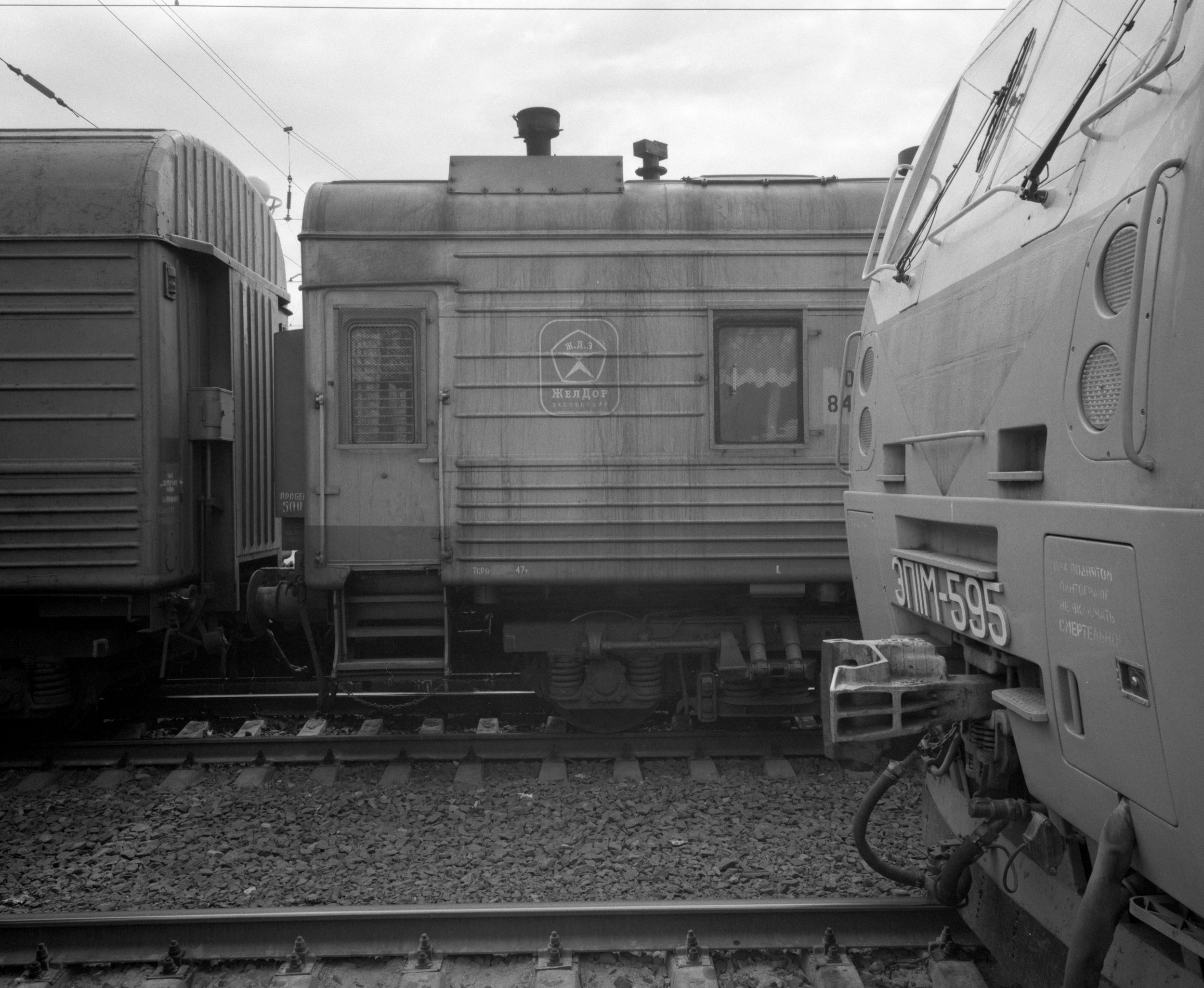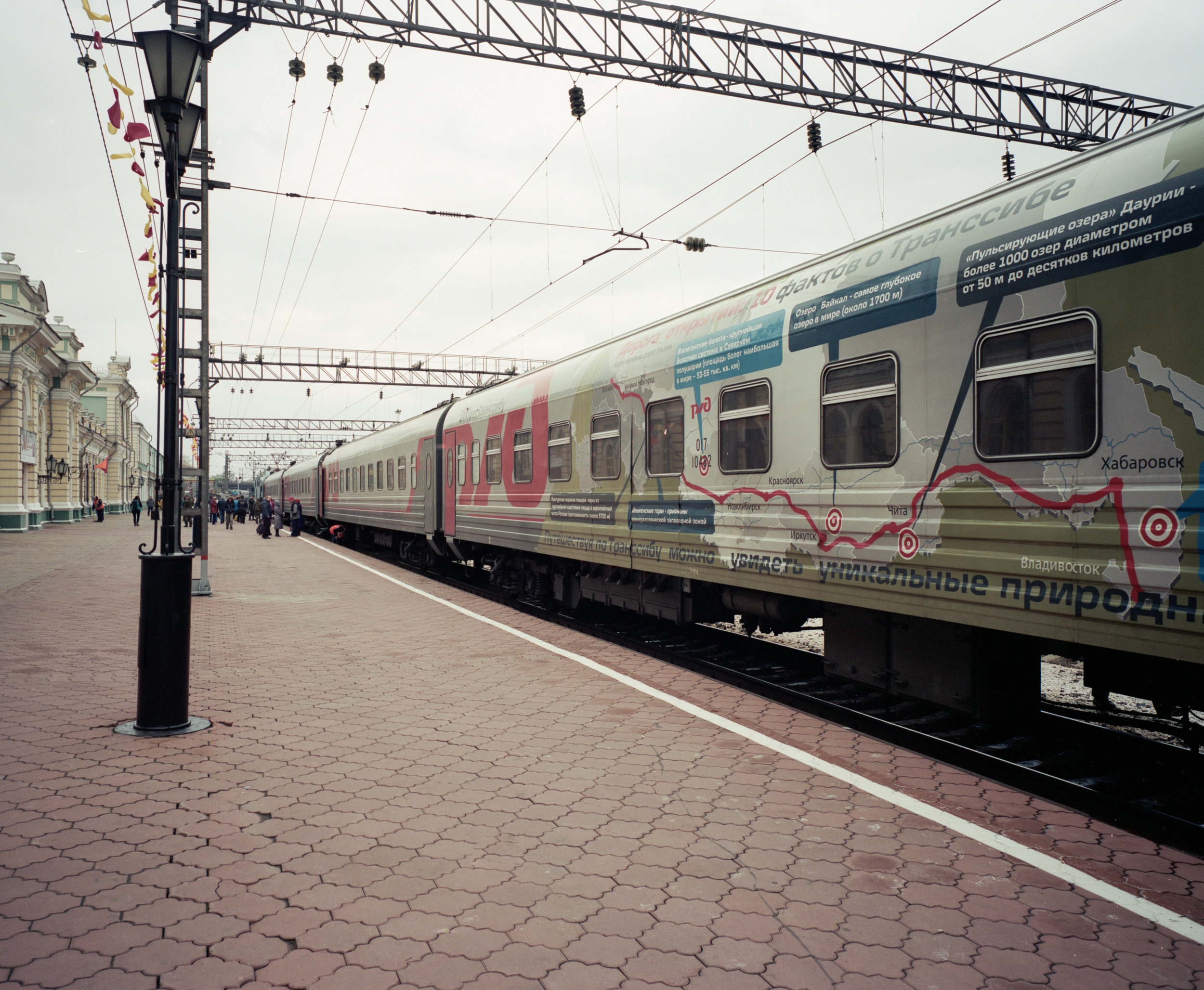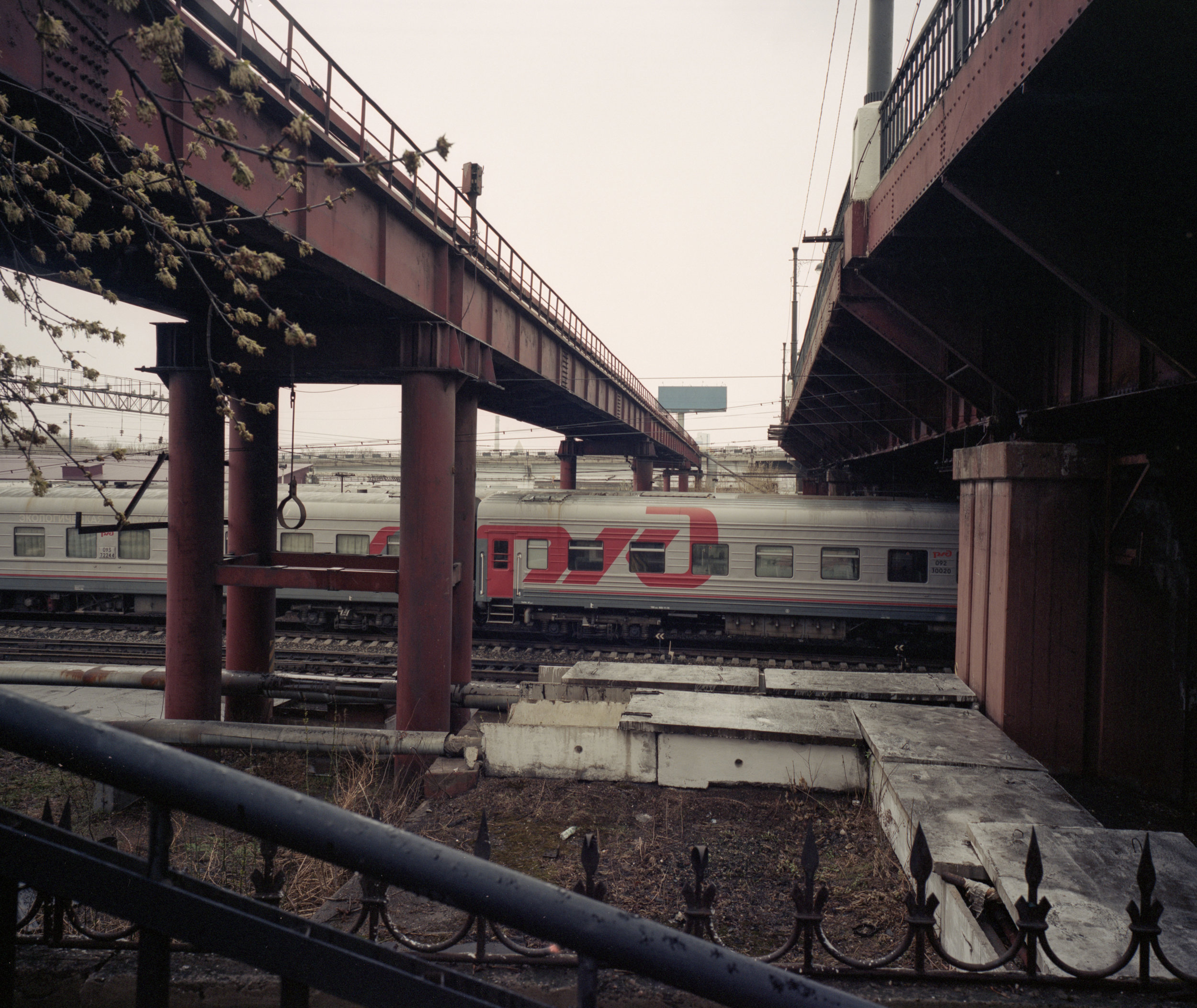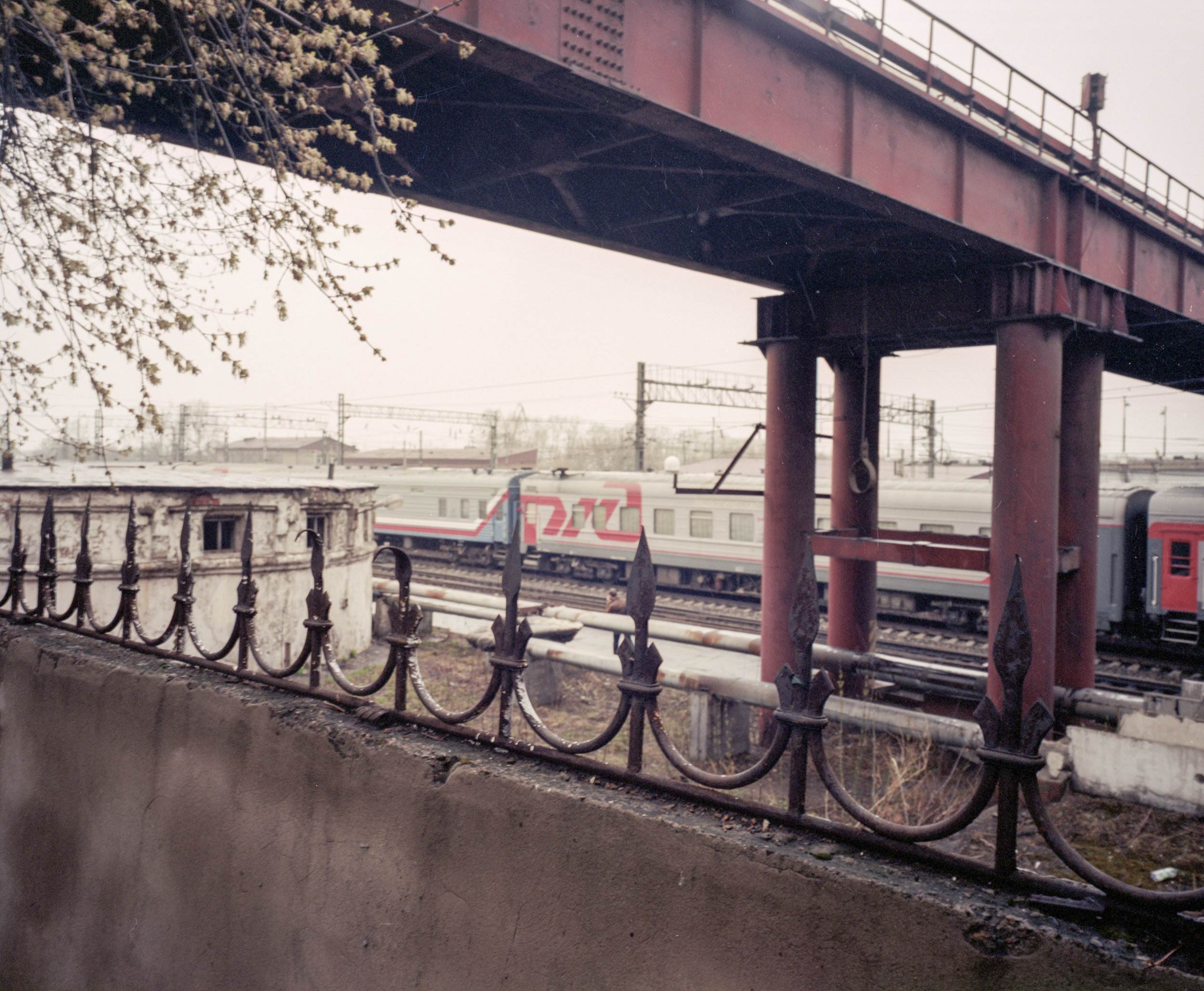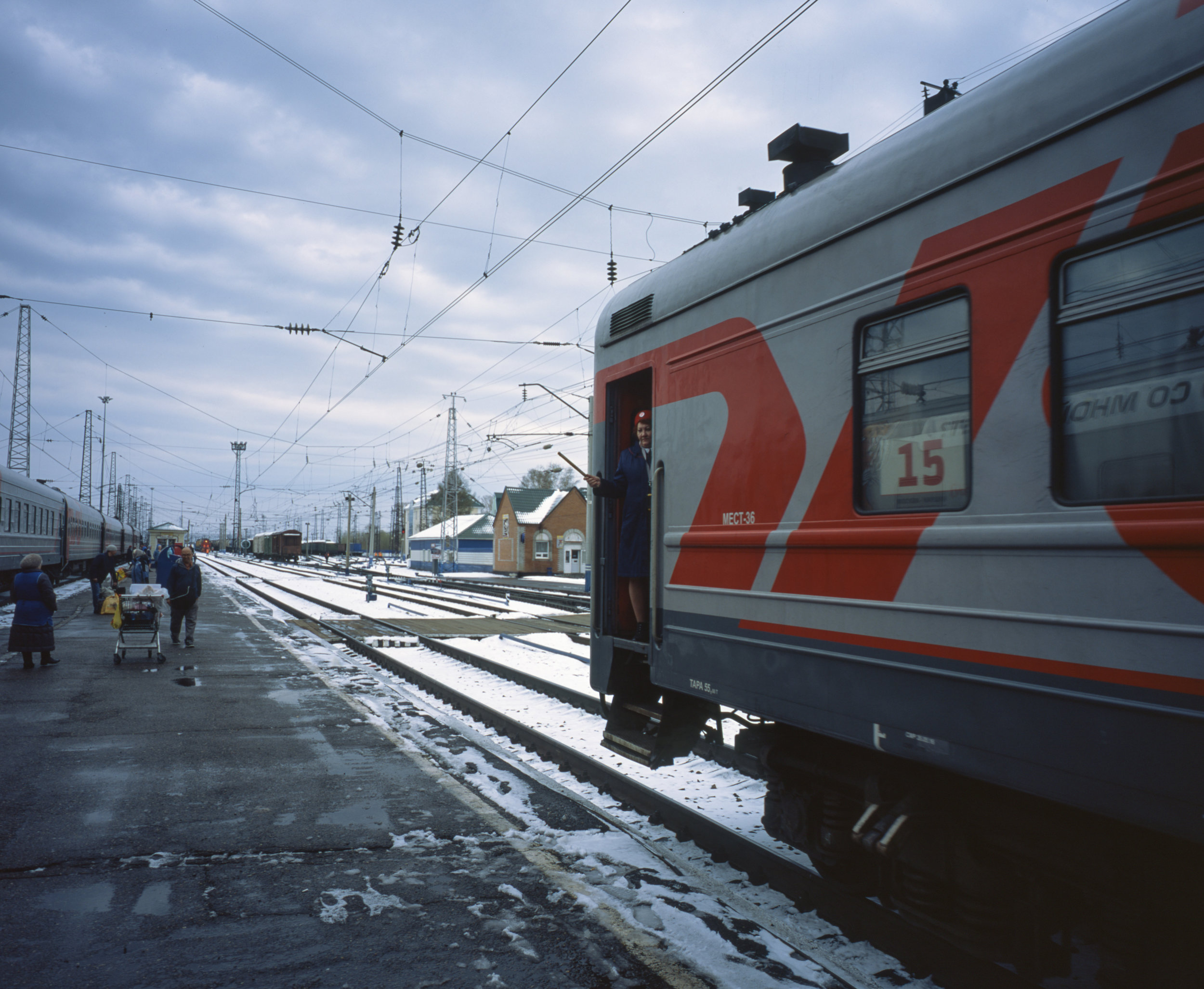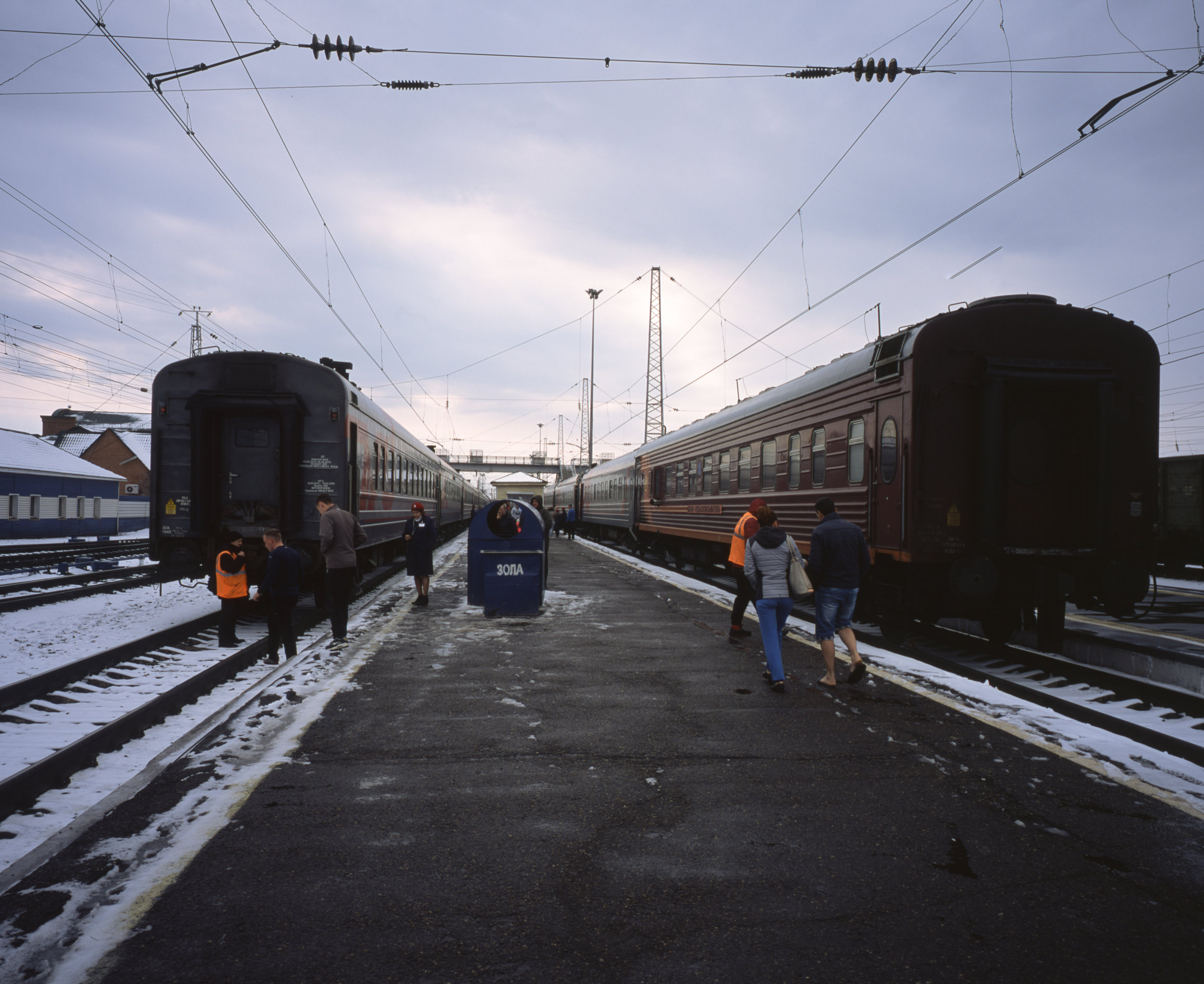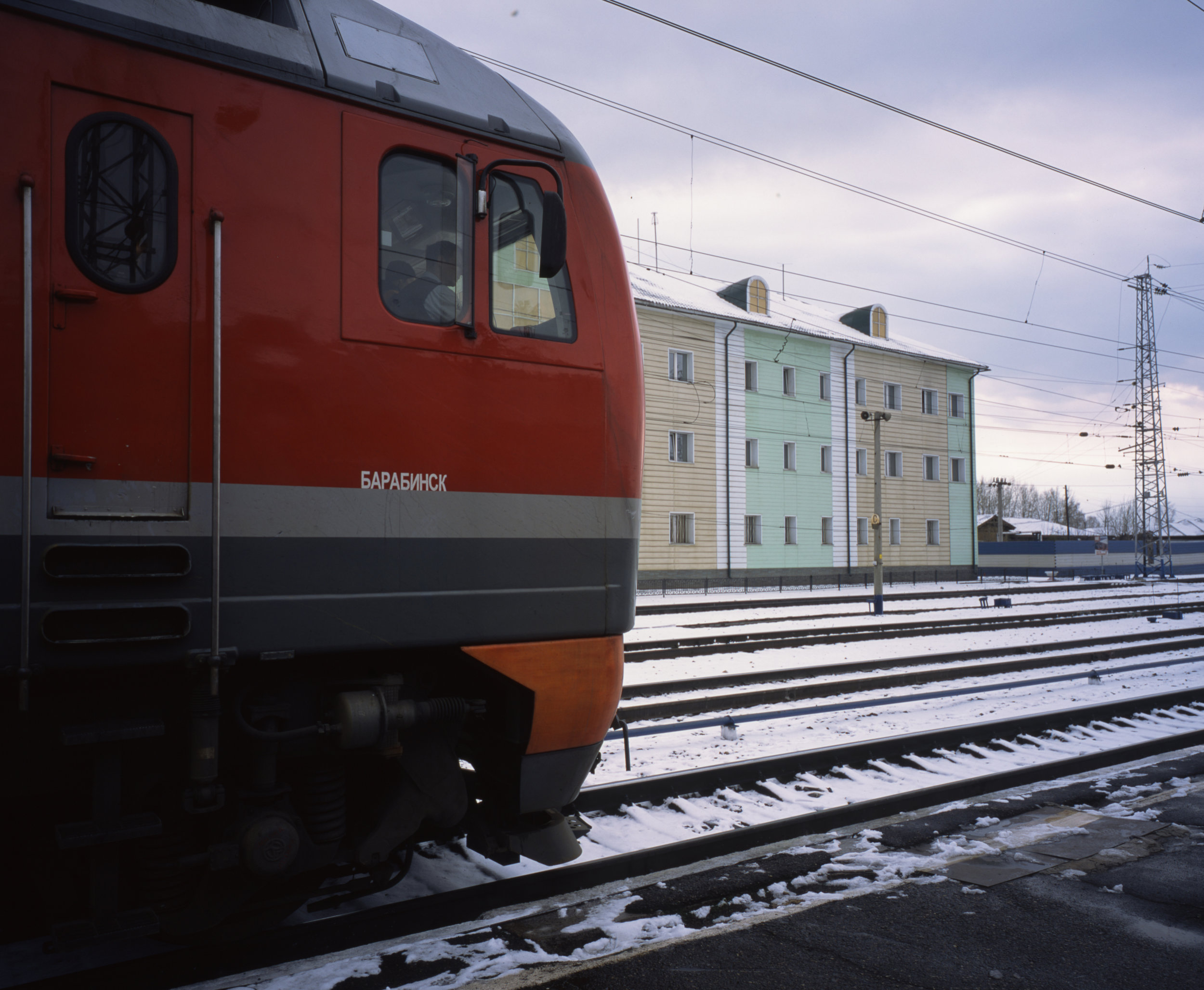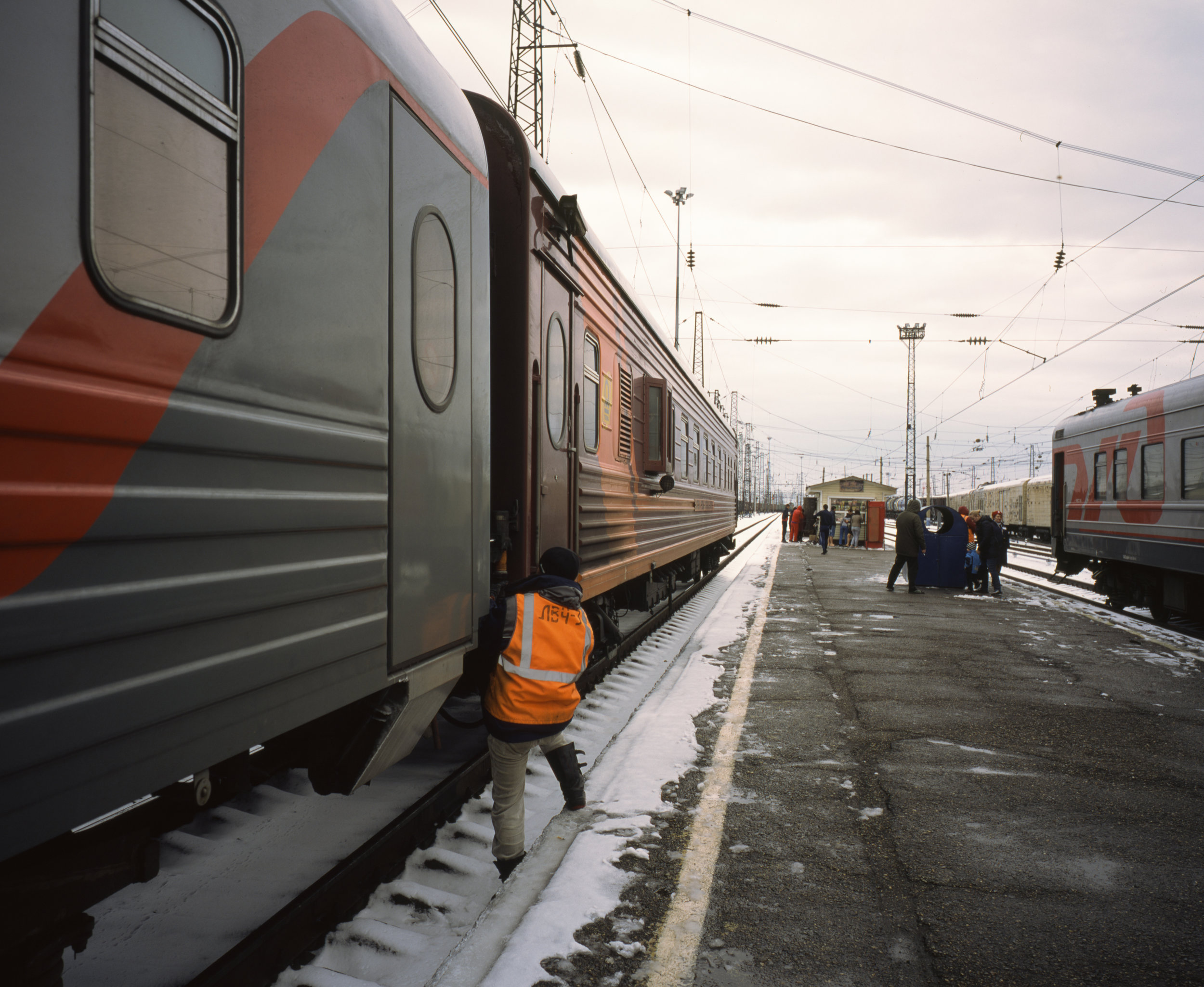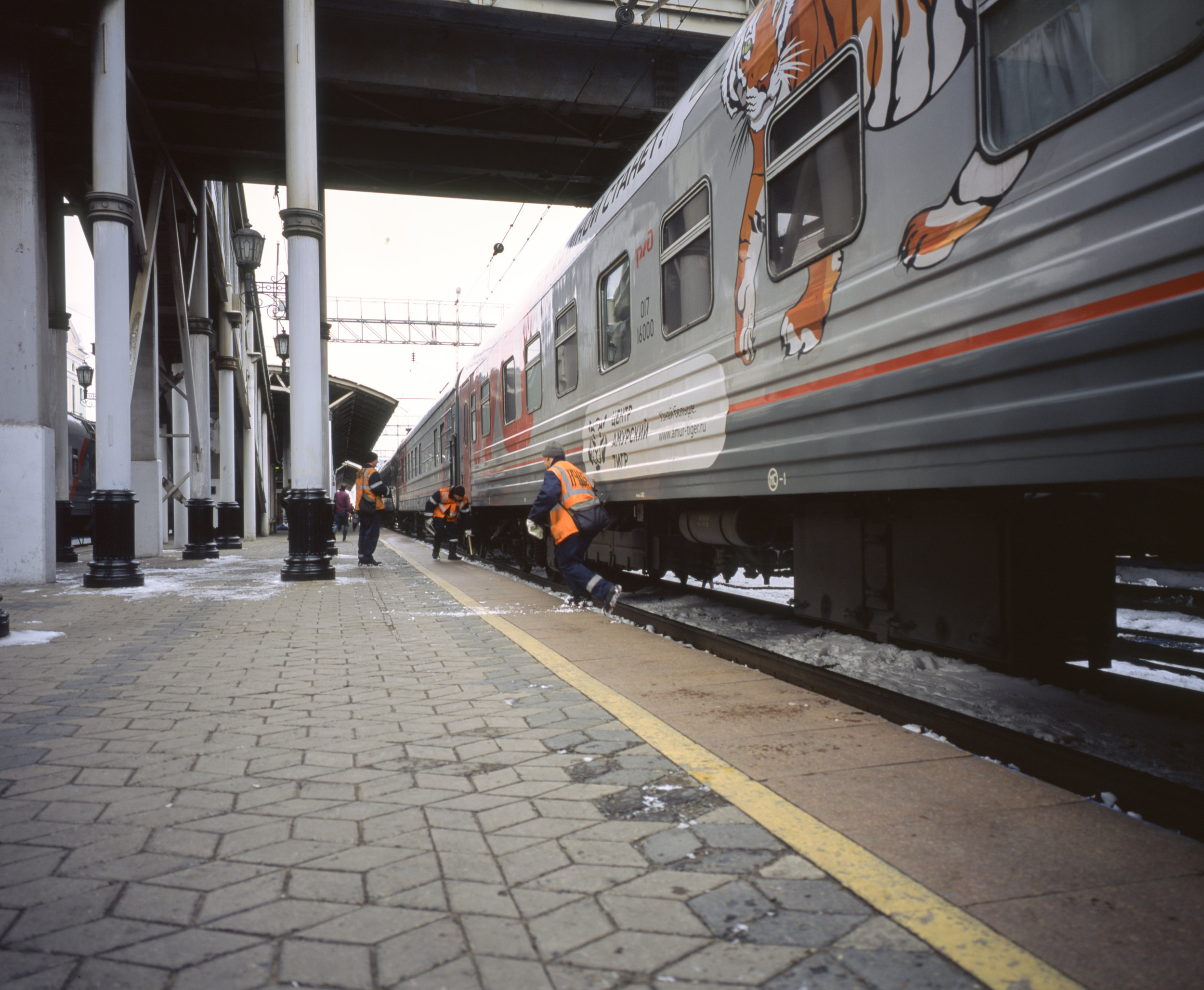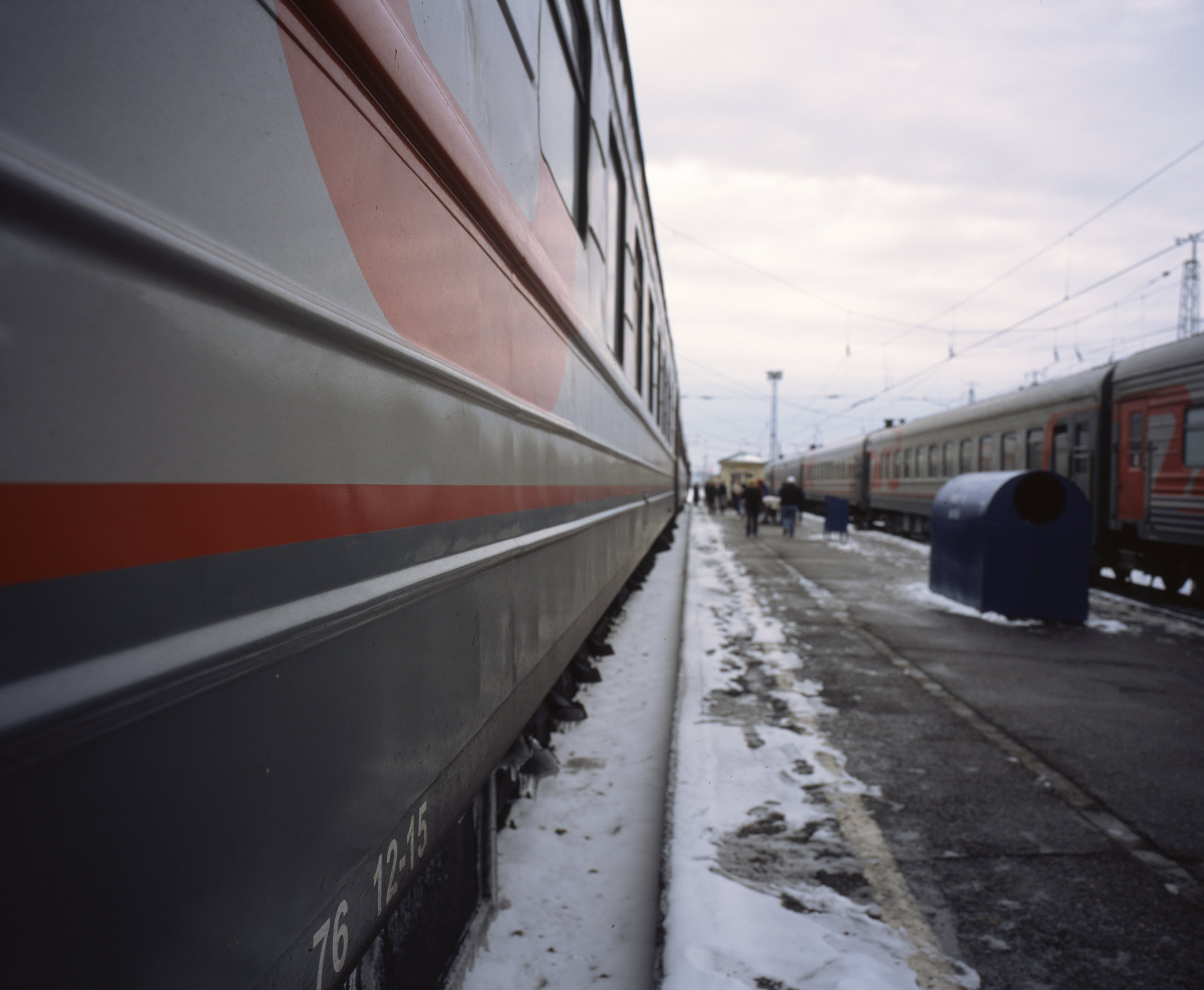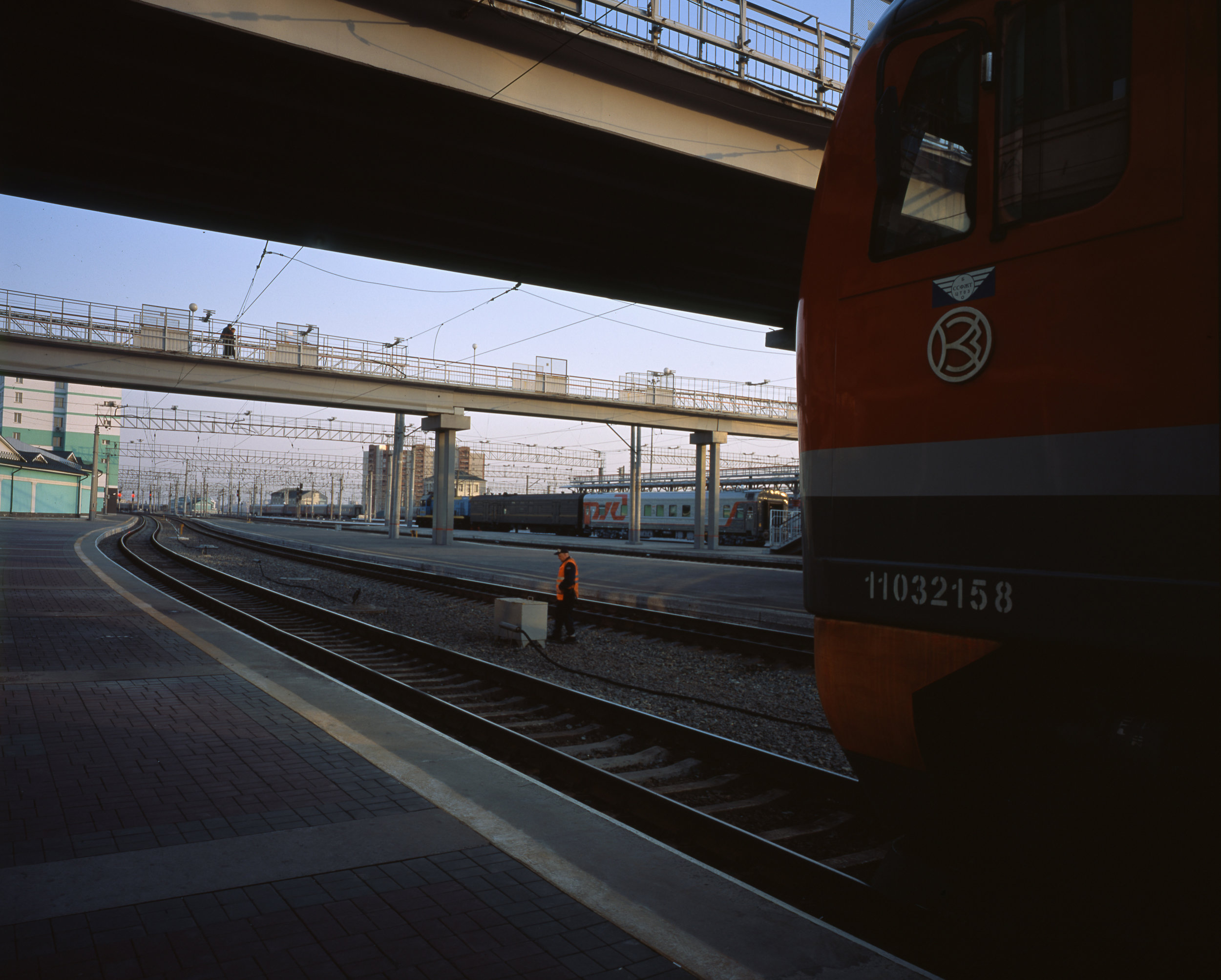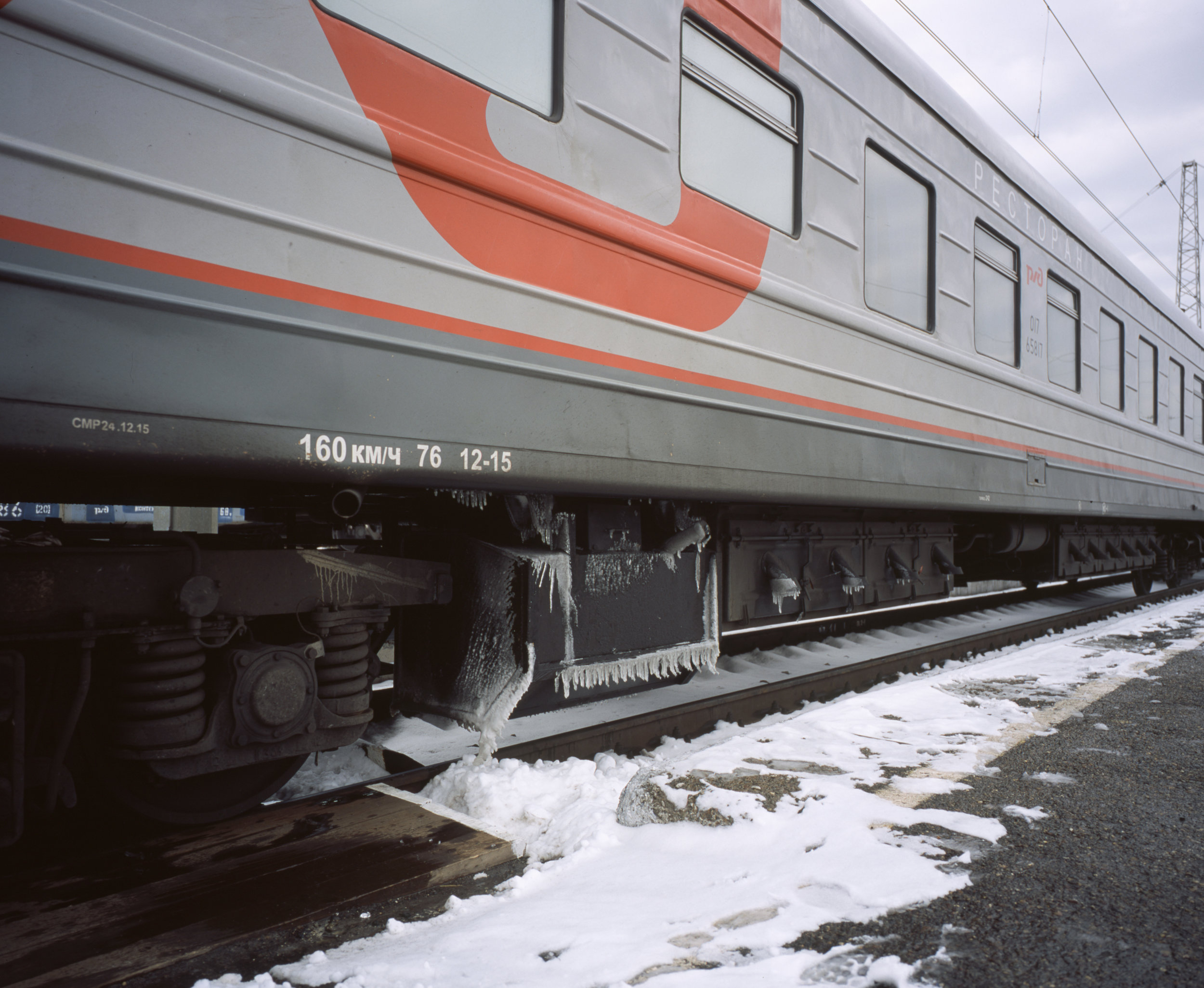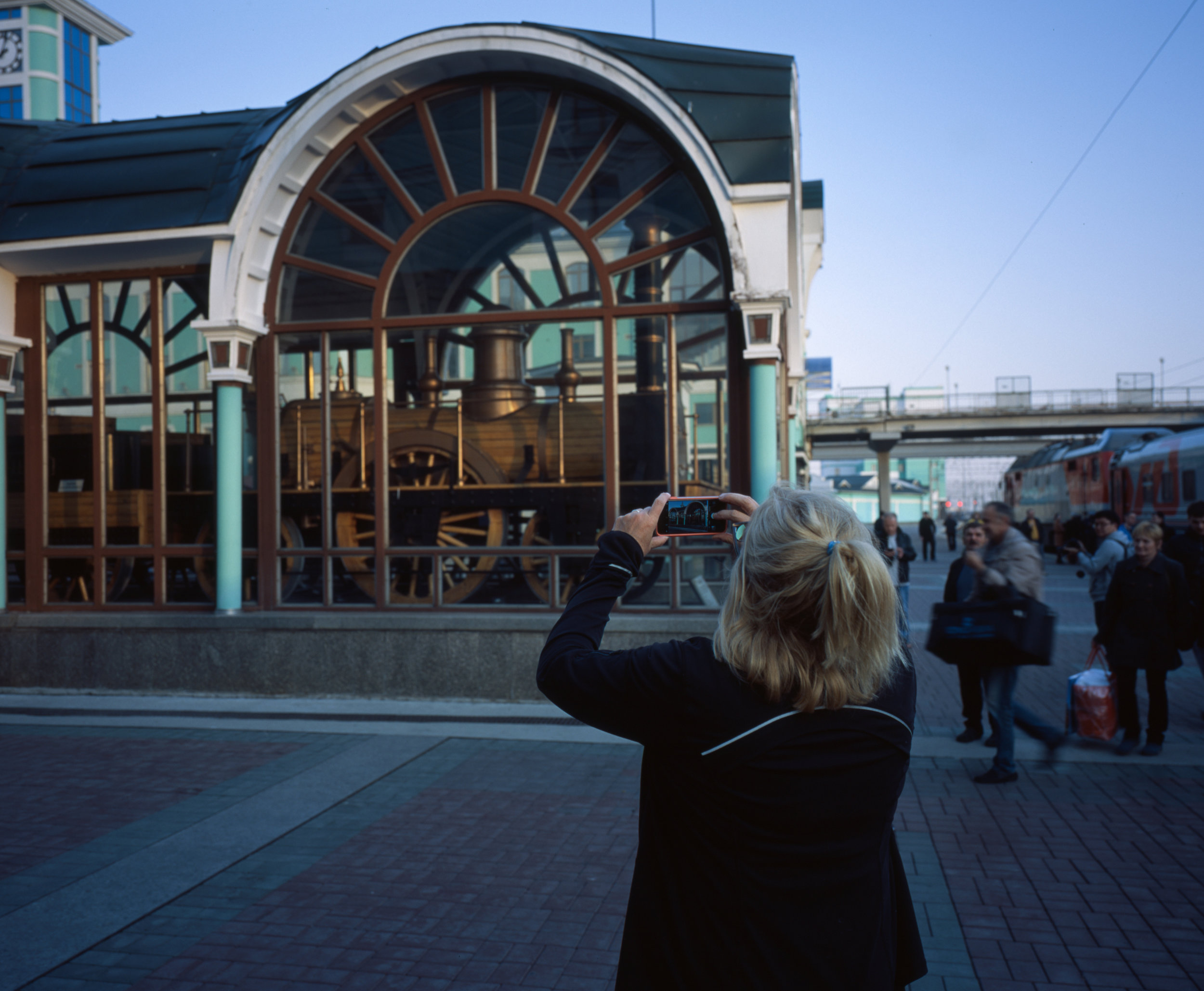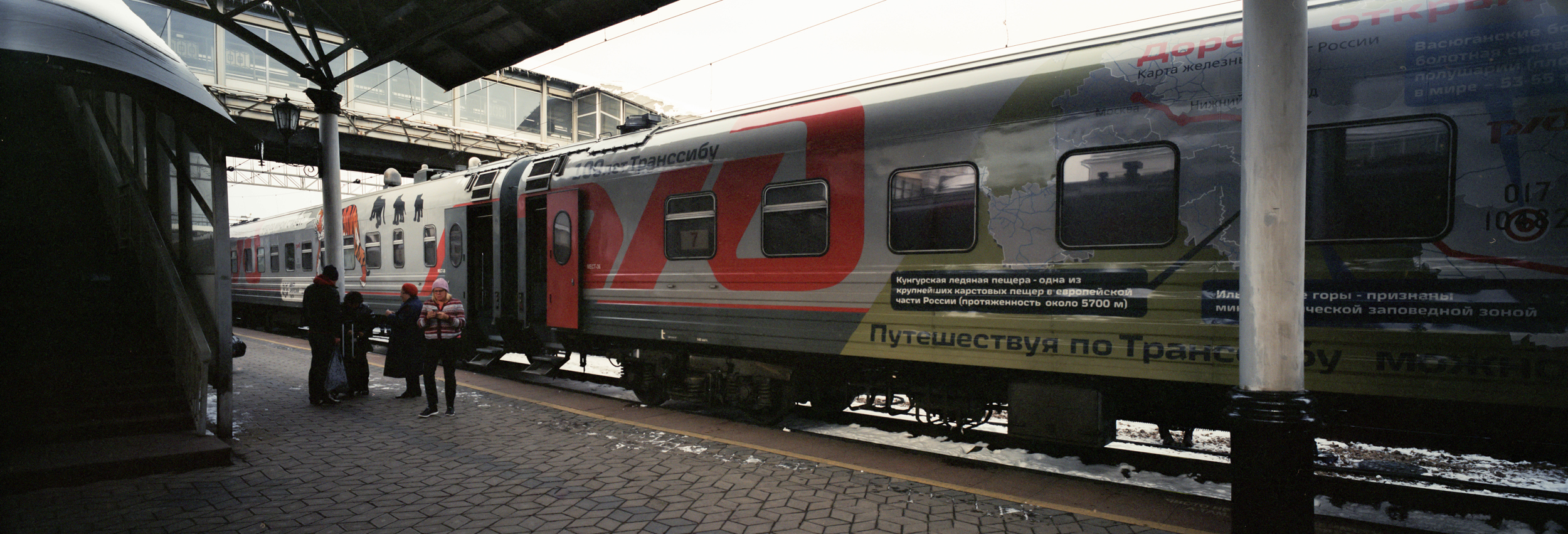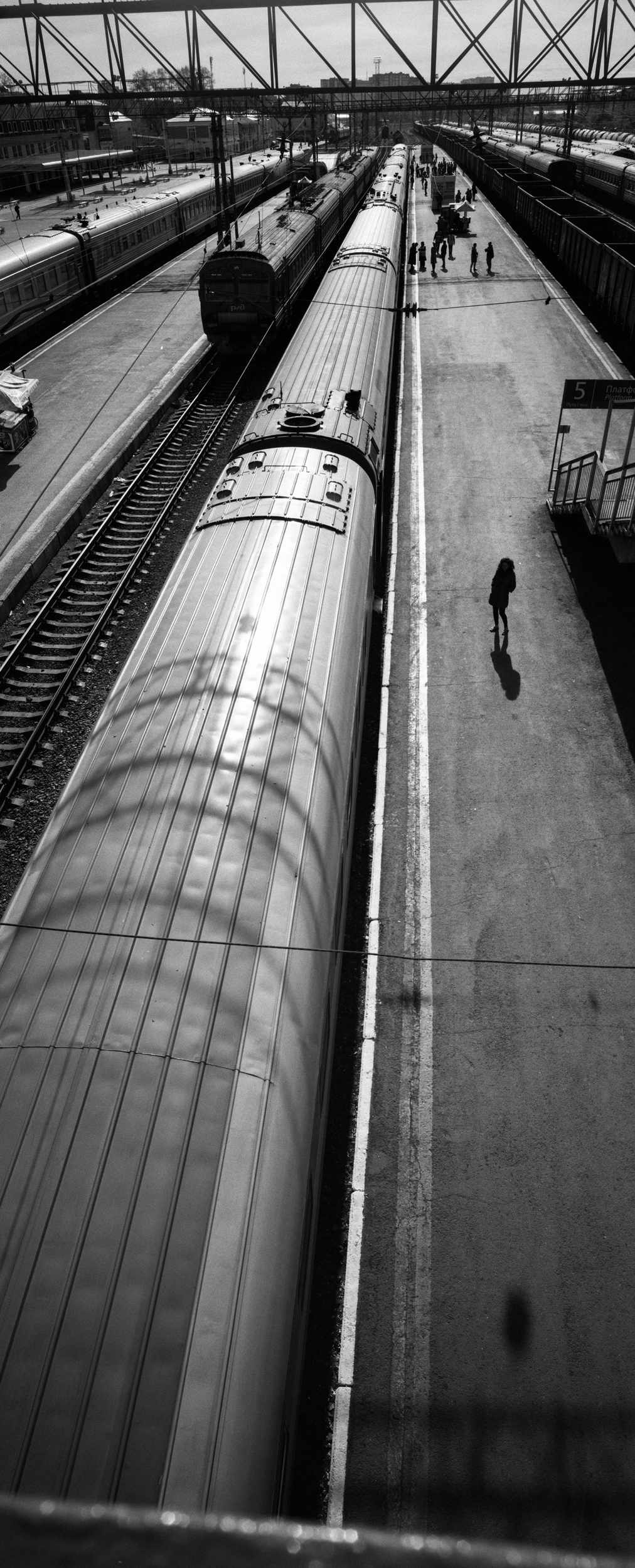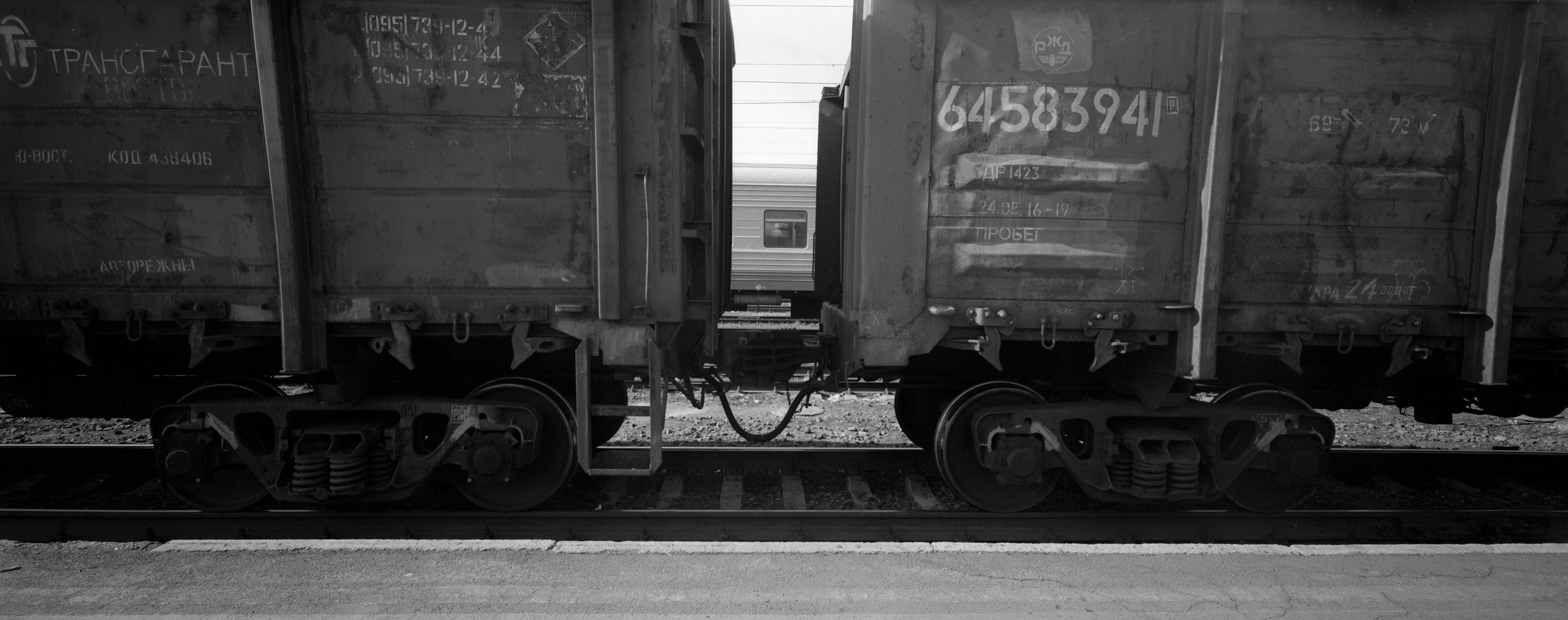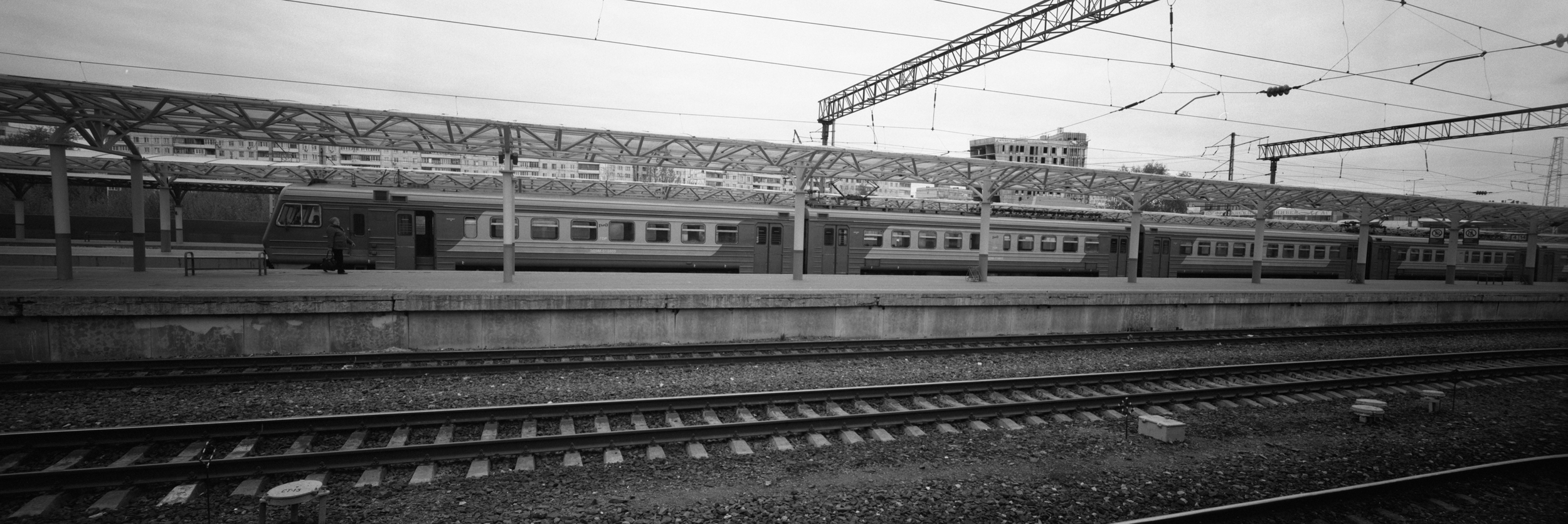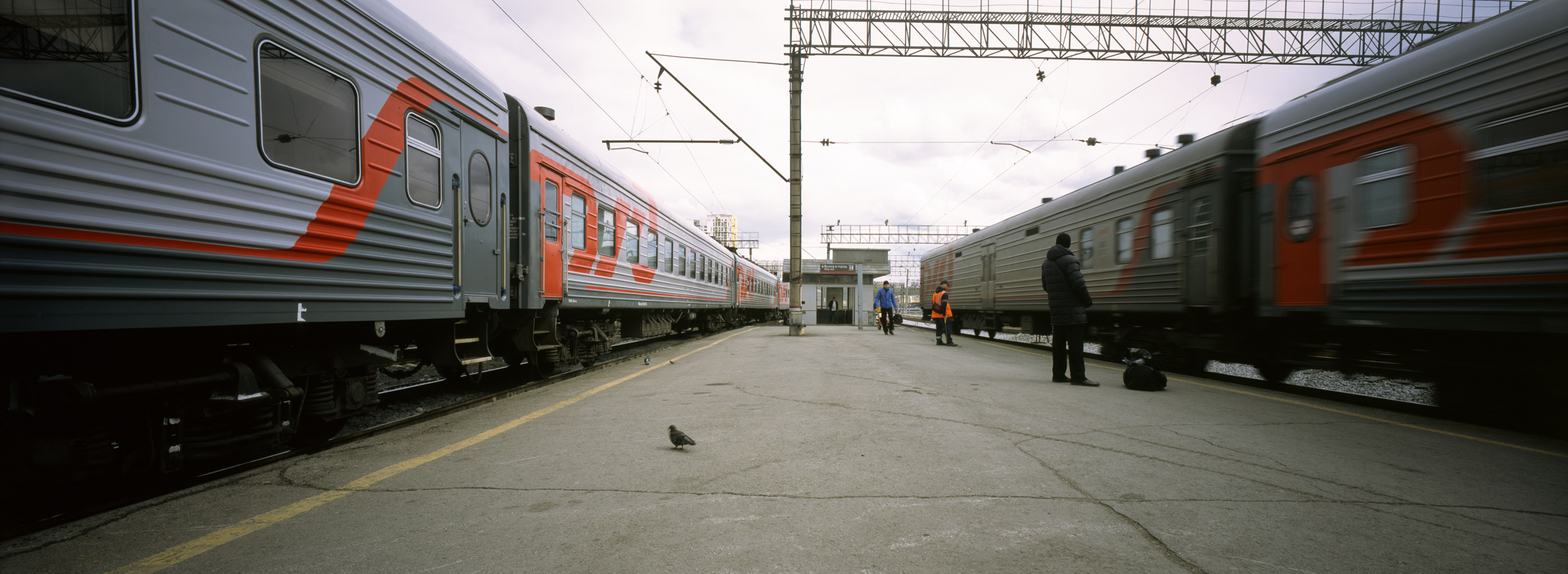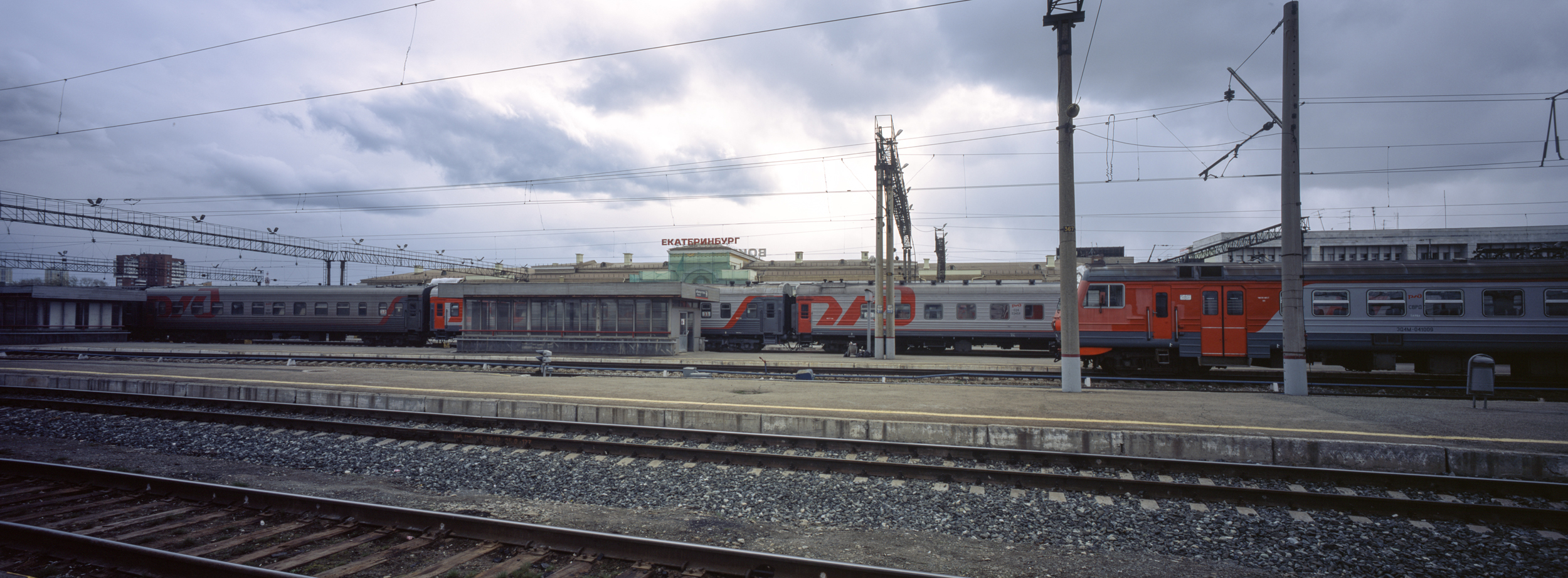The Trans-Mongolian: Beijing to St. Petersburg
Our route - excluding Moscow to St. Petersburg, as it would not work for some reason.
Years ago, I learned that a train ride existed that traversed Russia, from the extreme East to the Capital of Moscow, and on to St Petersburg if one so desired. One could even travel all the way to London if they desired. I would not say that I have a bucket list, but if I did, this would have been on it. We decided to put this trip on the back-burner until we had more travel experience under our belt. As a cost saving measure we would have to do almost all the planning and purchasing on our own.
Our original plan saw us doing this in 2015, with higher aspirations of doing the trip from Singapore all the way to London, but time constraints and other trips prevented this. We had then planned on doing the actual "Trans-Siberian" from Vladivostok to St Petersburg via Moscow, but decided on the route we took: Beijing to St Petersburg. This would afford us the opportunity to traverse the vast and barren Mongolia as well as much of China, while still seeing everything in Russia we wanted to see.
Our Train in Beijing
Fuji GF670w | Fuji Provia 100f
When we started planning, we soon realized that tickets for each train are not available until 60 days prior to departure, and with our visa applications for Russia being a big hold up, we researched some ways of buying the tickets early. RealRussia is a service based in the UK that offers a vast array of tickets for travel in Russia. Another site we found, based in Lithuania, was RussianTrains. They offered early purchases as well and are a bit cheaper, so we rolled the die and tried them.
Getting Our Russia Visa
You will need a visa when traveling to Russia, but to even apply for the visa you need a visa invitation, which is just from a company or hotel or party inside Russia saying you are coming. When you purchase tickets from Russiatrains, they give you a free invitation which lists the company name as well as where you are staying. When applying for the visa, you have to use this to fill out the gobs of paperwork required.
Out of the many visa applications we have filled out in our travel-heavy past, this was the worst. Our names, our parent's names, where we work, where we have worked, everywhere we have visited in the last ten years, passport photos, where we lived, the last place we lived, the list goes on. We filled it all out and opted to apply in person, as opposed to using the visa service they suggest, to keep costs down. Our visa, which is for three years and multiple entries, cost $270 dollars per person and took a week to process. That week was a nail biter as a denied visa means we would have to reapply and would lose our fee. In the end, all was good and we had our visas. We already had visas for China and did not need one for Mongolia. Unfortunately, our friend Matt traveling on an Irish passport needed to acquire a Mongolia visa.
Purchasing Our Tickets
The first train of our trip, light rail to Penn Station
Fuji GF670w | Fuji Provia 100f
Before we had applied for our visa, we purchased our tickets for the Beijing to Ulan Bator leg as well as our tickets for the Ulan Bator to Irkutsk leg of the trip. The people over at RussianTrains were amazing. They were beyond helpful and attentive, usually making us wait no more than a few hours for email replies, which I found to be quite reasonable given they were in a time zone 7 hours different than ours.
Our tickets were delivered to our hostel in Beijing and also our hotel in Ulan Bator. Our tickets were waiting upon our arrival in Beijing; our tickets for the second leg were delivered to Matt's hotel instead of ours - the only hang-up the entire trip. The service of RussianTrains was awesome and I would highly recommend them if you're doing a trip like this.
We booked a private room on the K3 out of Beijing at $473 per person and a hard sleeper (a shared room with Nate and Matt) at $171 per person out of Ulan Bator. One of the reasons we booked so early is because the K3 only leaves bi-weekly out of Beijing and we need to assure we had seats. Speaking with others on the train afterwards however, we could have waited.
Beijing Railway Station
P6x14 | Fuji Provia 100f
For the final leg of the trip, we booked directly through the Russian website, Rzd, their state-run railway system. The trains throughout Russia run more frequently, many run every day, some even twice a day, so the cost savings of purchasing "last minute" was worth the potential risk of not getting the exact train we wanted. These tickets were printable, so we printed them and brought them with us.
The First Leg: Beijing to Ulan Bator
The Security Scanners
Fuji GF670 | Ilford Hp5 at 1600
You can read my post about our stay in Beijing before starting the train here.
After spending the night in Beijing we got up early and headed out to our train, which departed at 11:22 am from the main station, which was only a few blocks away from our hostel. Actually finding our boarding area proved difficult as the station is massive, overrun with people, and extremely busy. At first we went to the wrong place, only to be herded out the door and into a massive set of lines, through the turnstiles, into a throng of people trying to also get in, through bag scanners, and finally into a large hall. Our train was on none of the boards that we could see. When we finally found it; into another massive hall we went. At the station, there are plenty of food options: noodle packs like ramen, as well as cookies, candy, drinks and other cookable foods. We got some snacks and drinks and headed to our boarding area. We sat down only to realize we could actually already board our train waiting on platform one.
Tourists boarding and our train information in the background
Fuji GF670w + Fuji Provia 100f
We filed outside and through the turnstiles to our platform, a platform I had been on before when we did a train from Xi'an to Beijing a few years prior. Most of the people getting on the K3, Beijing to Moscow, were tourists. People with hiking backpacks, young people and old, families and individuals. Our car attendant took our tickets and let us board, while Nate and Matt went off to find theirs. We had made it! Our train departed at 11:22 am, right on time.
Boarding the train in Beijing
Fuji GF670w | Fuji Provia 100f
Our room, room number 10, was spacious and covered top to bottom in red fabric. Our beds were on the right side of the room with a small table under the window and a small seat on the left. Between our room and our neighbor's was a small sink area where one could "shower" with the extendable hose and drain on the floor... we chose not to shower. The toilets were at each end of the car, a metal bowl with a plastic seat, not the worst train toilet I've ever seen.
The room next door was occupied by a British fellow, Shane, who was on his way back from Hong Kong to London. He had traveled to Hong Kong via train, making it a round trip. He was also getting off in Ulaanbaatar, not to visit but because the terms of his Mongolian visa stipulated that he could not "pass through", he had to get off for at least one night.
As our train left Beijing, we comfortably sat with our window shades open, chatting excitedly about what was to come. The views leaving the city wouldn't be considered "spectacular", but you do get to see parts of Beijing you might not normally see - part of the beauty of train travel. I spoke with Shane a bit while we were plodding along, hearing about his trip out and his return trip. His sister had taken the train with him but decided to fly back from Hong Kong, so he was going at it alone.
Hanging out in our deluxe room
Fuji GF670w | Kodak Portra 400
Zhangjiakou Station
Fuji GF670w | Fuji Provia 100f
Once we got out of the city, which took a while as Beijing is massive, we passed farm land and sparsely populated areas. We had one stop at what appeared to be a brand new station: Zhangjiakou. Our stop here was 18 minutes. We took on a few passengers here, but the bulk of our train loaded at Beijing.
We got into mountainous terrain, skirting a river for some time. This part of the ride was beautiful, with tracks on the opposite side of the river seeing trains headed the opposite direction. Around this part of the ride, we were told it was dinner time. We had free tickets for dinner - a nice deal considering that Shane said they were not offered dinner, even if dinner consisted only of rice and chicken strips. Carmen suggested we go down immediately to see what they were offering and eat now. I assumed that only deluxe rooms were offered the free meal, which was not the case. Carmen's suggestion turned out to be a good one, when we left we saw Nate and Matt waiting in line, a line that extended all the way into the next car's hallway. Nate and Matt were able to get their sweet delicious rice, chicken, and pepper strips after a 30 minute wait.
Through the mountains in China
Fuji GF670w | Kodak Portra 400
Out the window
Fuji GF670w | Fuji Provia 100f
The next major stop was the exit border of China, Erenhot. We pulled into Erenhot a couple hours after dinner, well after the sun had set. The border crossing is a very interesting place on the trip. Immediately after we pulled into the station, border guards boarded the train, checked the rooms, took our passports and buggered off; the border agent had an arm full of passports. They would open the passport, look at it, then put it on their arm, by the time they got to our car, their arm looked like a roof made of open passports on their arm. Passengers are allowed to get off the train, which Carmen and I did, where we also found Matt wondering about.
Our train in Erenhot, China
P614 | Super Angulon 58mm | Fuji Provia 100f
I shot a few rolls of film here through my panoramic camera as well as my GF670w. We spent an hour or more on the platform as the crew did some car changes. We were told we could stay on the platform for the next hour or get back on the train for the bogie swap, which is what we opted to do.
After we boarded, the train is then backed into a shop/depot, each car is cut from the train and left near some hydraulic lifts. Then, each car is individually lifted off its wheels, and new, wider wheel sets are put under the cars, all while you're on the train! In Mongolia and Russia, the train gauge is wider than that of China, which is why they replace the wheels. This whole process takes about 2 hours in total, at which point the train is taken back out of the shop and put back together.
Bogie change, Erenhot, China
Fuji GF670w | Cinestill 800t at 1600
Border Patrol leaving China
Fuji Gf670w | Fuji Provia 100f
Leaving Erenhot, China, we went about a mile down the tracks to the border of Mongolia, Zamiin-Uud. Another set of border guards enter, check the room, take your passport, and go do their thing. The whole process, exiting China, getting our wheelsets changed, and finally entering Mongolia took between five and six hours. As the border guards exited to the train and we were preparing to leave, a couple from farther up the train was pulled off. I assume they did not have the proper visa for Mongolia. According to Matt, Nate was fortunate enough to have slept through the entire border process. We went ahead and followed Nate's lead and went to bed with us in our private room and Nate and Matt in their peasant's room.
We woke up sometime in the morning as we were skipping along through the Gobi Desert, a barren place with very few towns on the way. At the border the previous night, our original diner car was replaced with a better diner car with full meals and a full dining staff. This car was decked out with ornate wood carving covered in what appeared to be gold leaf. Aside from the cooked meals, they also sold a few things one might need such as sodas, water, beer (which Nate and Matt took advantage of) as well as snacks and candy. The diner took Mongolian, Chinese, Russian denominations as well as Euros. The food on this car was a full menu of items ranging from salads to meat and chicken dishes. Matt and Nate both ordered food, which they let me have some. I thought it was tasty and filling.
Continuing on, we had a 25 minute stop at a station in Choir, Mongolia. At the station, people will sell you everything you might want on the train: noodles, soda, crackers, fruit, water, napkins and so on. Every stop we had allowed us to restock any food and supplies and had the added benefit of being able to get off the train and wander about. In Choir, Carmen and Nate followed the lead of many others and walked about 100 yards from the station to check out a statue. The statue is a commemoration of Jügderdemidiin Gürragchaa, Mongolia's first cosmonaut. I stayed behind to take some photos on the platform and spoke with Cheng as well as restocking on some food items.
Cheng | Choir, Mongolia
P614 | 58mm Super Angulon | Fuji Provia 100f
Our train in Choir
P614 | 58mm Super Angulon | Fuji Provia 100f
Choir was our last stop before Ulan Bator. My wife spent most of the ride in our room, reading, writing in her trip journal, or just enjoying the views. I spent most of the ride in the dining car with Nate, or in Nate and Matt's room playing cards with a Canadian we met named Max. Max's travels seemed to be even more exciting, as he was taking a six month trip from Singapore to Lisbon.
Riding the rails through the Gobi Desert
Fuji Gf670w | Fuji Provia 100f
By the end of our train journey from Beijing to Ulaanbaatar, we had been traveling for about 27 hours, including five or so hours at the border crossing. The first classroom was well worth the extra expense, and the views were unique and interesting. Traversing the vast and empty desert might not give sound interesting, but to me it was. We pulled in to Ulaanbaatar on schedule and left the train. We had a three day stopover, which you can read about here.
Ulaanbaatar to Irkutsk, Train 263
After our time in Ulaanbaatar, we embarked on leg two of our trip: Train 263. We booked a hard sleeper, as that was the only accommodation the train had to offer. With this booking, we had to share a room with Matt and Nate, which proved to be just great.
Our train to Irkutsk in Ulaanbaatar
Fuji GF670 | Agfa Vista 400
Our tickets to Irkutsk
Fuji Gf670w | Kodak Portra 400
We had our tickets and arrived at the station a few hours early. Our train, a massive one with 20 or so cars on it, arrived an hour before we were set to leave. Our car was the head car on the train. We grabbed some food for the ride while at the station and boarded the train. We did not have anyone from our original train on this ride, instead we had two Malaysian women, a gent from Croatia, and a few others whom I did not speak with. We left Ulaanbaatar on time: 8:40 pm.
The first evening of the ride was uneventful; we pulled out of Ulaanbaatar as the sun was setting and weren't able to see much of anything outside our window once the sun was gone. We did some chatting on the train and then all turned in for the evening.
The long wait at the border
P614 | Super Angulon 58mm | Kodak Portra 400
We woke up the next morning as a single unit, the rest of the cars has been taken off and dissapeared, at the Mongolia border. We arrived around 6:00 am, hours before the border even opens, so there was a lot of sitting around. Our car attendants, two women this time, told us we had two hours, so we wandered about, spoke with some fellows working on an engine, spent time in the room, and so on to kill some time. Eventually, border control got on the train and checked our passports. An engine then showed up, hooked up to our paltry one car train and took us about 6 miles across the Russian border and into Russia.
Border Check (this is my favorite photo from the trip)
Fuji GF670w | Kodak Portra 400
Matt wandering around at the Mongolia border
Fuji GF670w | Kodak Portra 400
Russia
When we arrived in Russia, the tracks were flanked with razor wire for the few miles before the actual border station. The border station itself, Naushki, was very large. As soon as we pulled in our engine was cut off and 4-6 border patrolmen entered the train. Some of the patrol came through and checked the room, lifting the seats and climbing on the bed to look at the storage above. The others were the passport control. Carmen spoke some of the few words of Russian she learned to the first one and he lit up! After she said "I don't understand" in Russia as he starting speaking quickly to her, he just chuckled and went on his way.
Russian border guards
Fuji Gf670w | Kodak Portra 400
The entry was an extensive process, the guards took our passports, scanned each individual page of our passport, looked it over with a loupe, then checked our visa the same way. The intense search had me so worried we were going to get denied. I worried for no reason as everything turned out just fine.
We had to spend another two or three hours at the station, so we decided to head across the street to check out some local shops. As I walked out of one small shop, this woman said something to me, asking if I wanted something. Nate came over to investigate and when he turned around he was holding this hot fried dough thing with meat in the middle. Color me jealous and hungry, I went over and got some for myself, so did Matt, and wouldn't you know it, she had something for Carmen, a potato version! The mysterious food from the lady's bag was delicious! I have since learned that they were pirozhki (fried dough with various fillings), or at least, to the best of my knowledge they were.
Close by to the station and the lady with the food bag was a small park with some walking paths. We did not want to wander too far away from the station as our attendant did not give us clear indications of how long we would be here.
Cows at the train station, of course there are cows
P614 | Super Angulon 58mm | Kodak Portra 400
Mislav watching the world skate by
Fuji GF670 | Ilford HP5 at 1600
Apparently we were held up waiting for another train heading towards Mongolia to show up. When that train arrived, their engine and two cars broke off, hooked up to our train, and we were ready to go. Within an hour, we were on our way. Our Russia portion of the trip had officially started. The bulk of this ride was uneventful, skirting a few lakes and mostly desolate plains. Matt, Nate, Carmen, and I did have a really good time together, though. We spent time watching movies on my laptop and walking the length of the train, three entire cars. I was able to speak more with Mislav, the gentleman from Croatia, as well. We spoke about normal things, what we do for work, where our next trip might be. Just like the trip from Beijing to Ulaanbaatar, the really nice thing about this section of the ride was that the windows open and I was able to take photos out the windows.
We took a major stop in Ulan-Ude before reaching Irkutsk, where our train gained more than 10 additional cars. Our train pulled in and I got off as soon as we stopped. Even though I was awake for this entire stop, I looked back and our train was somehow over 10 cars longer. I have no idea when the cars were added without me noticing, as surely it would have taken some time or I would have heard it. I assume they backed the cars up to ours as soon as we pulled up and I just didn't notice it. The stop in Ulan-Ude was quite late into the night and a very brief 30 minutes long. Nate and I bought ice cream from a stand, Matt also bought beer for himself and Nate. Nate bought entirely too much ice cream, so we really had to jam our way through that quickly. We jumped on the train, pulled out of Ulan-Ude and we all went back to sleep.
30 minute stop in Ulan-ude
Fuji GF670 | Ilford HP5 at 3200
Our train arrived right on schedule in Irkutsk at 1:30 am. While the trains were running on time, the problem that arose involved the time change. In Russia, all the trains operate on Moscow time, which was five hours back from our current location's time. In actuality we arrived in Irkutsk at 6:30 am, still right on time.
It was raining upon our arrival and I was glad that, not only did my bag have a rain cover, but I also decided to bring my rain coat with me. Like most Russian train stations, it is a massive complex. We made our way through the station and into the city. We had a 3-day stopover here, which you can read about here.
Detraining in Irkutsk in the rain
Fuji GF670w | Kodak E100gx
Irkutsk Train Station
Fuji GF670w | Kodak E100gx
Irkutsk to Moscow: Train 001m
After our time in Irkutsk, Nate, Carmen, and I got back on the train. Matt decided that he wanted to spend more time in Irkutsk and so we parted ways. He decided to stay an additional day. When we left, he mentioned that he wished he'd booked with us and left after three additional days.
Our train in Irkutsk, 001m
Fuji GF670w | Kodak Portra 400
This train was even nicer than our train out of Beijing. We booked a deluxe room again. We chose this train, train number 001m, because it was the only train with deluxe. It only runs on even-numbered days, so we opted to not get off this train until we reached Moscow. I would have loved to get off in Yekaterinburg, if we had gotten off, we would have had to wait an extra day to get back on this train, which would have cut into our time in Moscow and St Peterburg.
Our room
Fuji GF670w | Kodak Portra 400
Our room had only two beds, this time they were across from one another instead of bunked. We had a tv in the room, but it only had three channels, none of which were working. The room also featured four different lights, a small table, and a key card lock. We also had a plug for our electronics - score! Just like every other car on our trip, this one also had a samovar (a water boiler for things like, tea, oatmeal, ramen, etc.). It also had two of the nicest toilets I've ever seen on a train. The next car down, which was also first class, had a shower that cost the equivalent of $1.50.
Our train left out of Irkutsk, 11:15 am Moscow time, 4:15 pm Irkutsk time. Our first stop was a mere 5 minutes later at a second Irkutsk station. Around this time, we were told that we had one free meal for the ride, which we opted to take about an hour after departure. We figured if the food was good, we would want to know sooner than later in case we wanted to buy food again on the ride. The food turned out to be pretty good, plus it was delivered to our room. The meals were about $6.00 per person and there were vegetarian meals available as well.
The first night on this train was a relaxing time coupled with a good sleep. We had a few stops overnight, though I did not get off the train. However, I did get off the train at the first major stop at Krasnoyarsk. It was a large station and we stopped for a little more than ten minutes. There was one stall on the station but it was closed - no soup for you! Our train took on a lot more passengers, including a guy who I talked to the next day. I believe Nate's room filled up here with a family of Russians. He spent some time in our room over the next few days, or we hung out in the dining car getting food. Silly little Nate did not seem to get off the train much.
Our new engine in Mariinsk
P6x14 | Super Angulon 58mm | Cinestill 800t
Most of the station stops were short, between five and 10 minutes. The longer ones allowed us to get off the train to take photos and find some food, usually noodles or oatmeal, food that can be prepared with hot water. At two stations, Mariinsk and Vladimir, we changed engines. Most of the stations in Siberia had snow, much like most of the ride.
Andrea. There is a lot of time to watch the world go by
Fuji GF670 | Kodak Portra 400
Our car had a couple from South Carolina, Bill and Andrea, who were on a 66 day around-the-world adventure. They started their trip where the true Trans-Siberian train starts, in Vladivostok. They had a few day stop in Irkutsk to do laundry, get some nice meals, and just take a general breather. This is where we met them. After Russia, they would go off to Namibia, then back to Poland, onto Peru and then to the Amazon. They were extremely nice folks and you can read about their adventures here. Bill had a penchant for getting beer and filling his plastic bag up with snow to keep them cold. I really enjoyed having them on the train with us. They spent much of their time in their room updating their blog and watching movies.
We also had another couple from the UK who had sold their company and were traveling around the world. They were about my age and were jealousy-inducing. Like Bill and Andrea, they started in Vladivostok, however, they spent a few days in quite a few cities: Chita, Ulan-Ude, Irkutsk, and Yekaterinburg, which is where they got off the train. Their plans saw them headed to the US for a wedding after their train trip.
While I did really enjoy taking the deluxe car, the interaction with people is not as high as in the other car. With a private room, you tend to spend a lot of your time secluded. I did spend quite a bit of time in the diner car with Nate, for food, but also because it was a great place to sit comfortably without being in a room.
The views throughout this ride were very similar to before: birch trees, snow, and wooden houses. It was not the most scenic train ride I have ever been on, but it was still wonderful to see. The small cities we traversed were quaint, with Ladas at most houses. The rails were also very busy with passenger trains zipping in opposite directions regularly, passing freight trains at a fast clip, and track workers all over keeping the rails in operational order.
Our car attendant on the left, the other deluxe car's attendant on the right
Fuji GF670w | Kodak Portra 400
Our car attendant on this ride was a lady who we could comfortably describe as "cute". In her 50s and the build of a shot-putter, she spoke very little English, but her smile was a universal language. She made sure our room was vacuumed regularly and the samovar was topped up. She would alert us to stops and how long they were. At one point she opened the door on the opposite side of the train from the platform so I could take a photo. She had little trinkets for sale as well, including very nice podstakannik, which is a tea glass and metal holder with a handle. My wife bought one that has the Trans-Siberian on it.
Aside from the noodles and food we bought for the room, I ate proper meals in the diner car with Nate. The car was nice, the crew attentive, and the food was pretty good. The portions were small, though. One of the women working in the diner car was on her first trip as a rail worker. She spoke wonderful English and she was a very pleasant person to accompany us on the train. The other diner car attendants listened to American pop music each time we were in the car.
The train ride, through snow and rain and sunshine, day and night, took about 75 hours, or a little over three days. We arrived at Leningradsky station, which is in the northeast of Moscow. Like our last two stops, we had three days to enjoy Moscow.
Moscow to St Peterburg: High Speed
If our first three trains were a slow and meandering way to see the countrysides of China, Mongolia, and Russia, the last train we took was a modern way to zip between Russia's two major cities. Our tickets for this train, the Sapsan, were purchased the day we arrived in Moscow. This train was the most uncomfortable as well, having seating that is similar to an airplane.
Our Sapsan Train
Fuji GF670w | Cinestill 800t
We departed from Leningradsky station, the same one we arrived in Moscow on the 001m. Our train departed on time, as every other train we had taken thus far did. Our entire ride took us four hours, with two stops of only three minutes each. The Sapsan, while less comfortable, was a nice change from our previous trains. At this point in our trip, we just wanted to get where we were headed. There was wifi on this train, though it just was not very good. We arrived in St Petersburg, our last city, at 2:50 pm. We only had two days here, which you can read about when I write about it.
Our entire trip, well over 4000 miles by rail, had not a single problem or issue. All of our trains operated on time, the views changed from heavily populated and smoggy Beijing to beautiful mountain sides and rivers. Leaving China we were met with desolation and desert in Mongolia, the least densely populated country in the world. We saw snow, the largest and oldest lake in the world, birch trees and Russian architecture. We enjoyed the company of many diverse and unique people, and spent time with good friends. This trip had always been number one on my list of trips to do and now that I have done it, I want to do it all over again. Anyone could find enjoyment on a trip like this, and I'd suggest you do.
